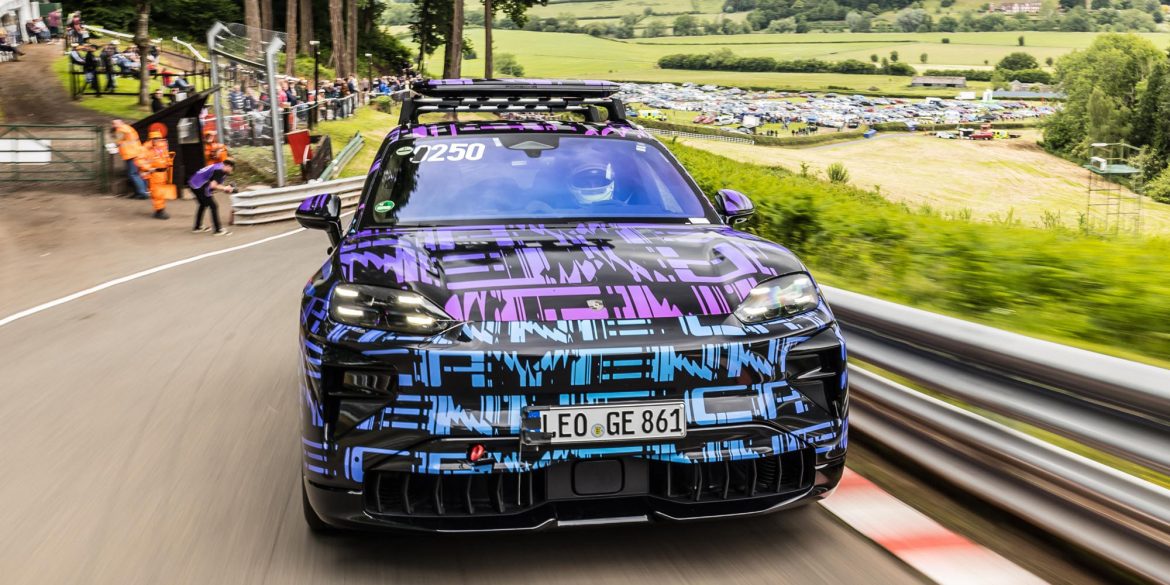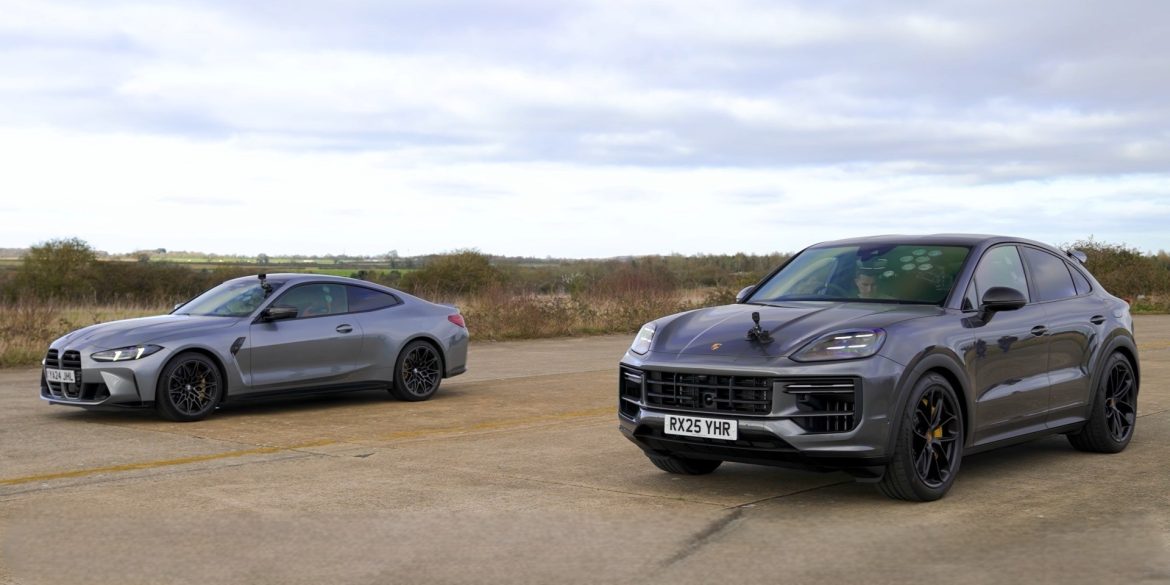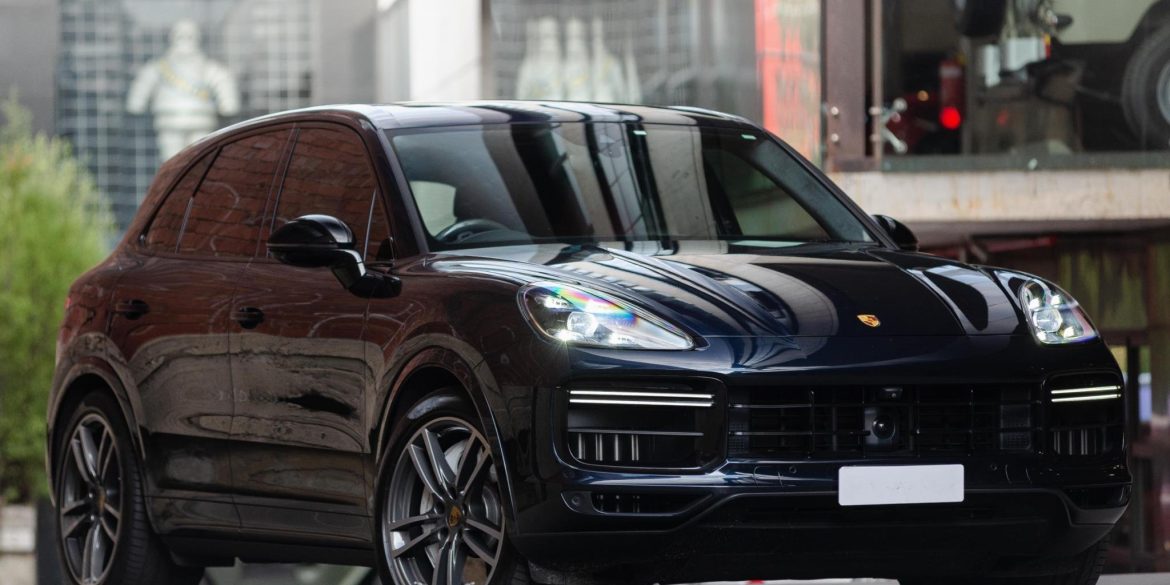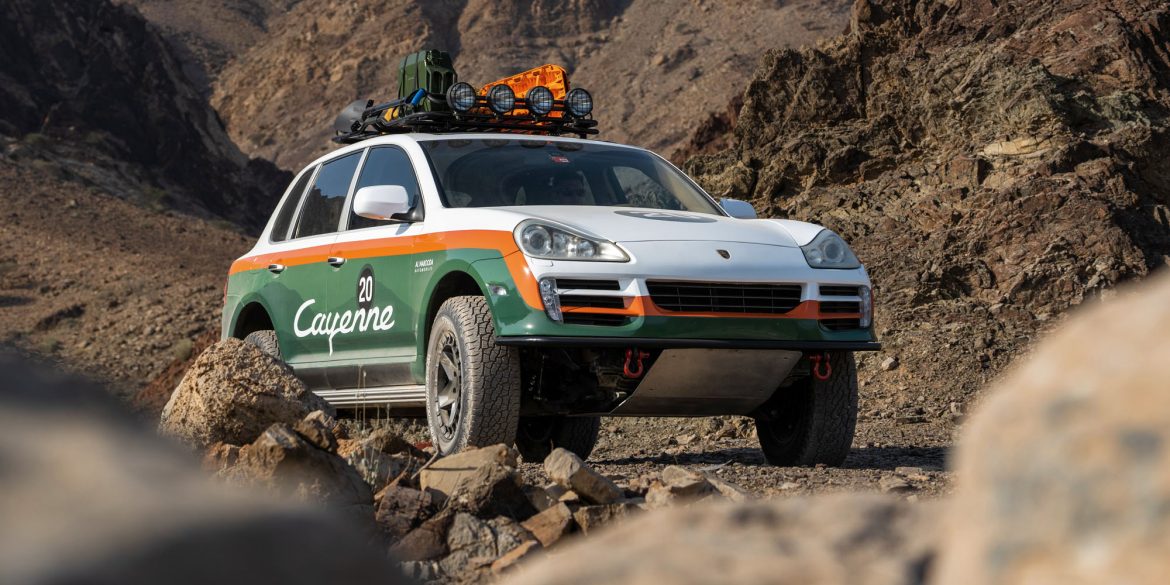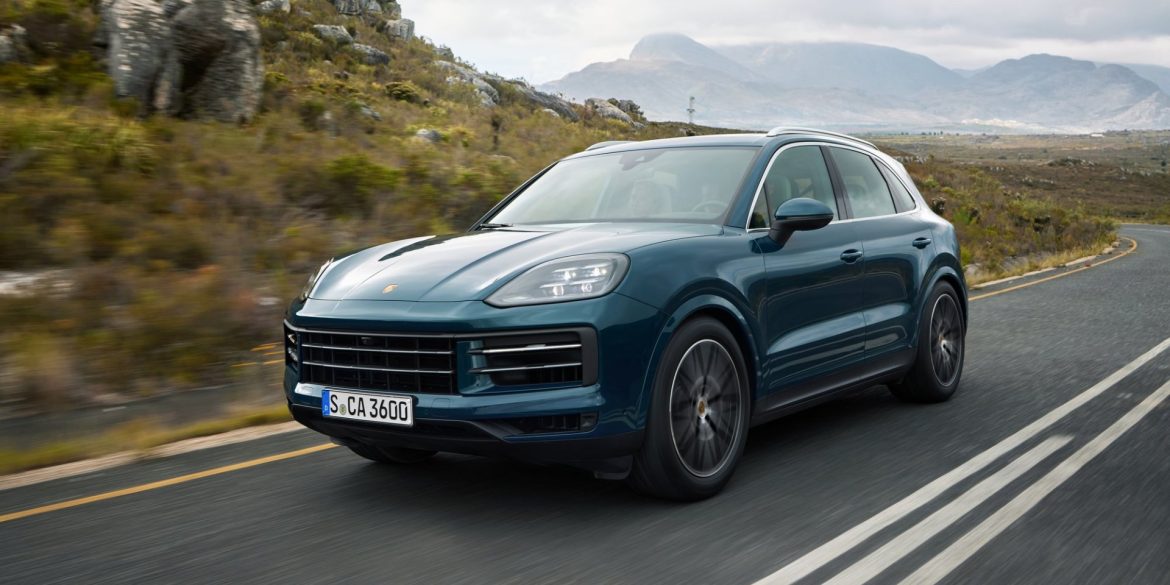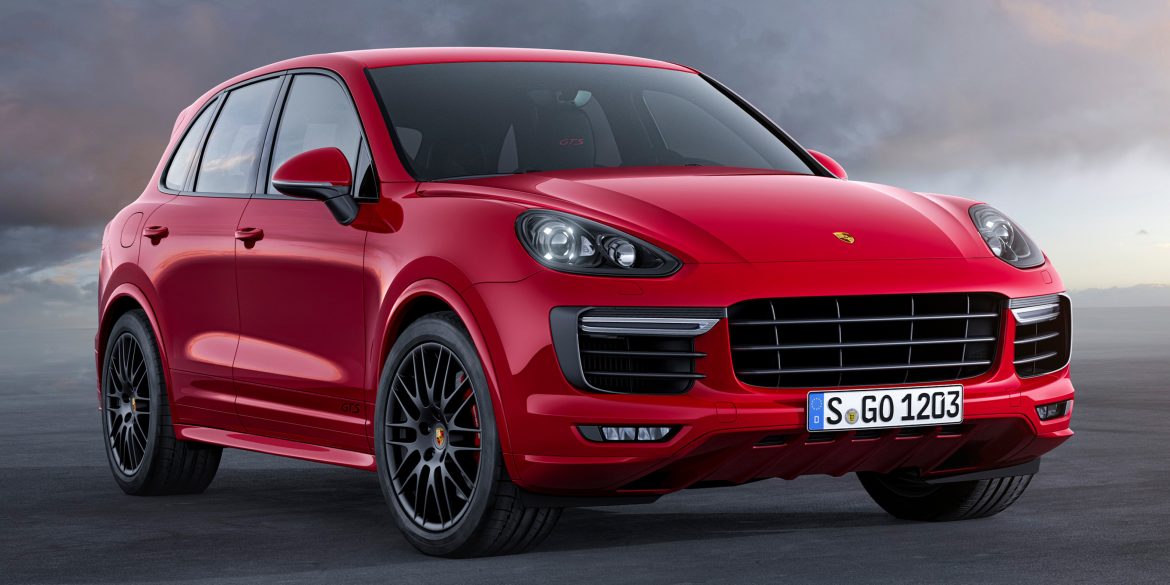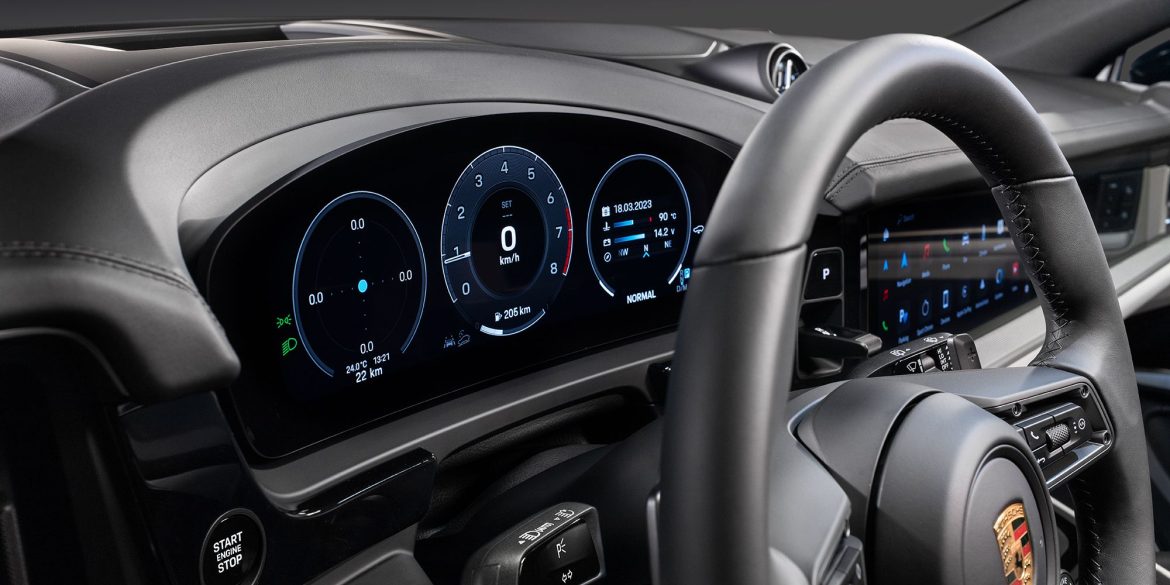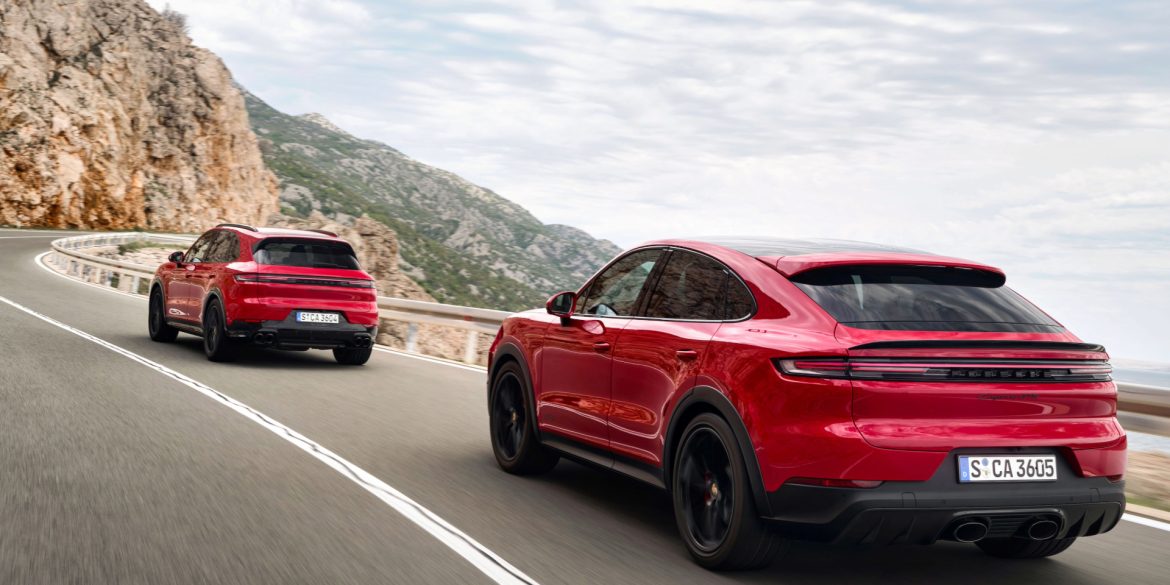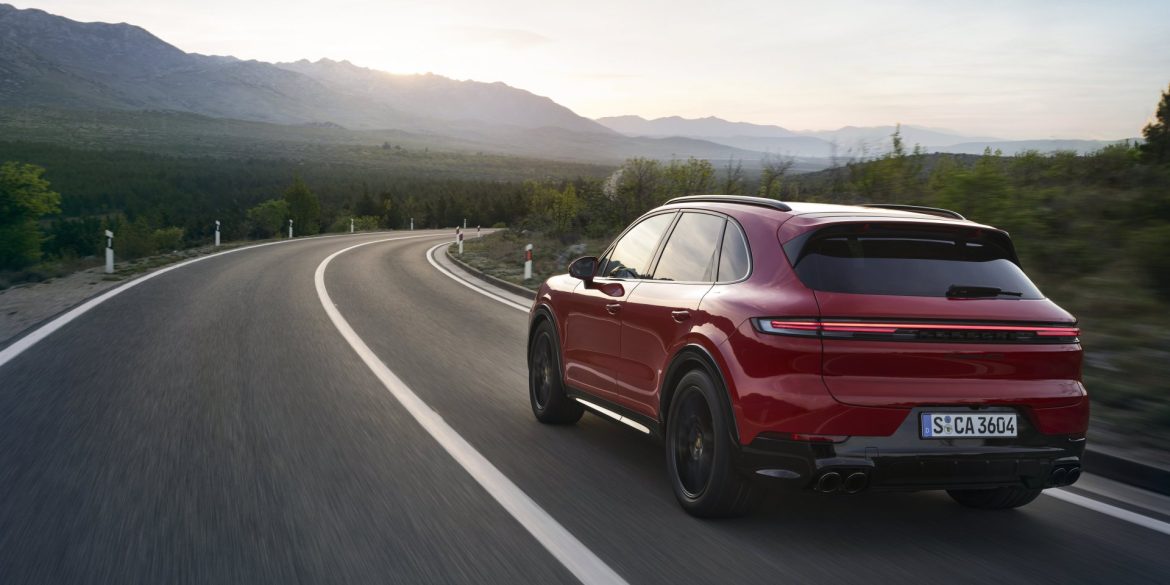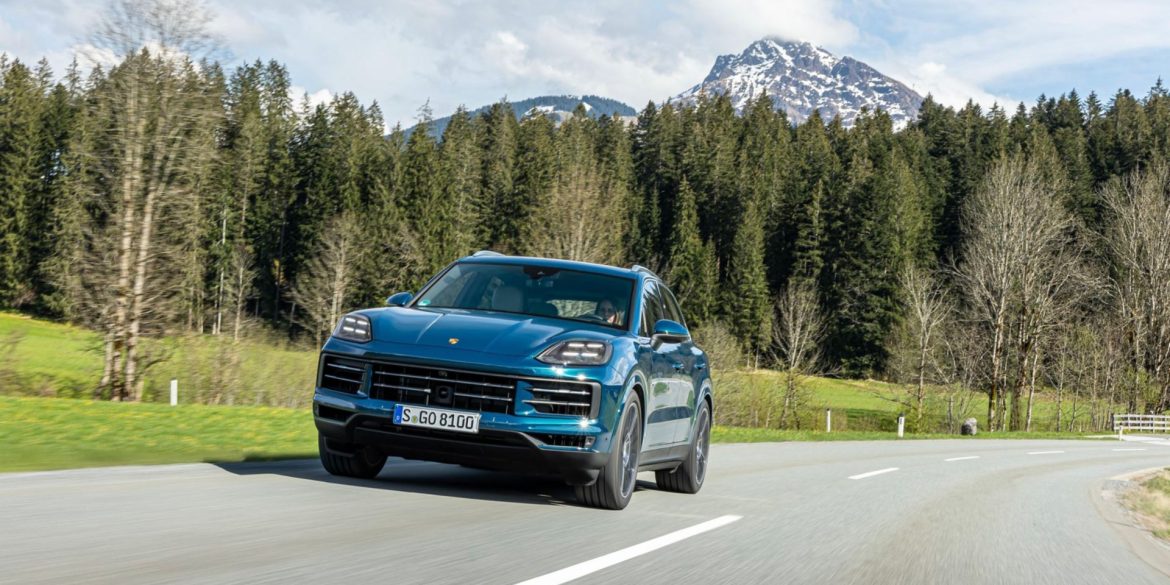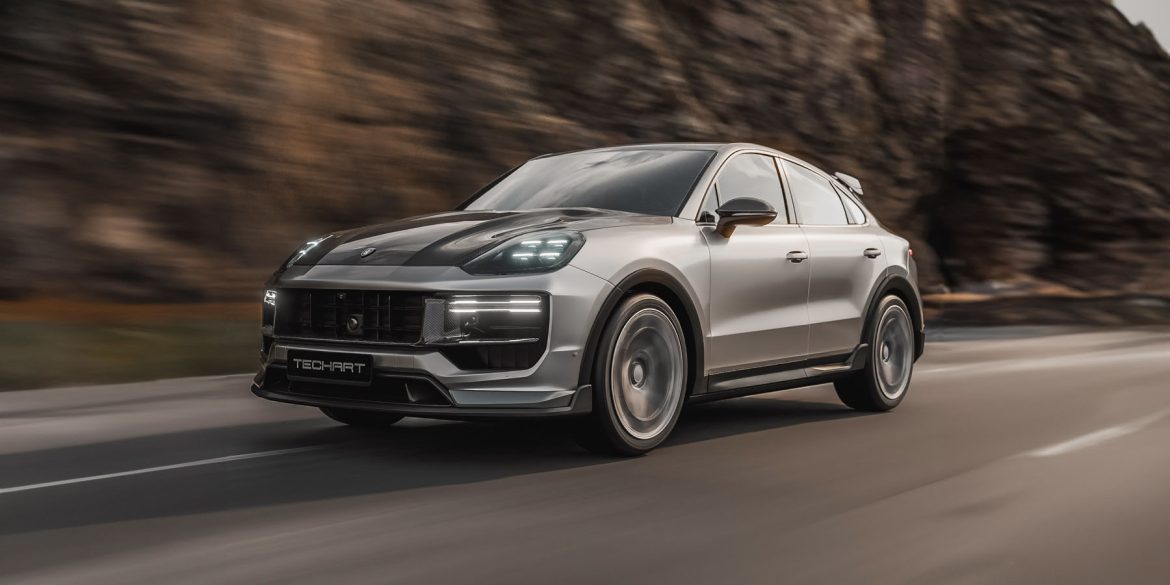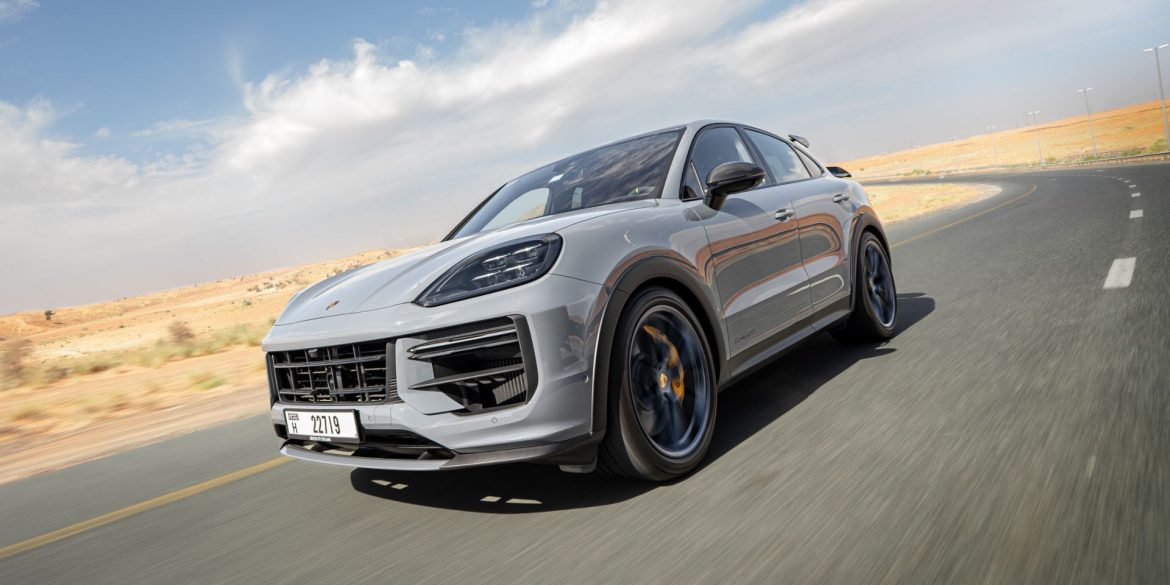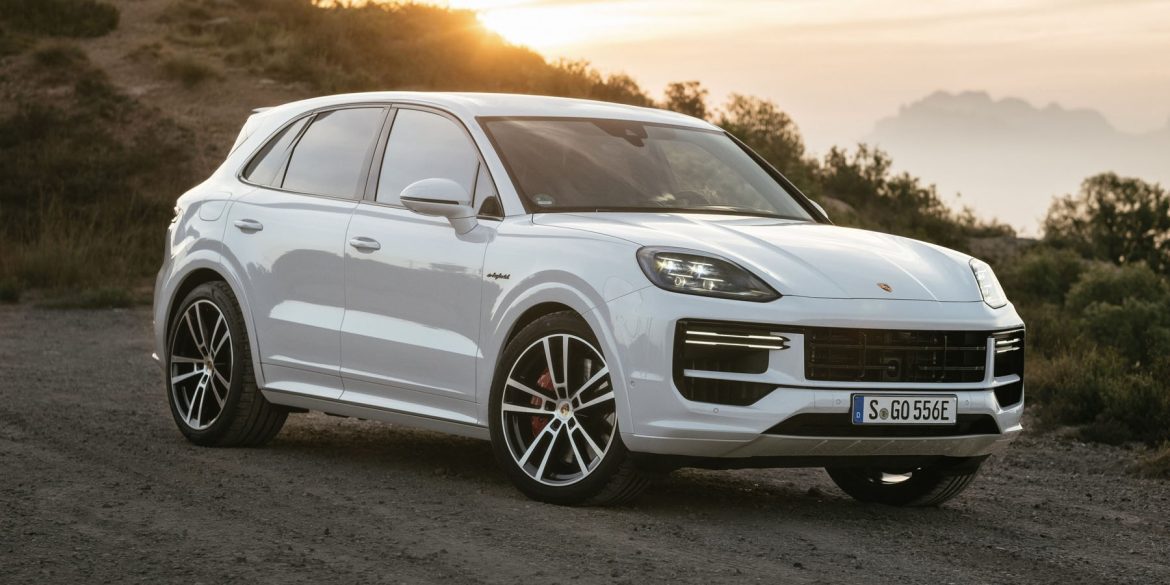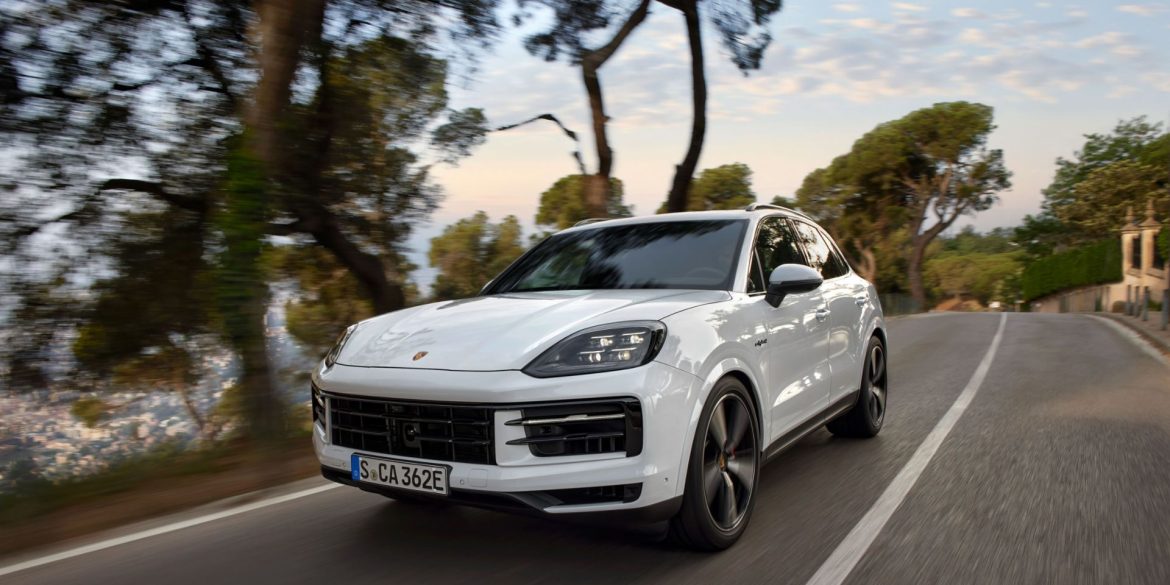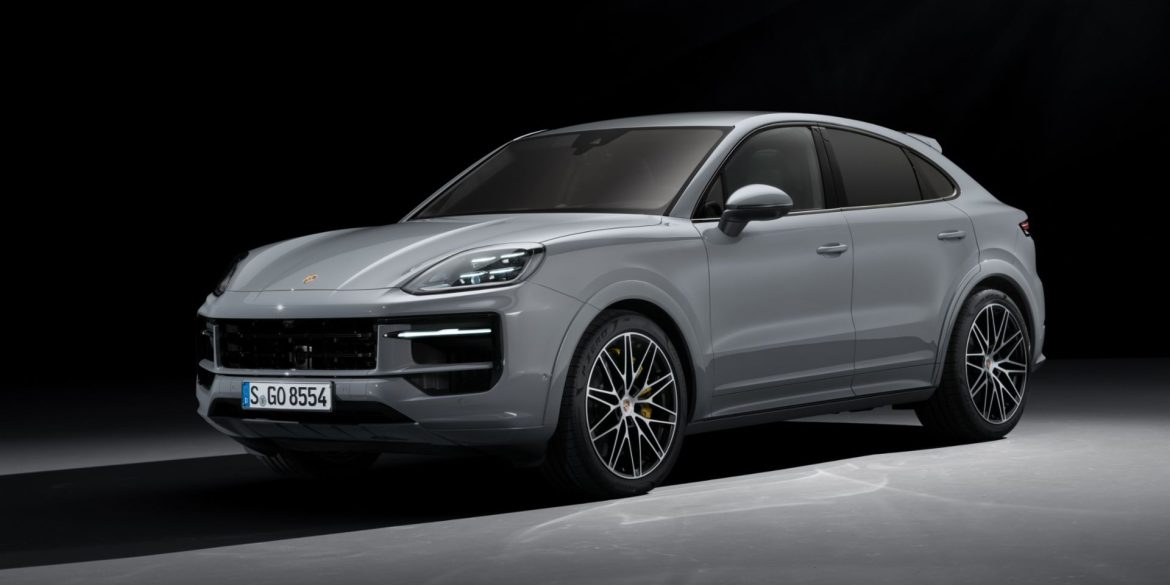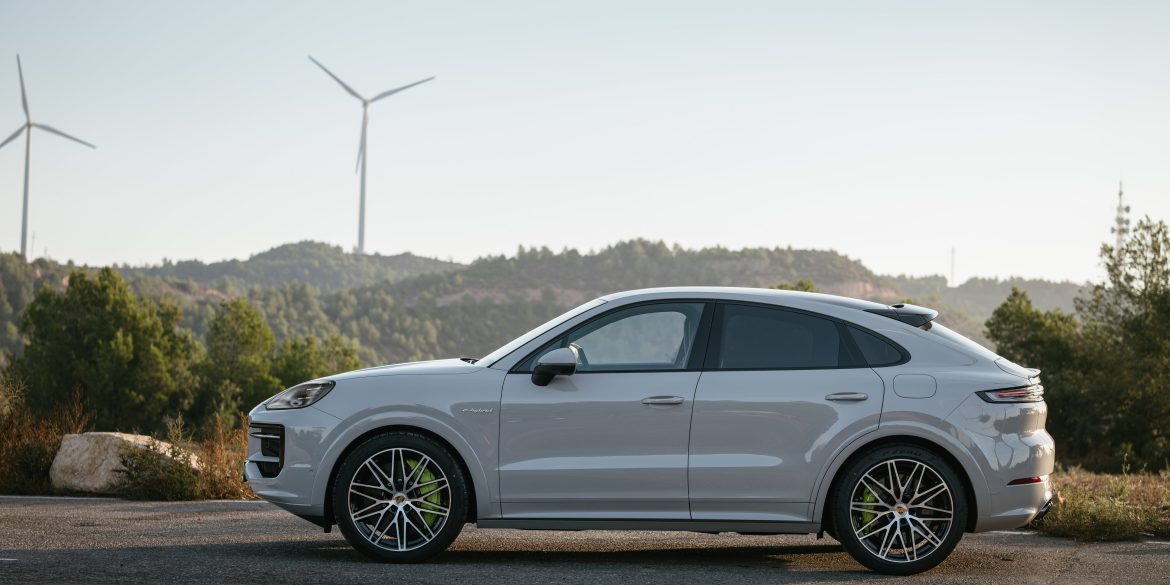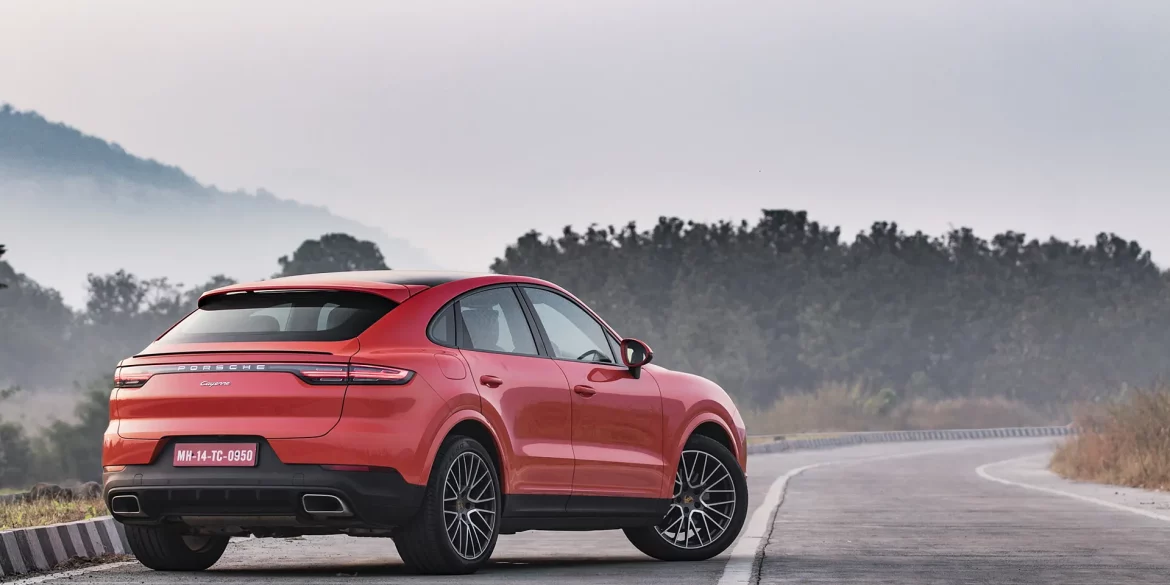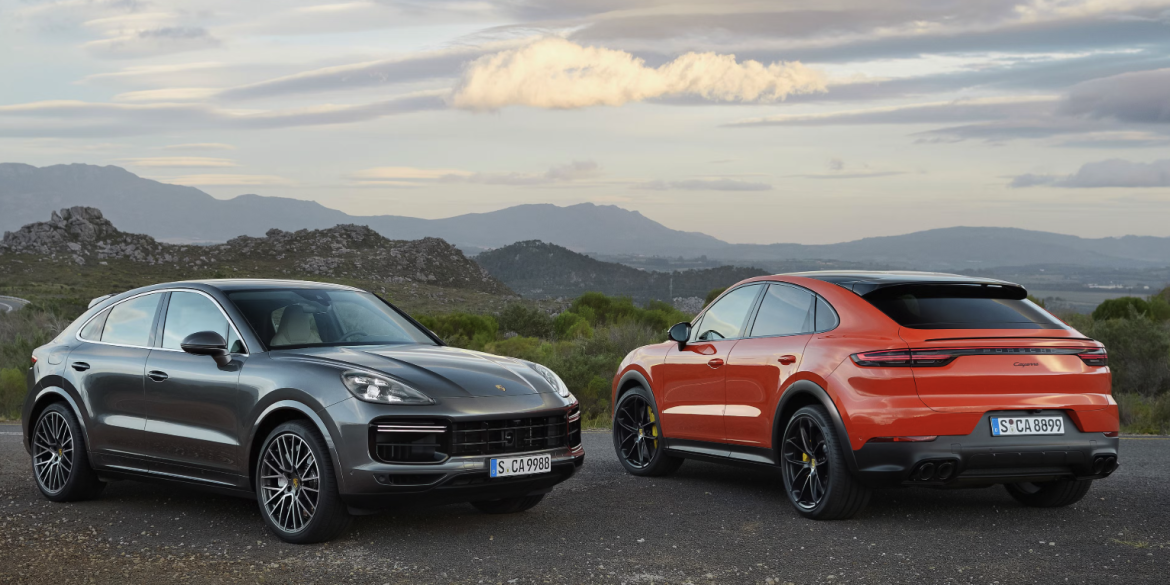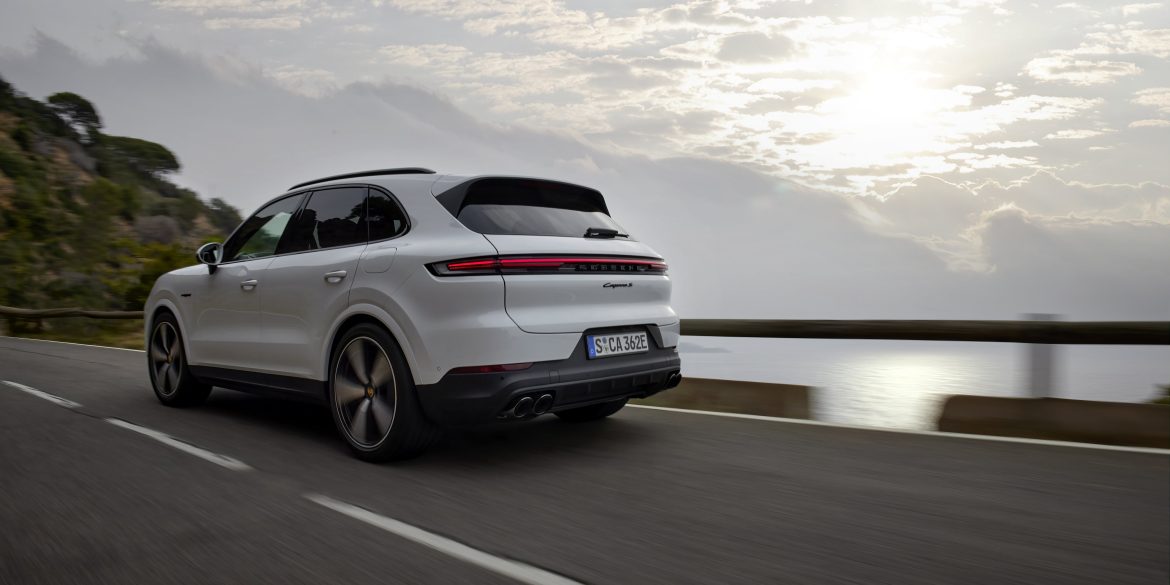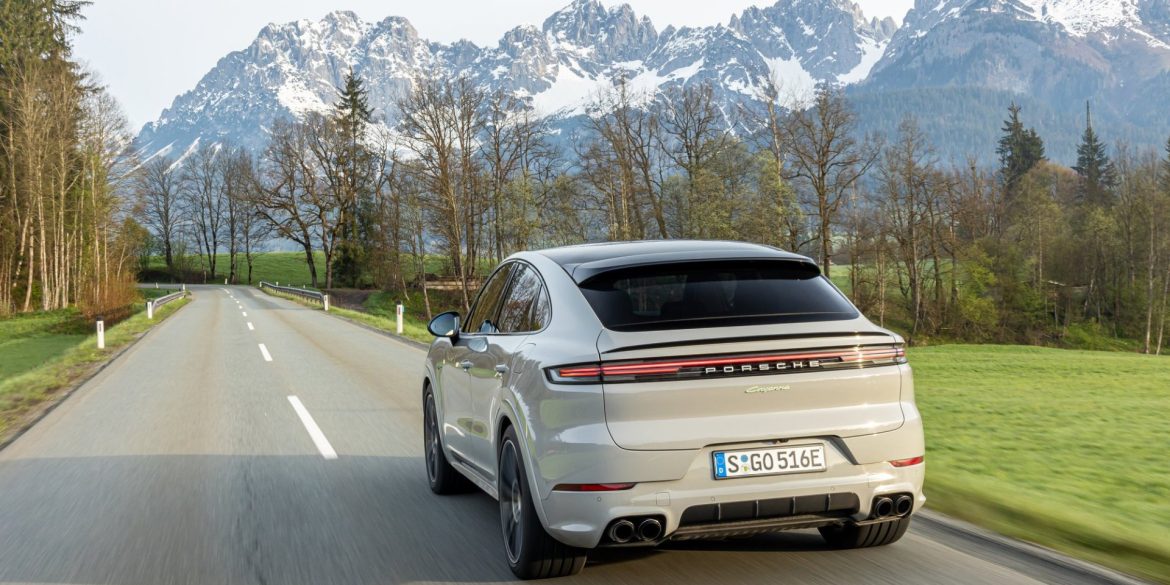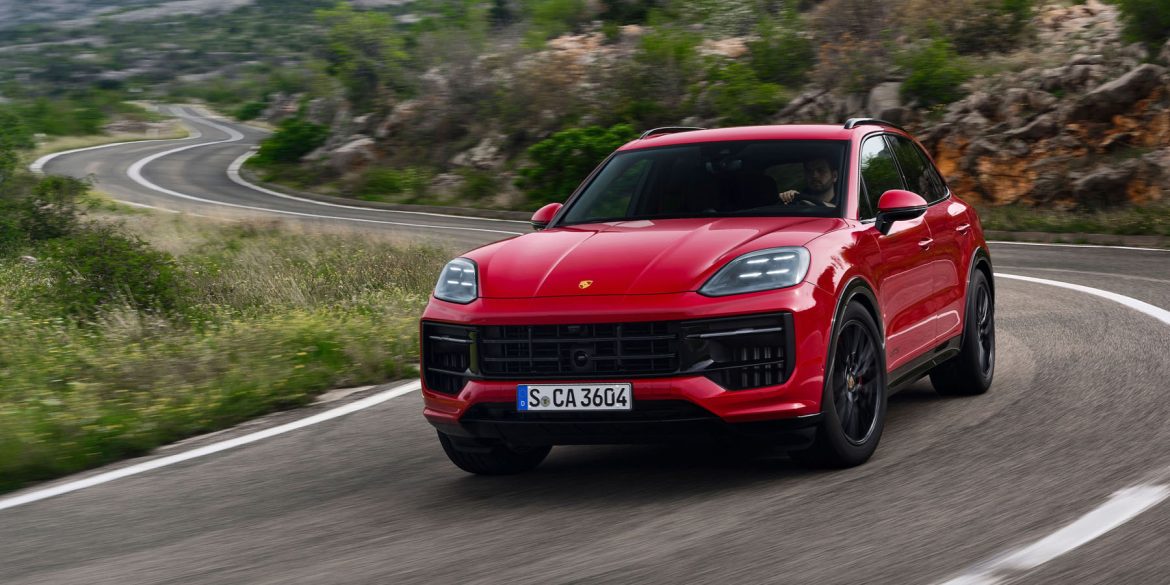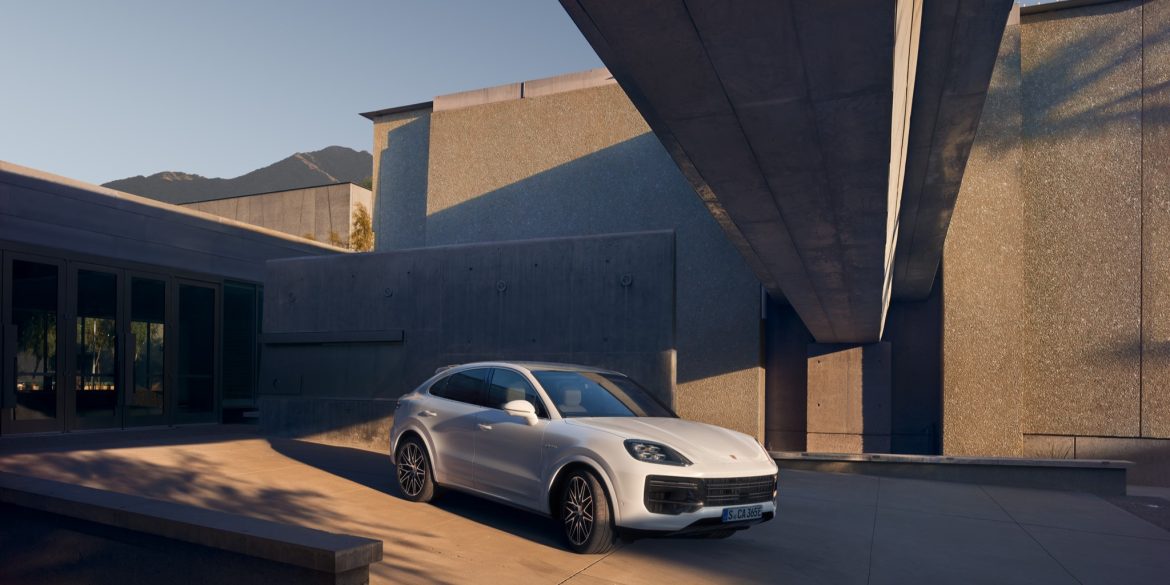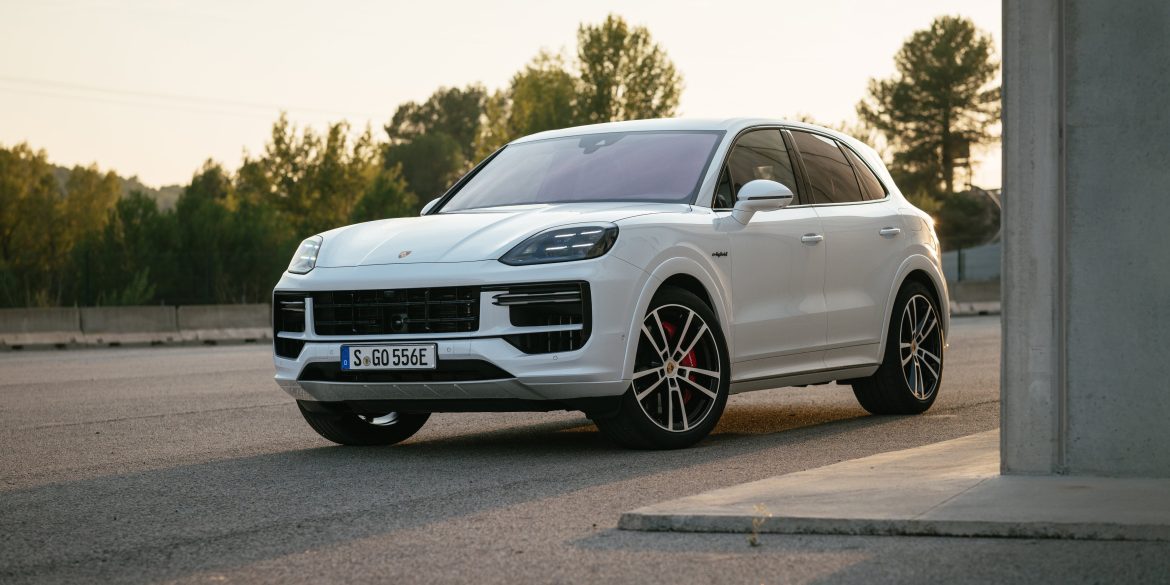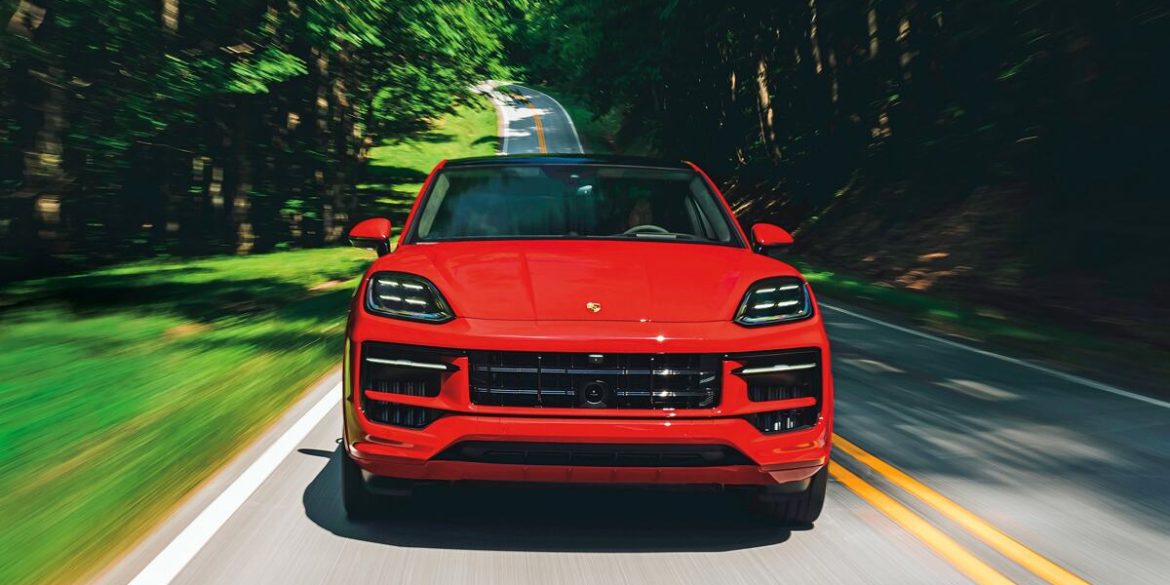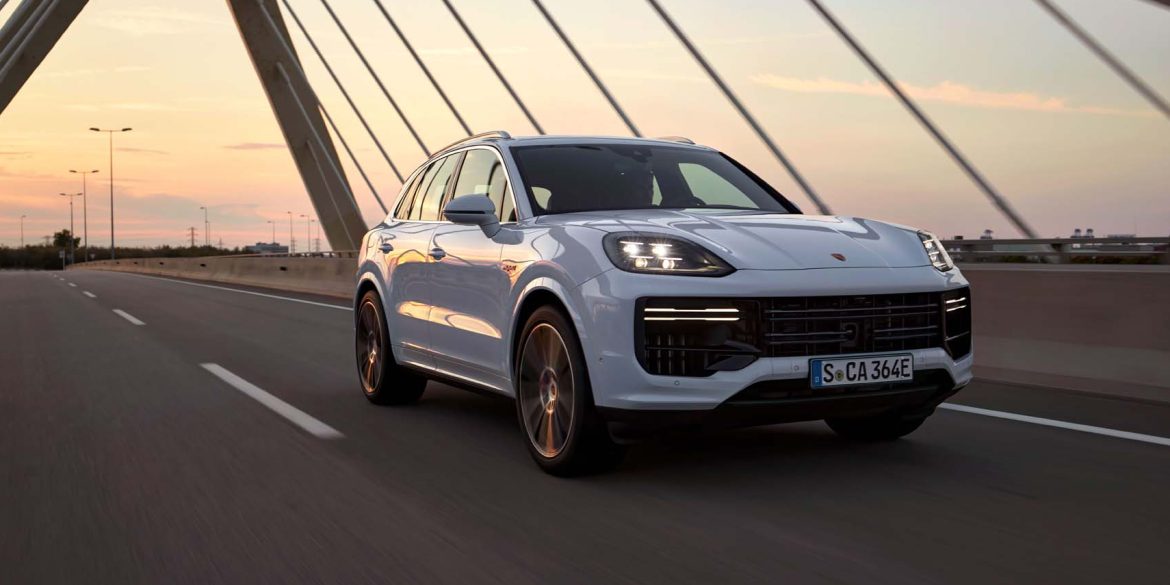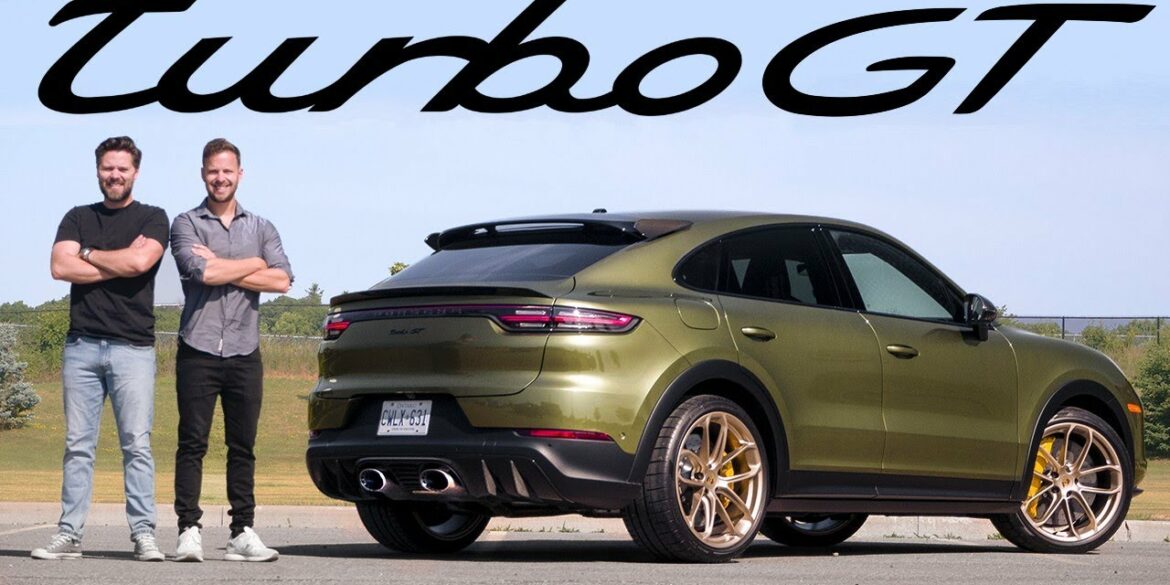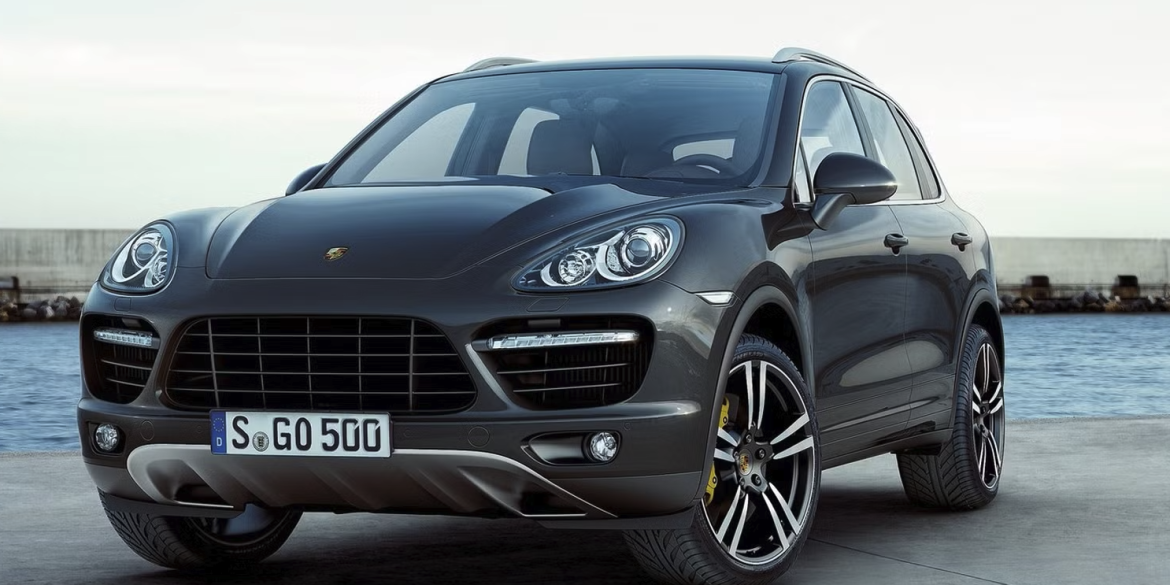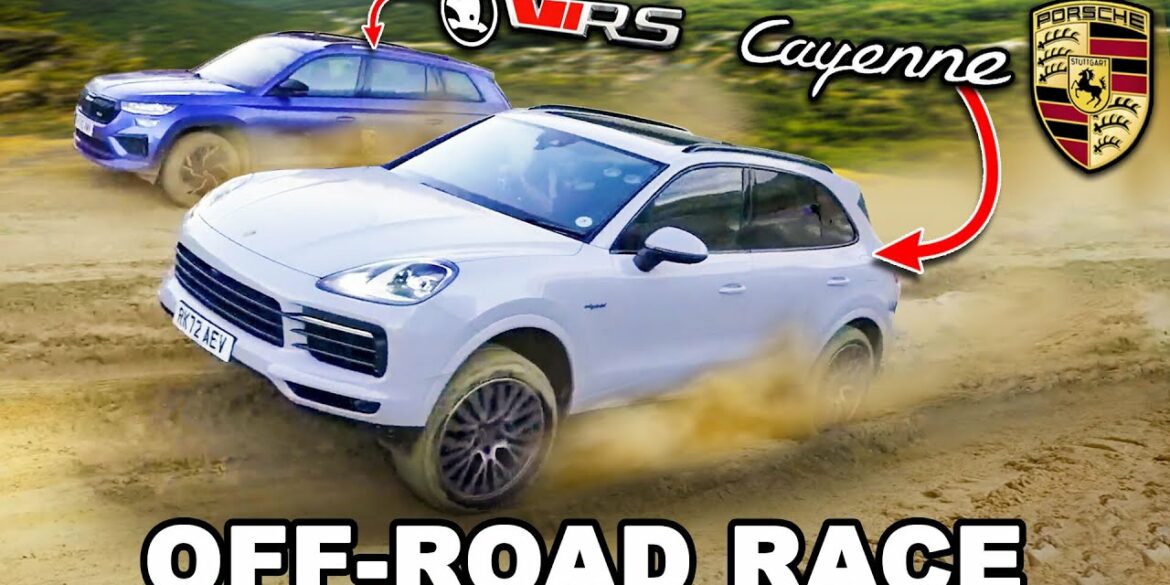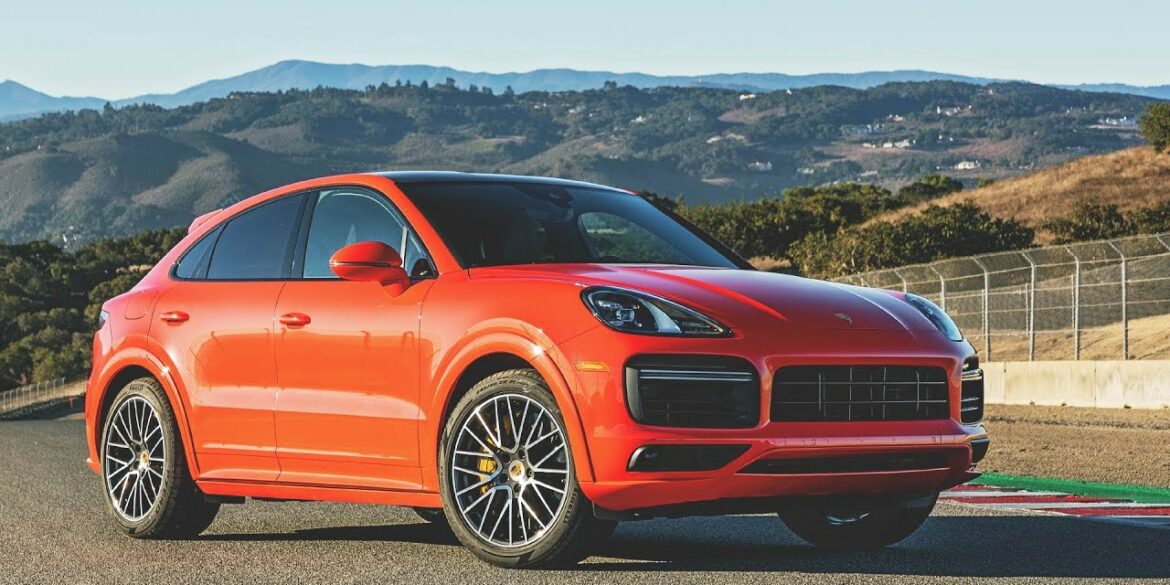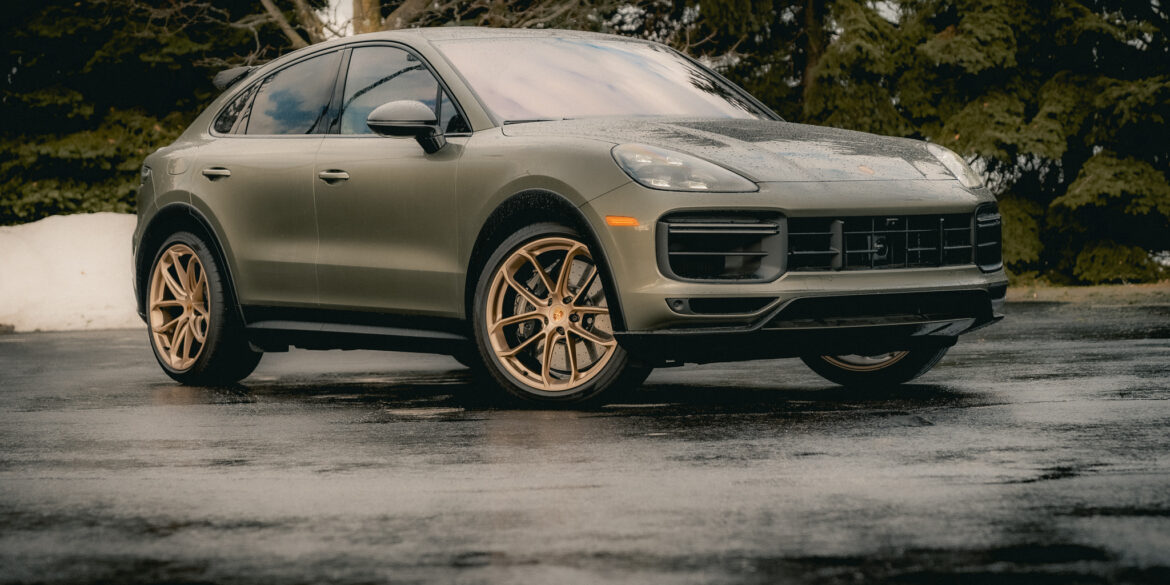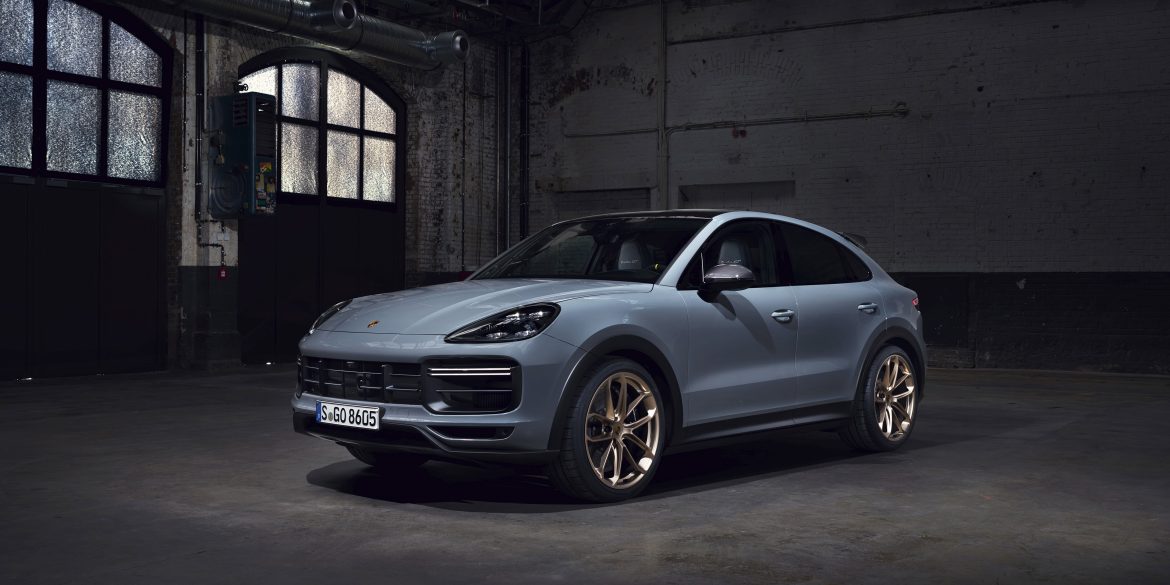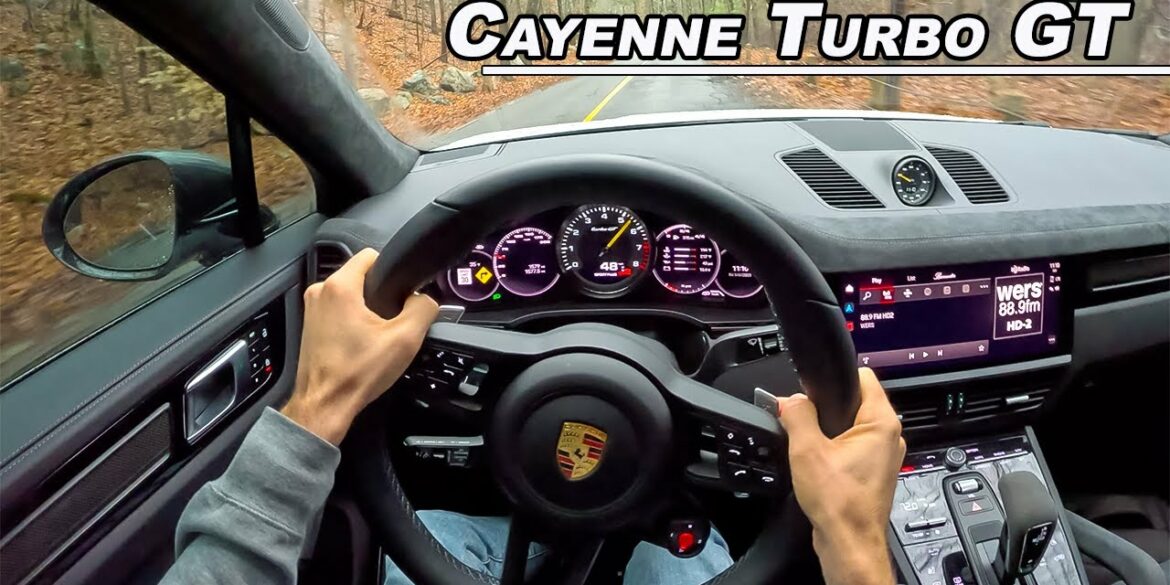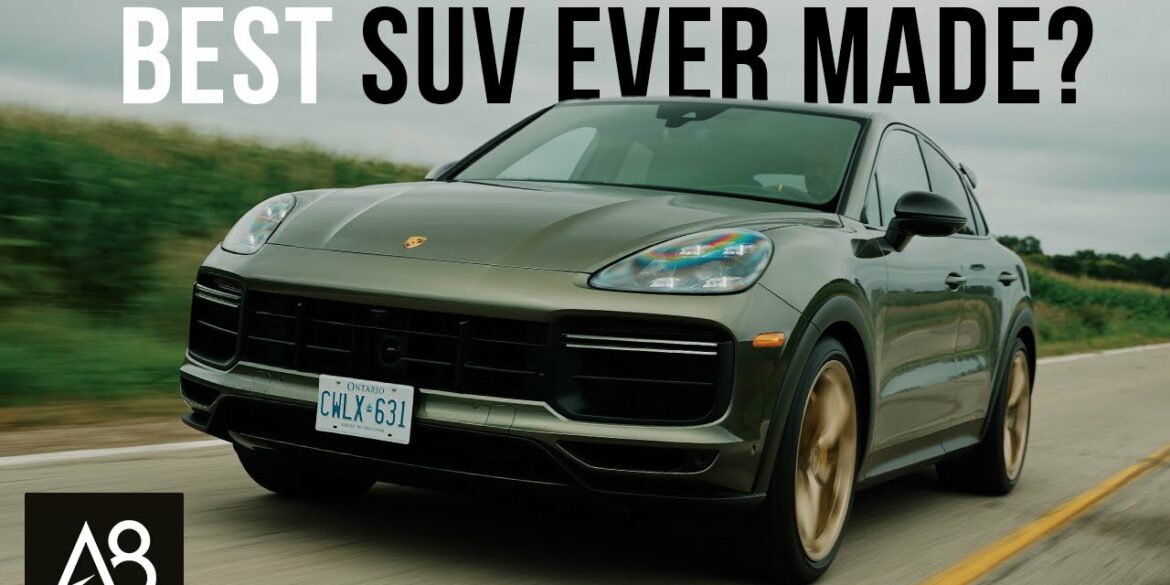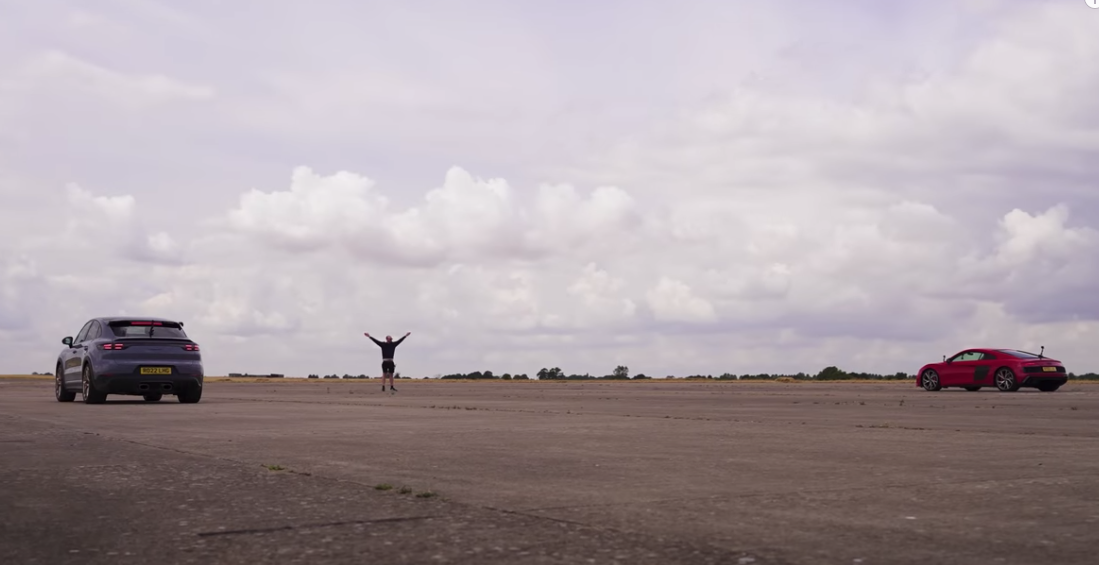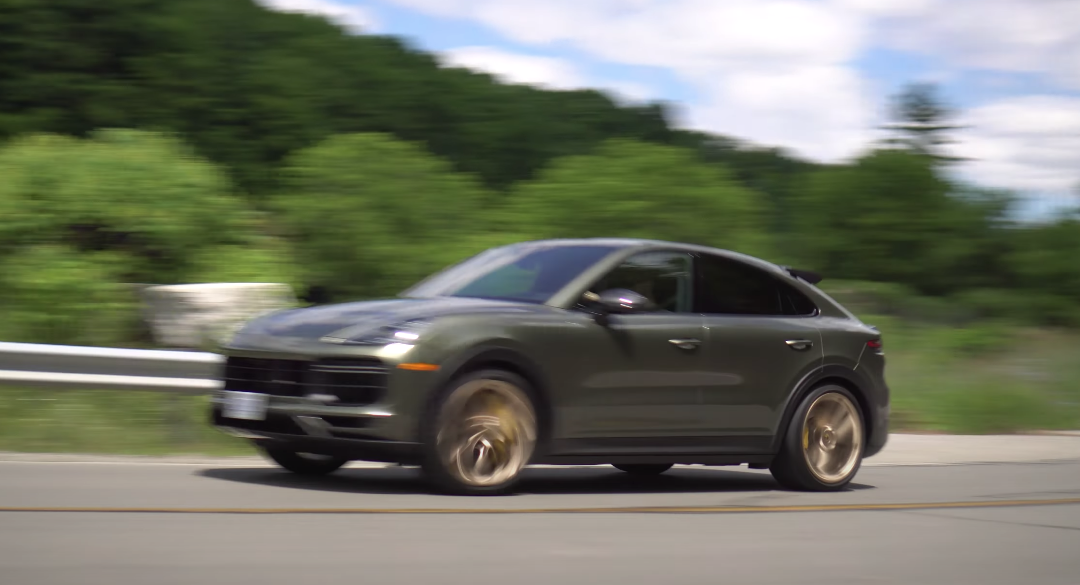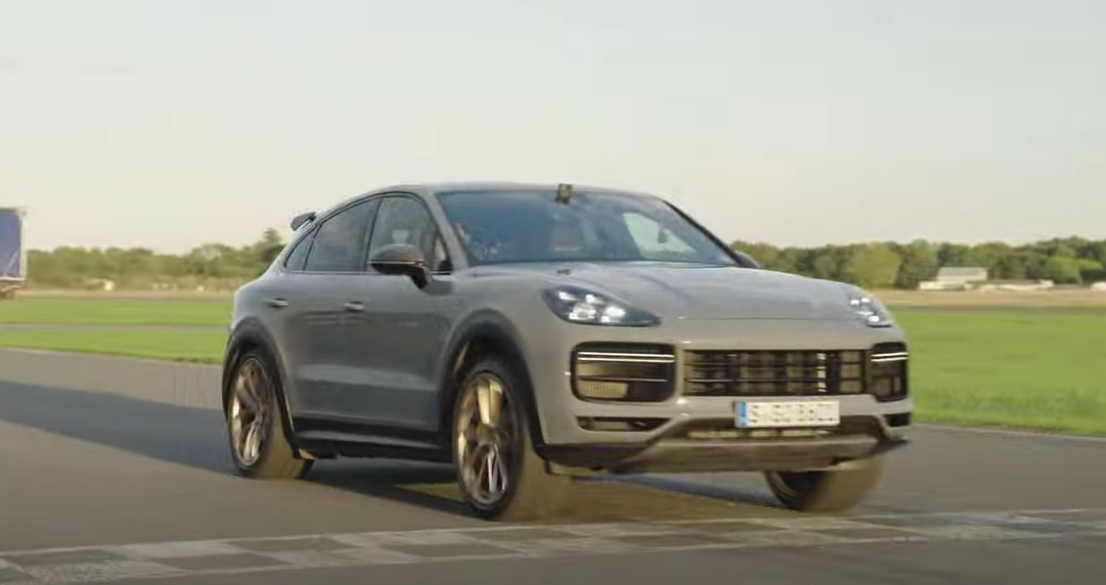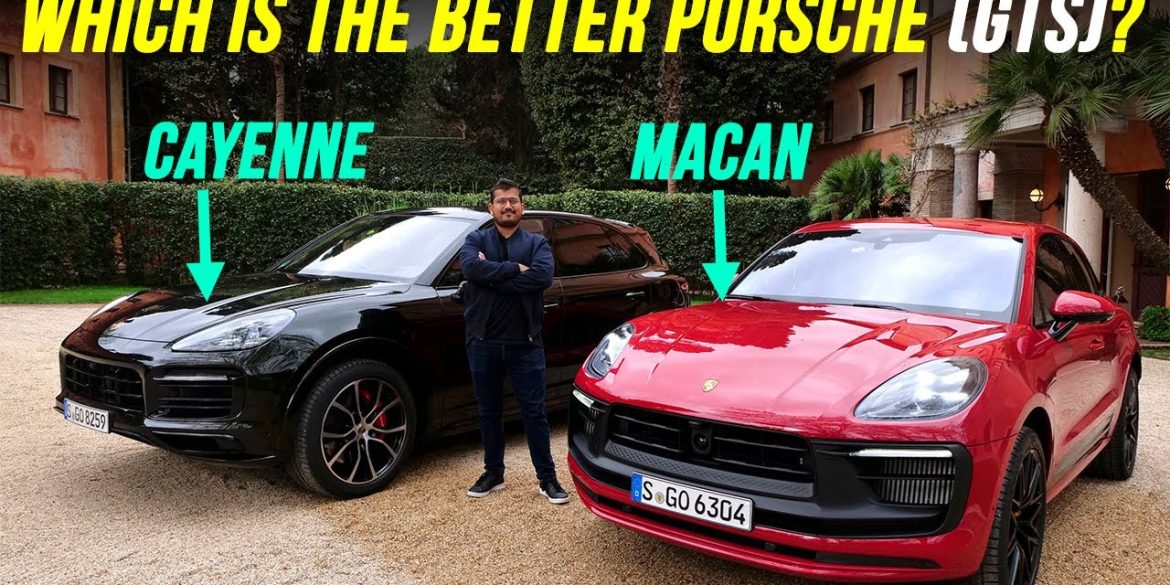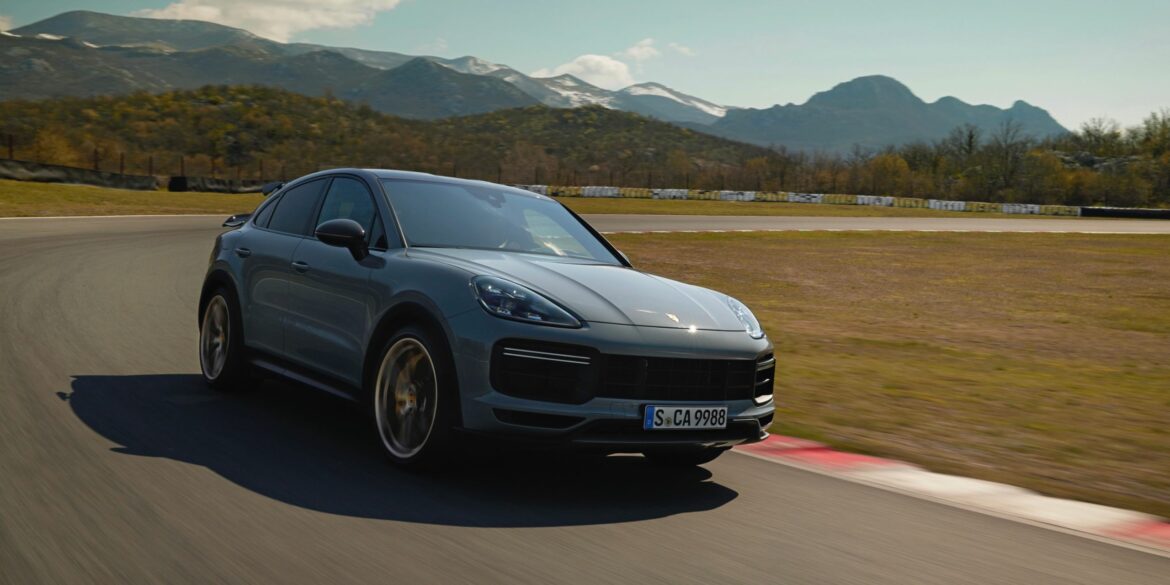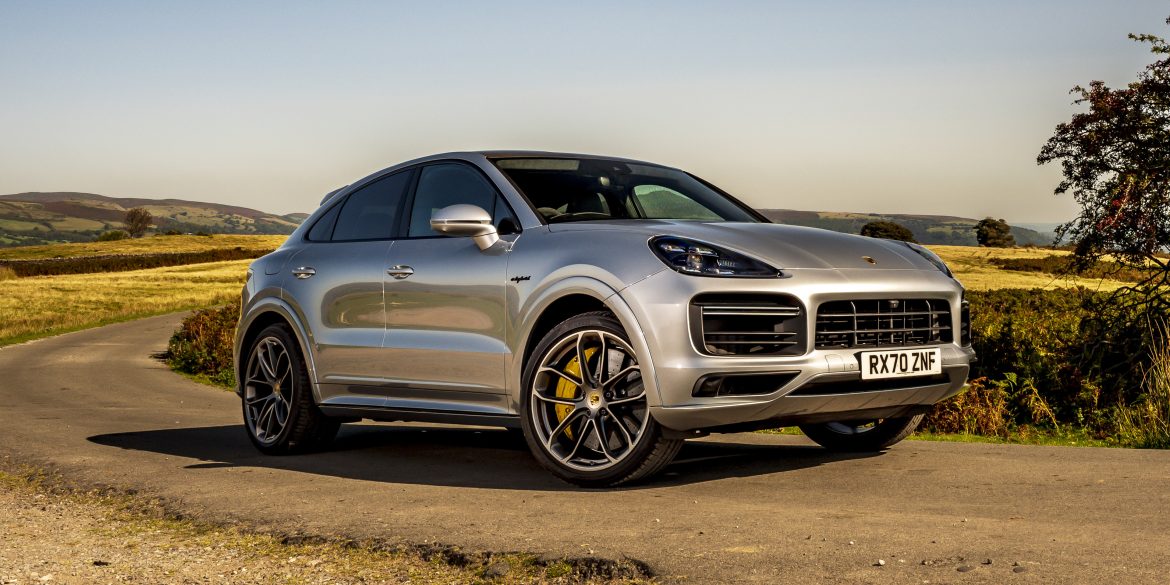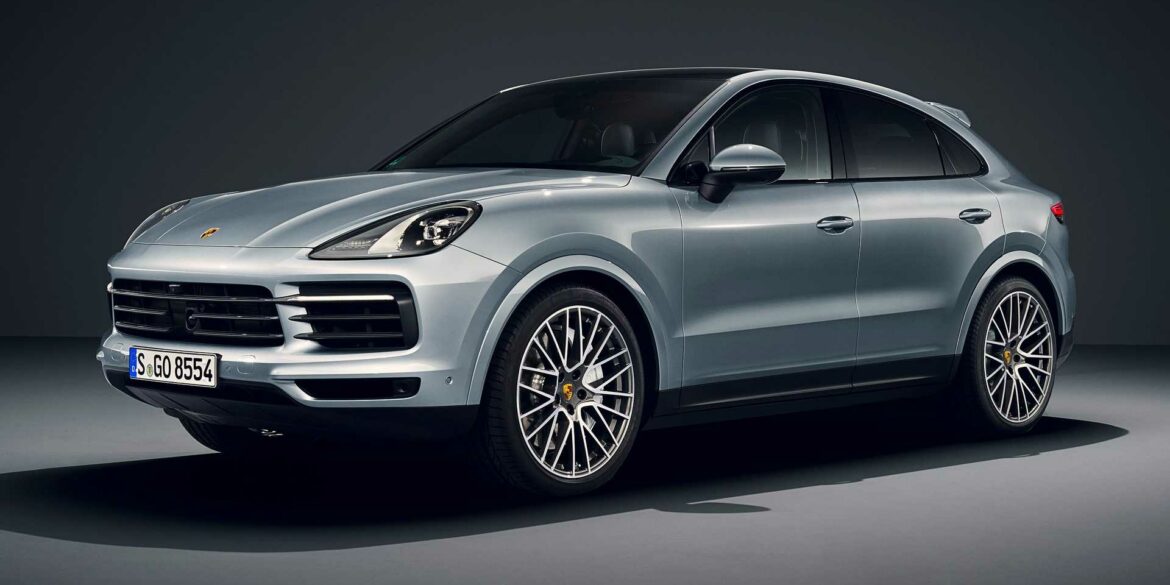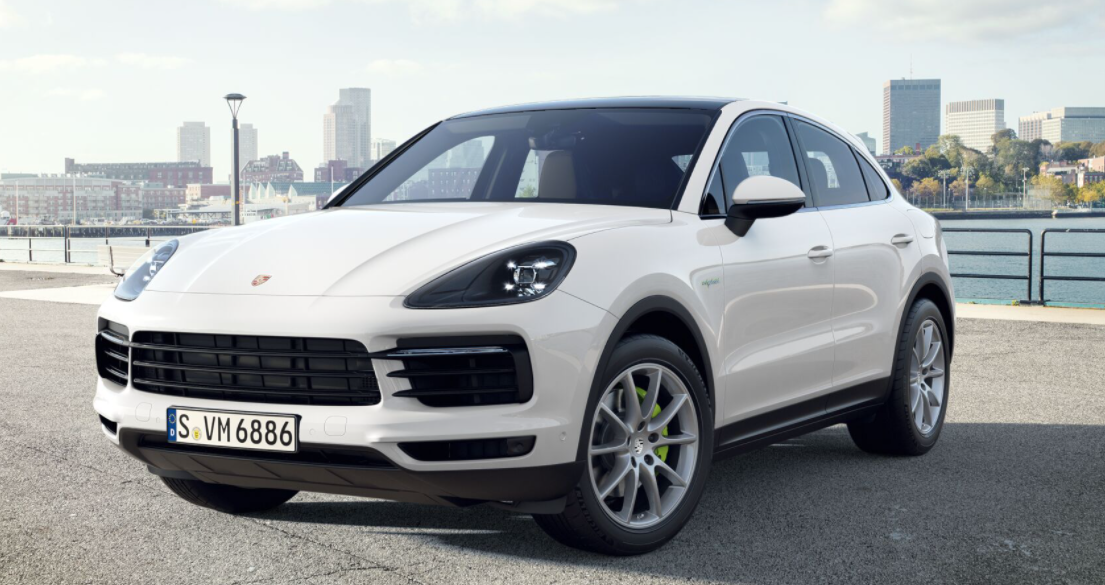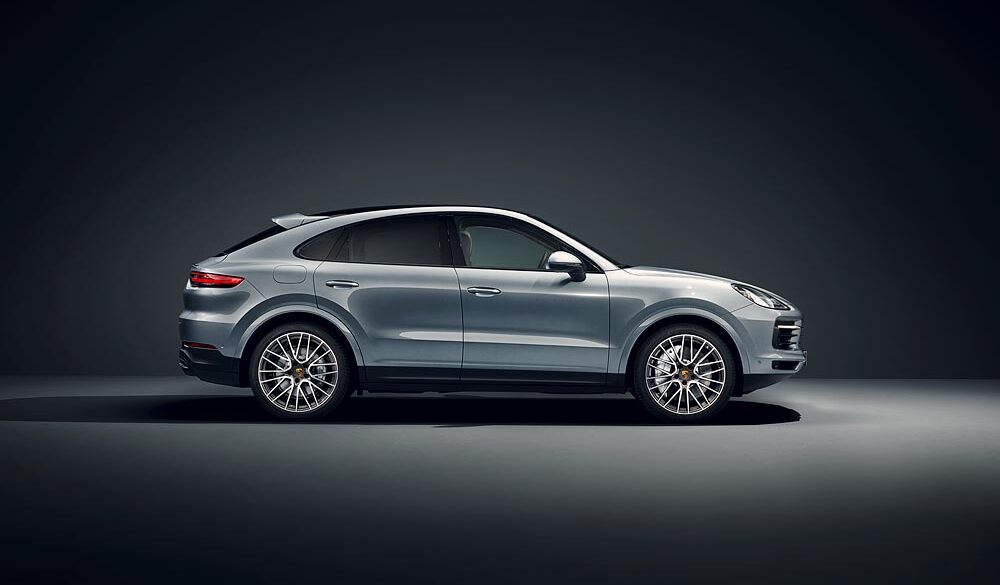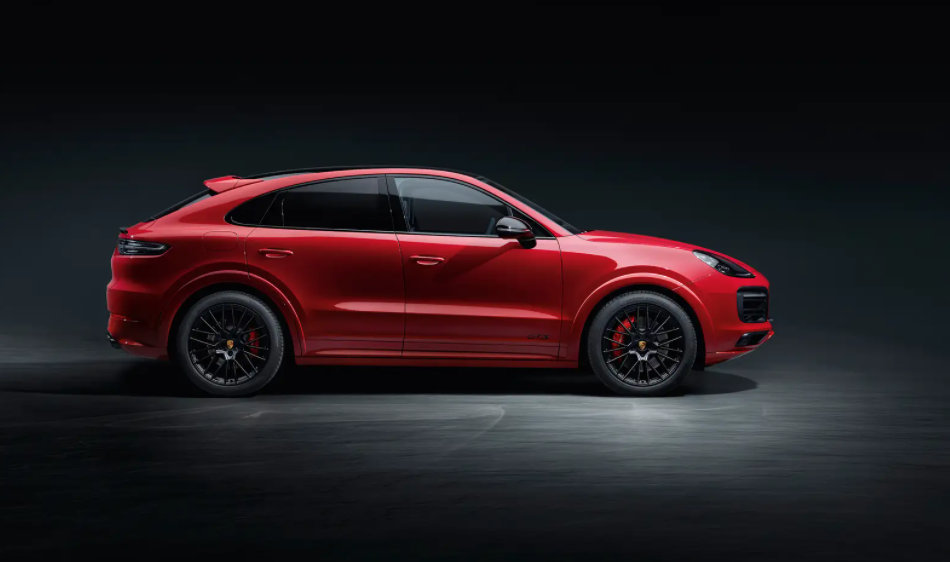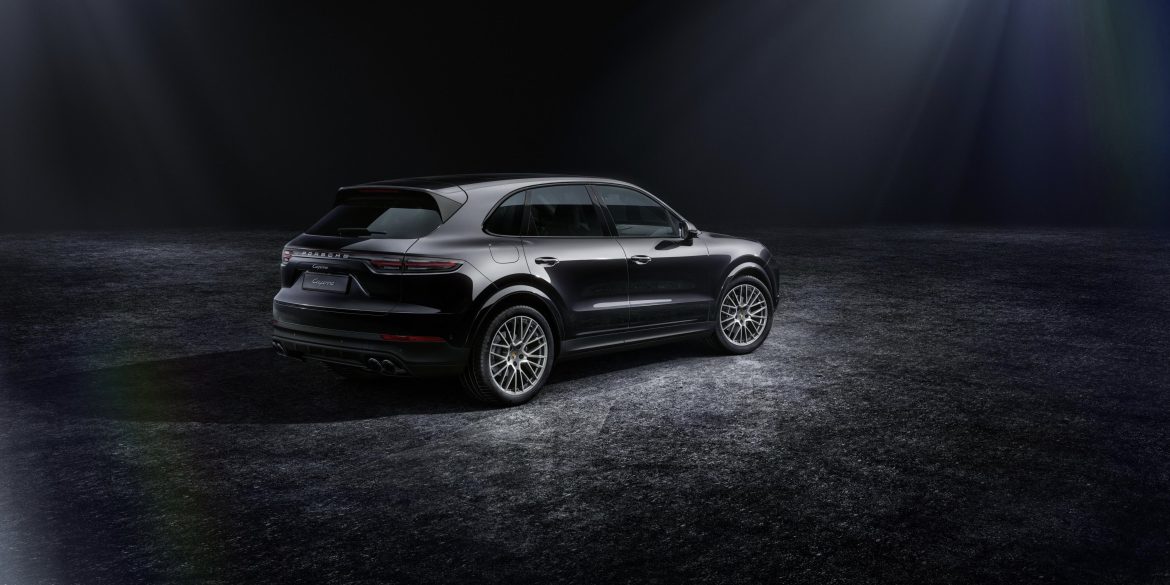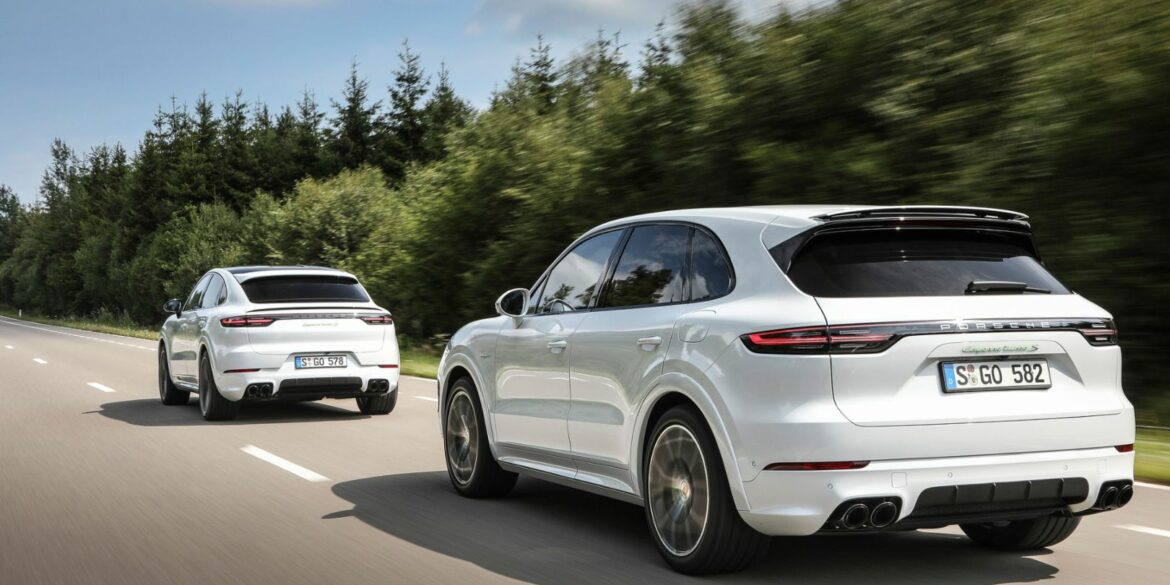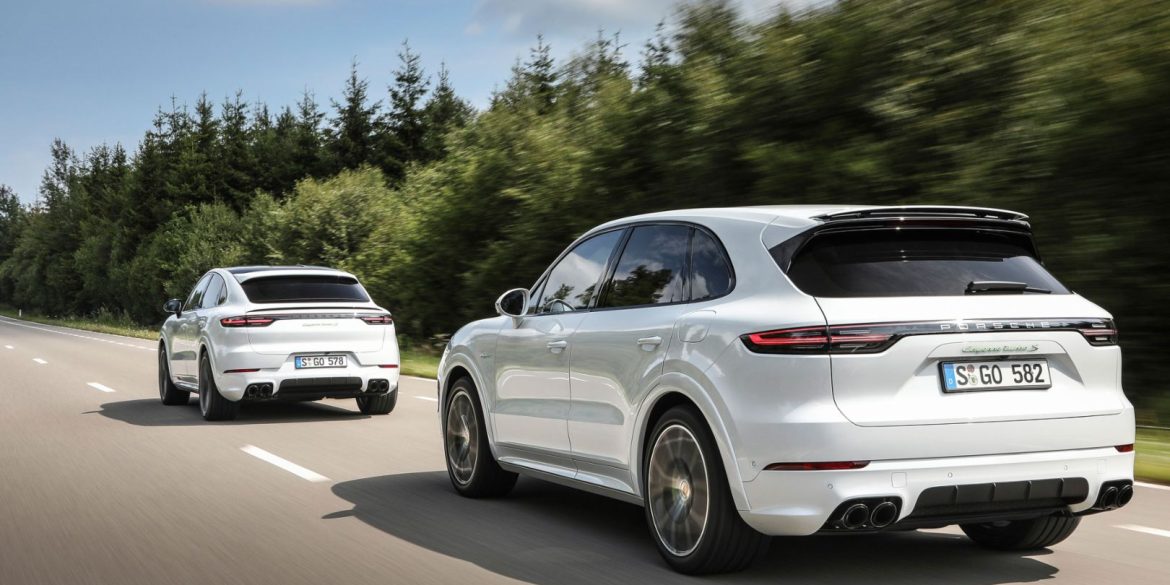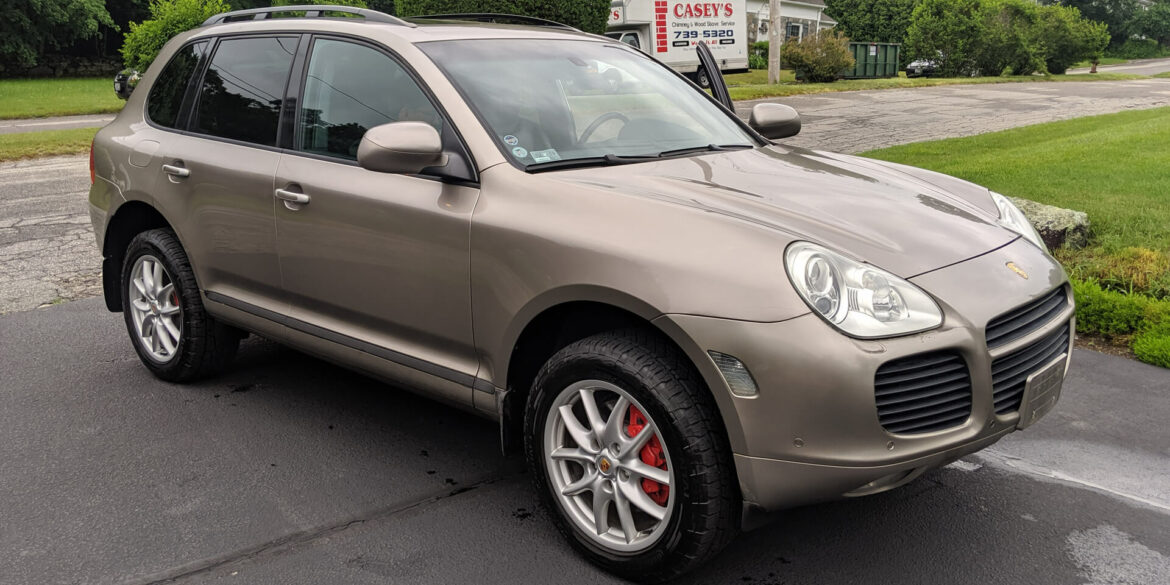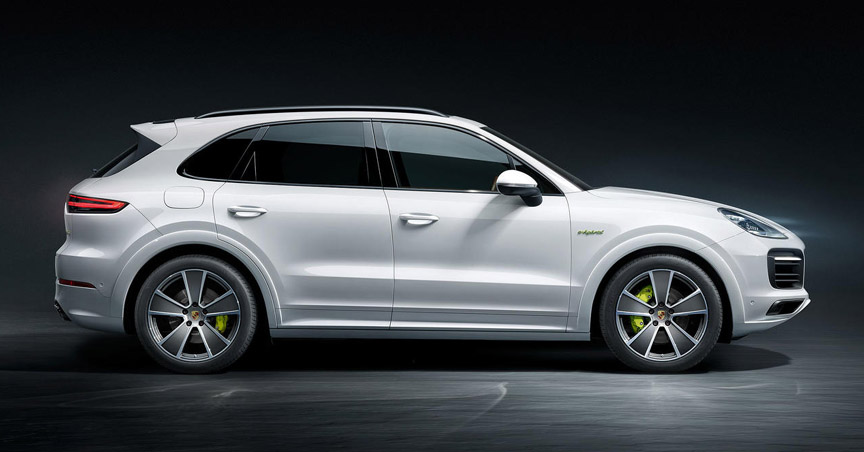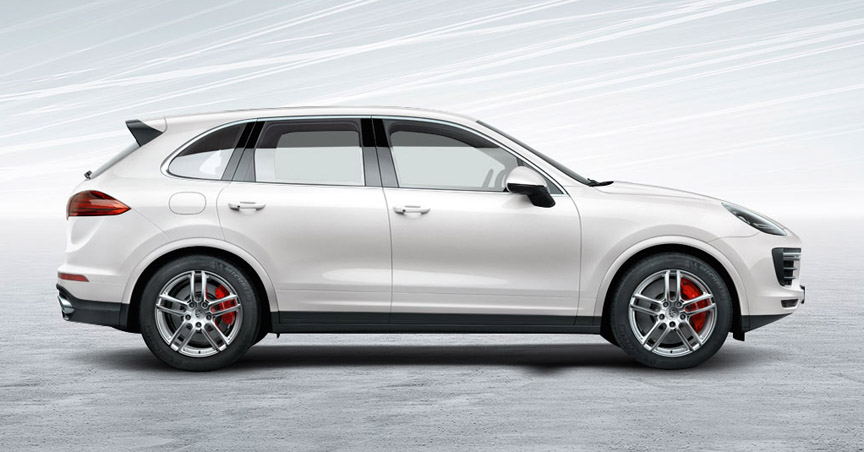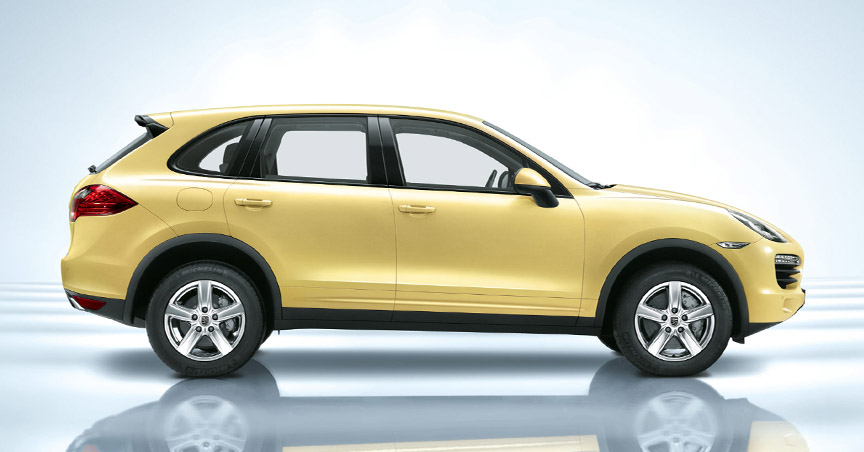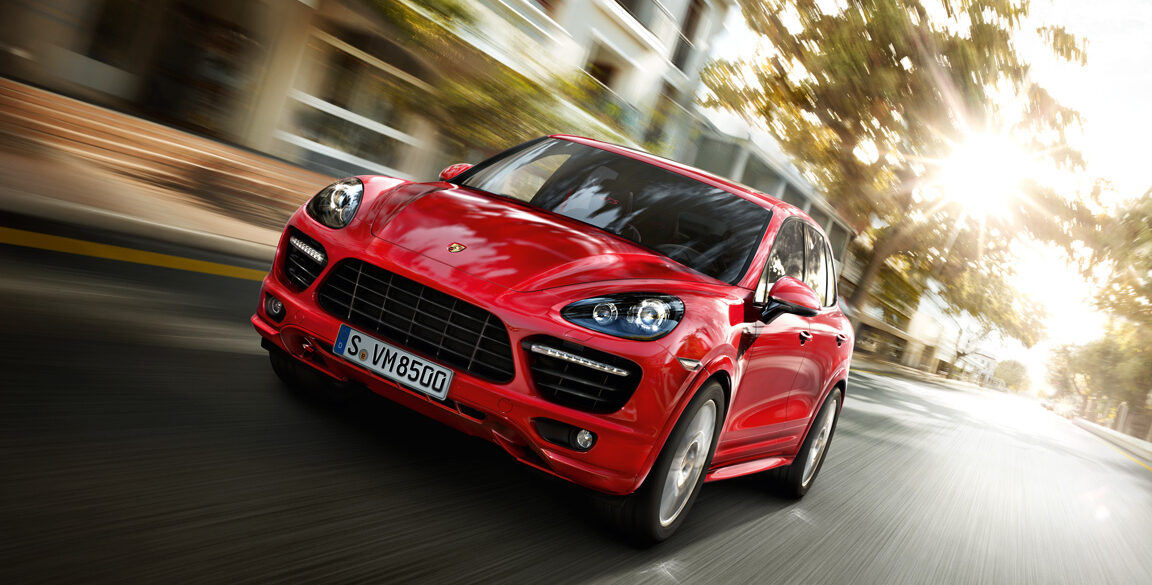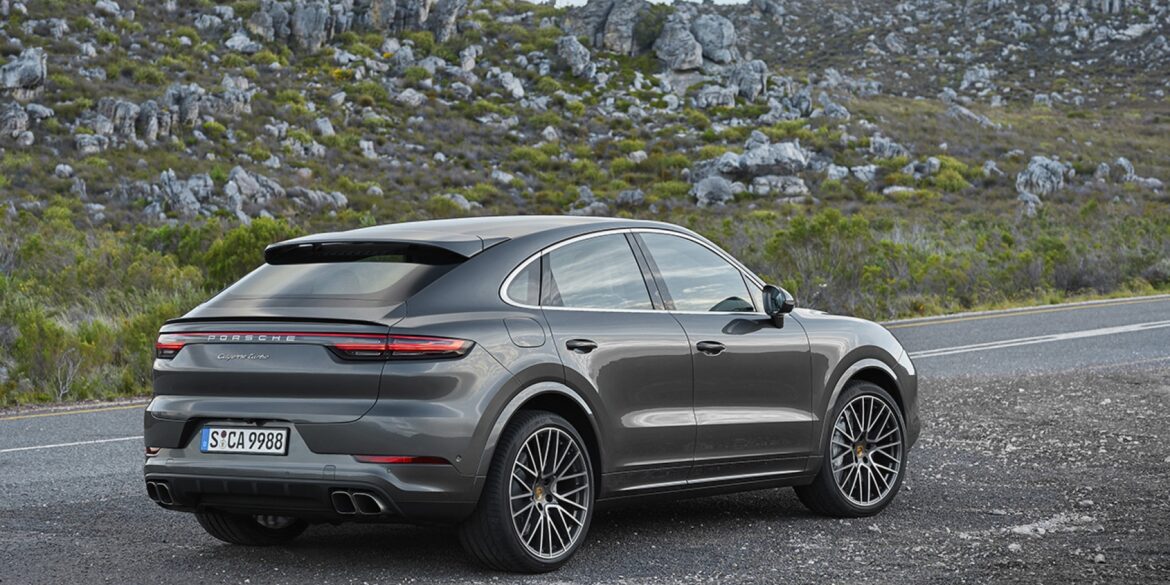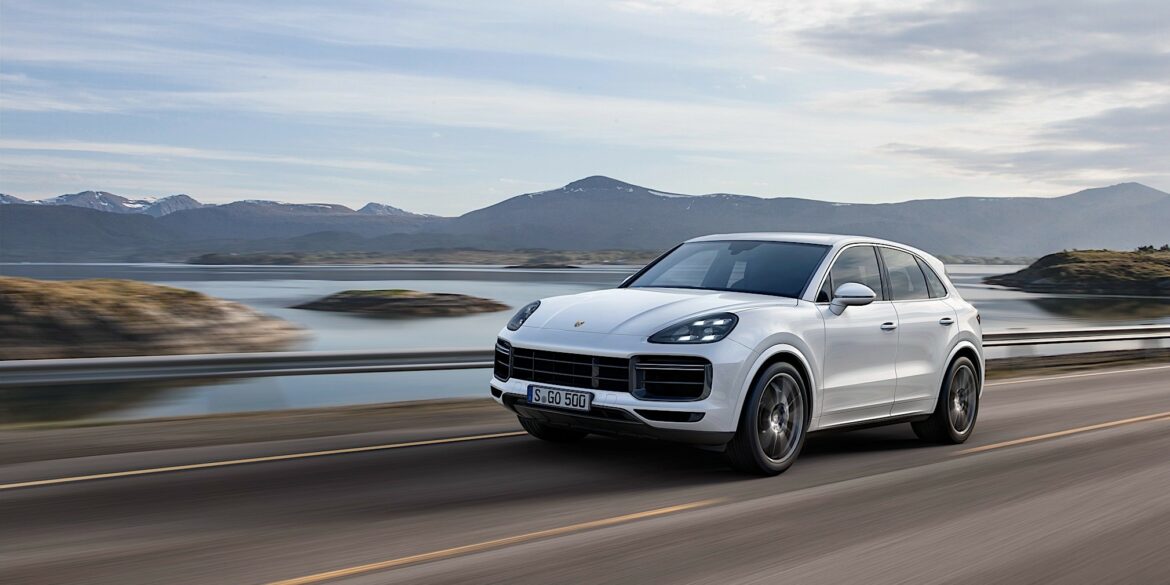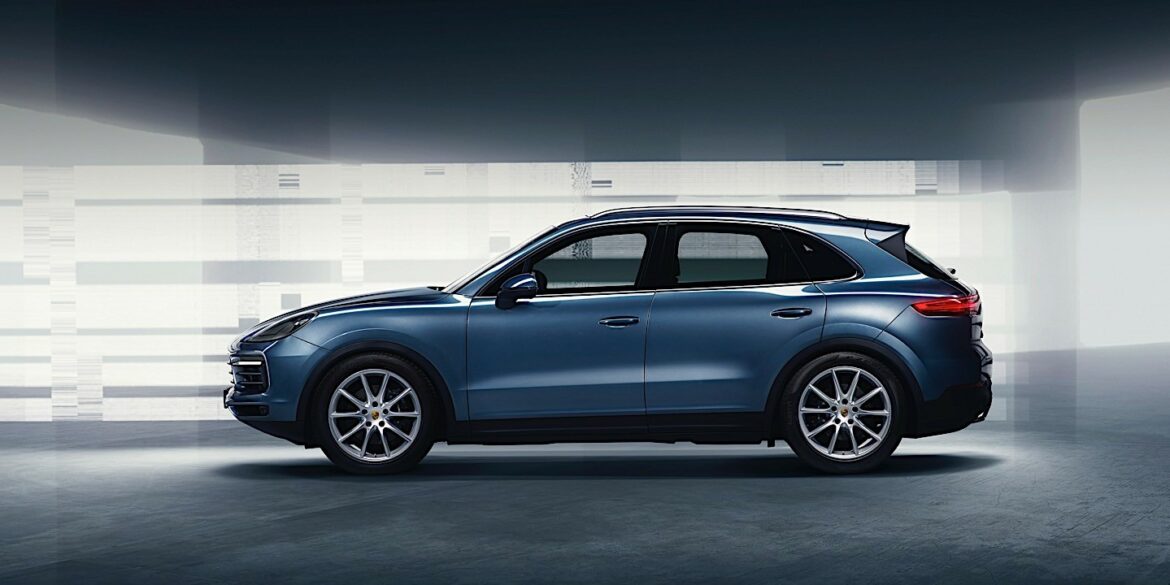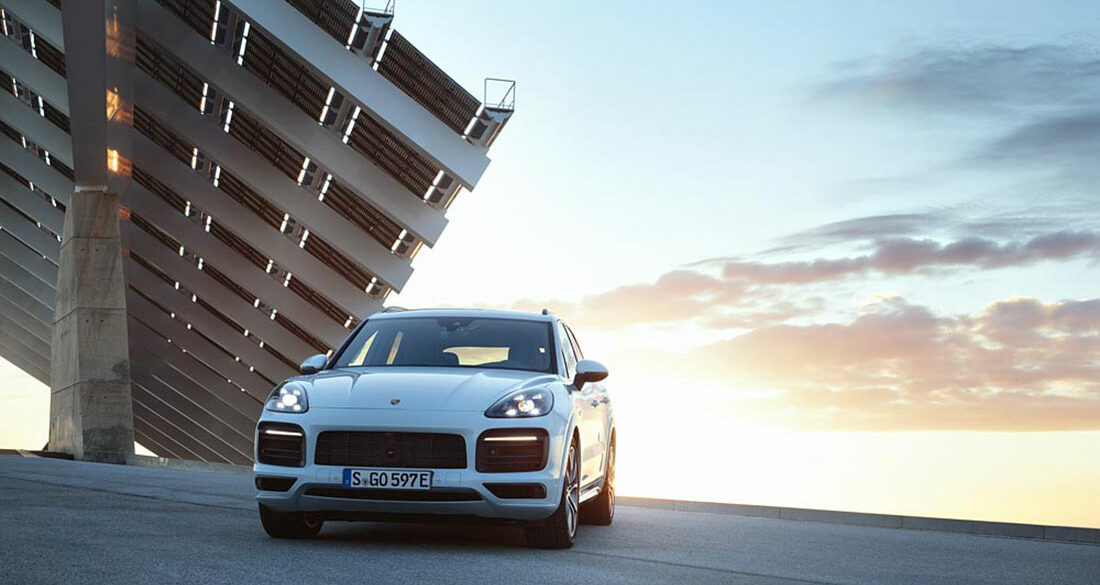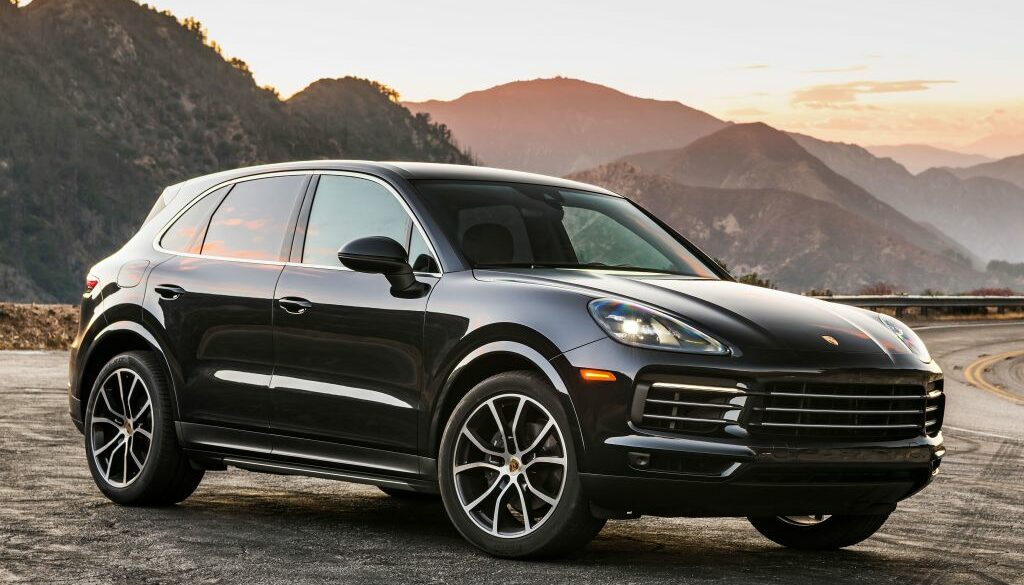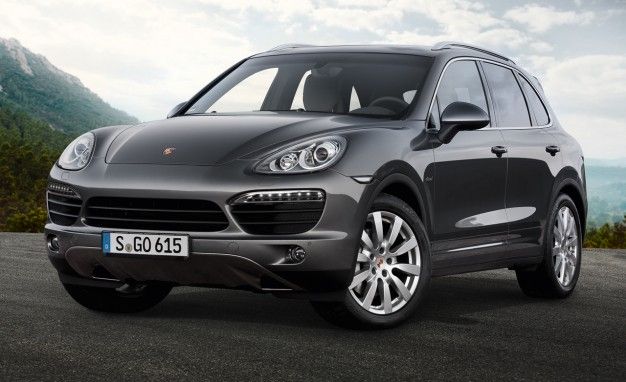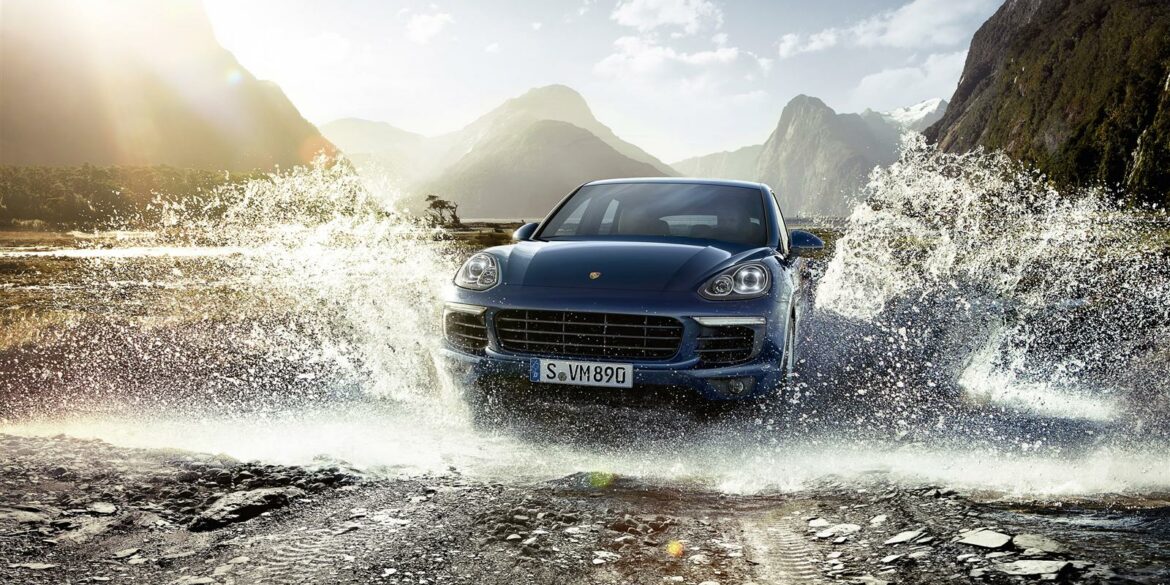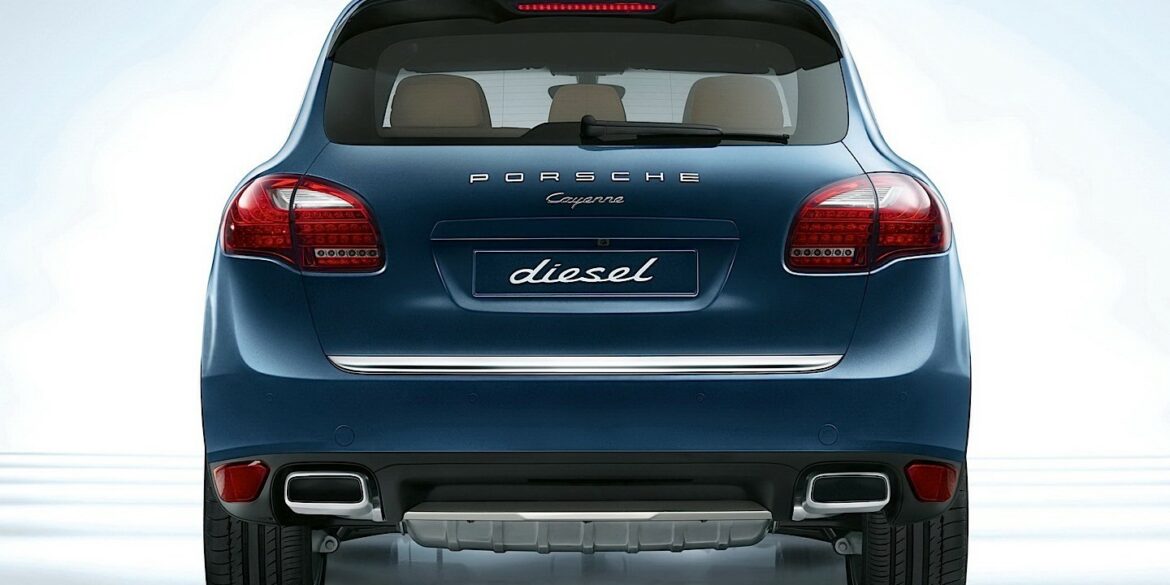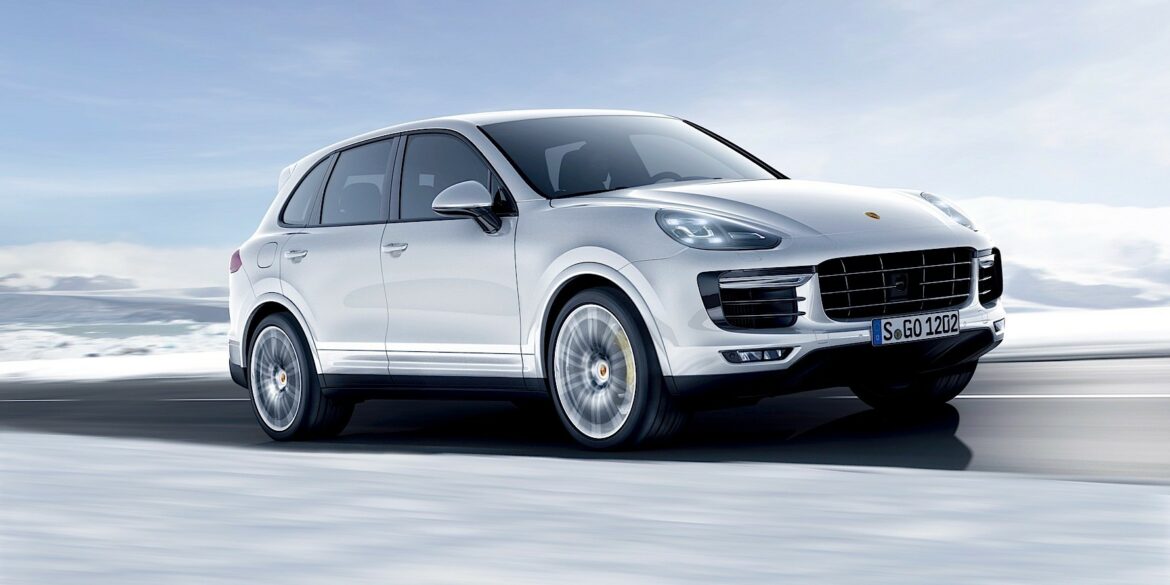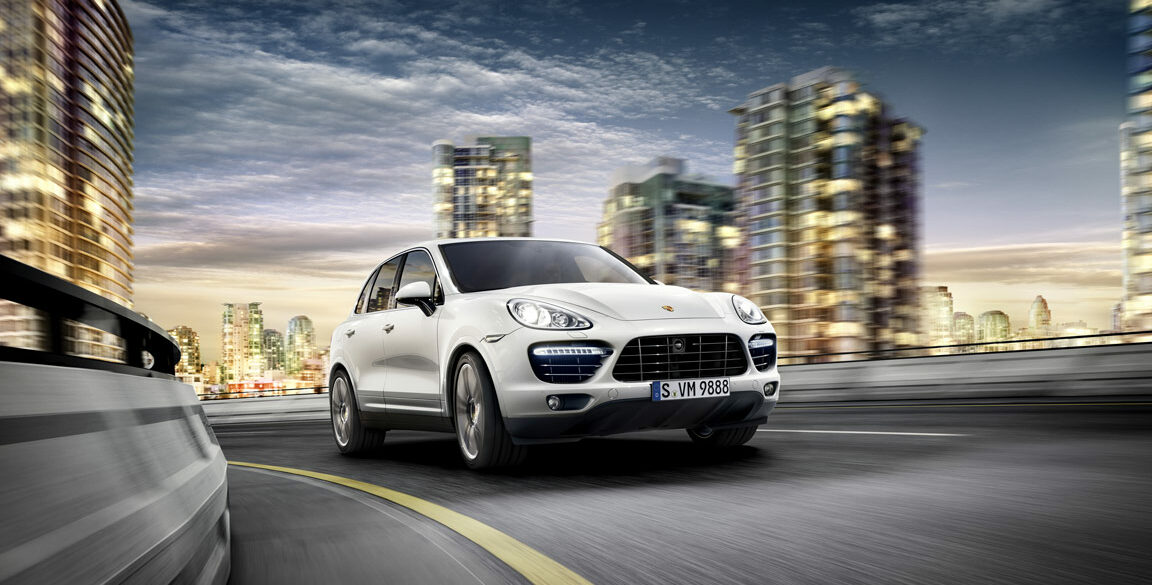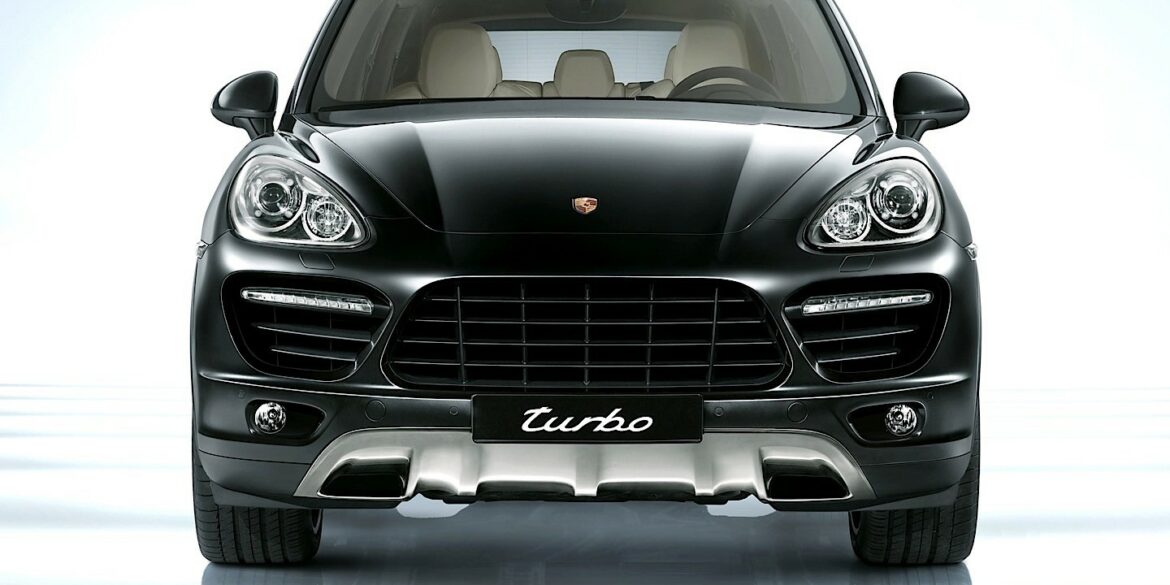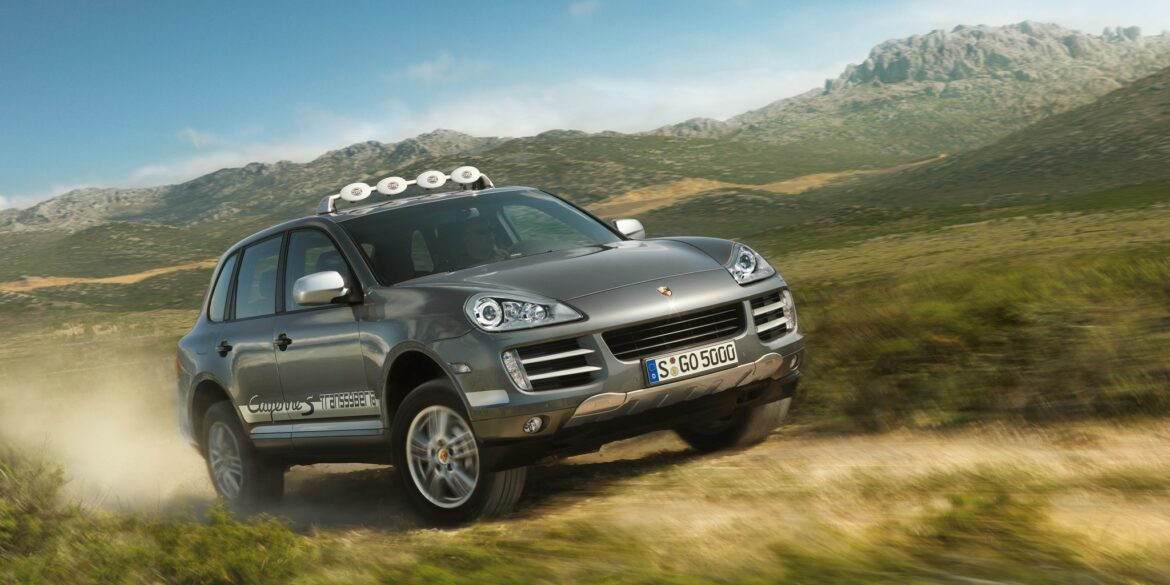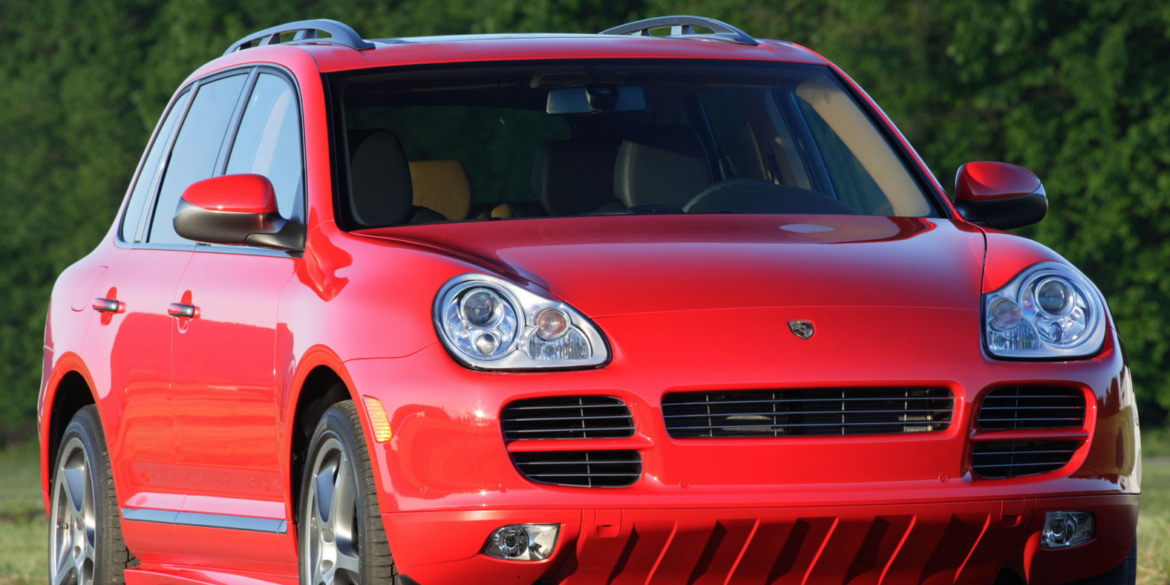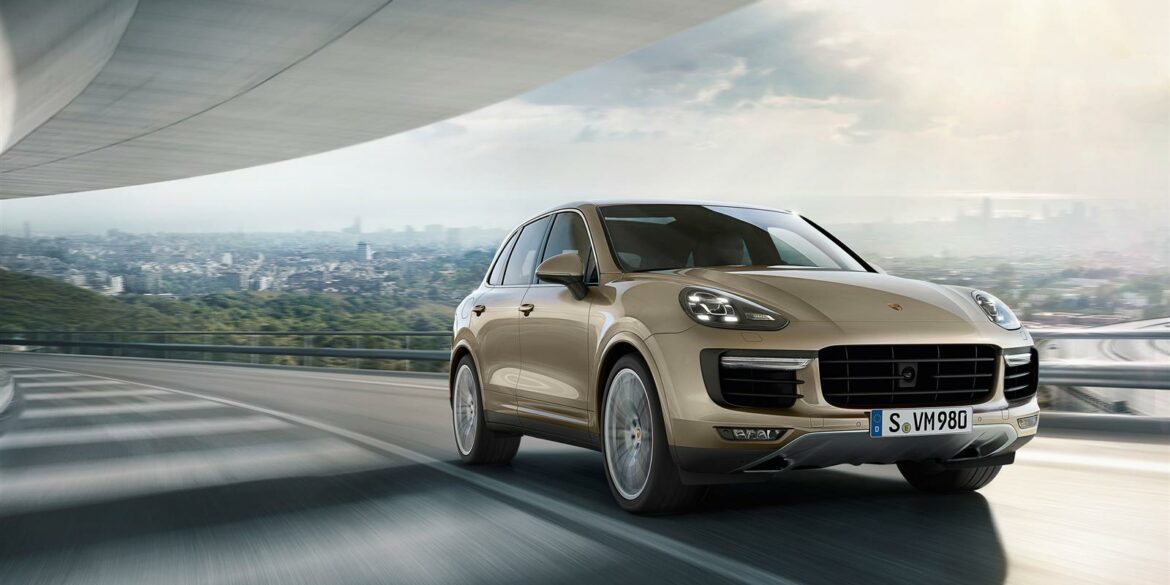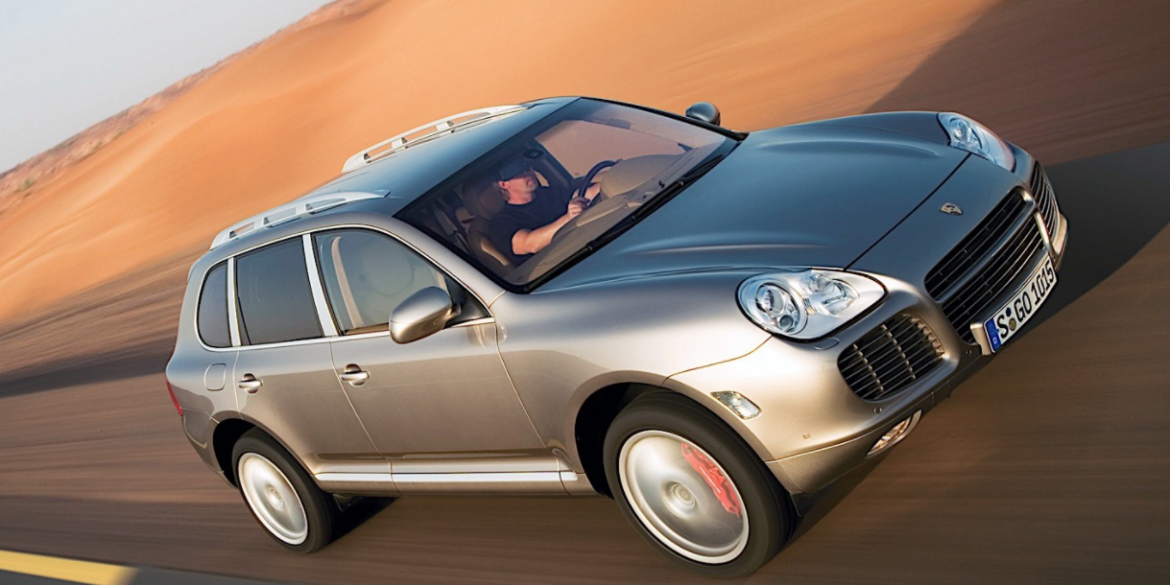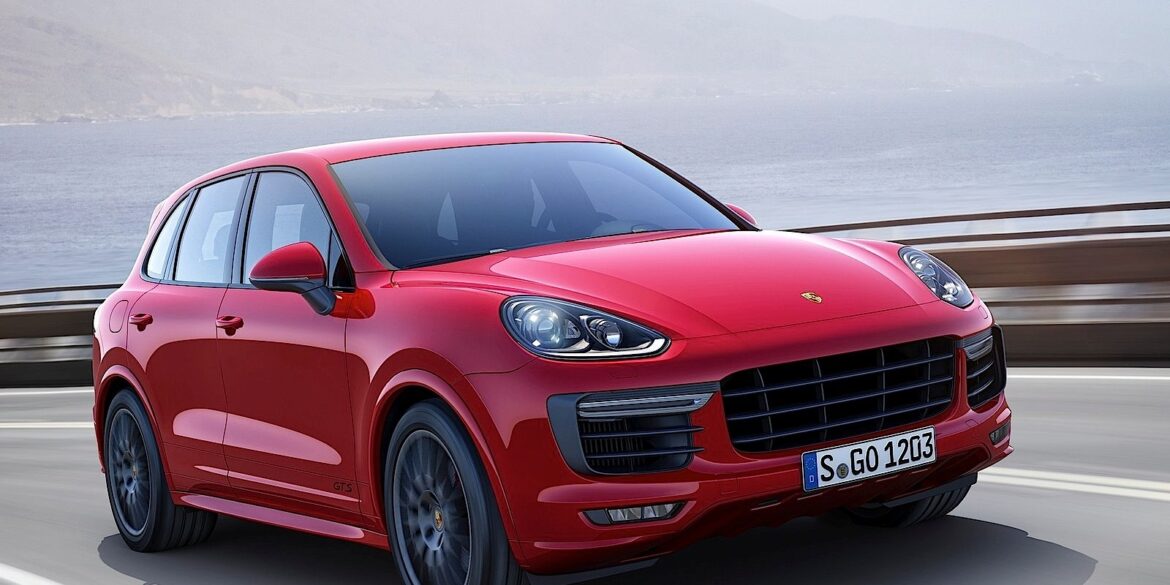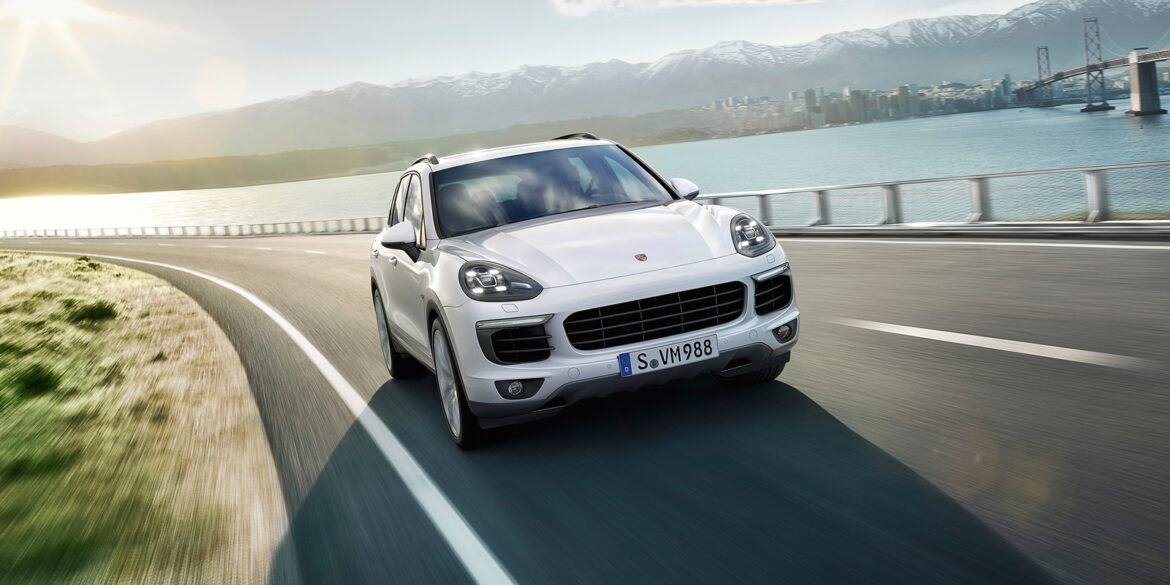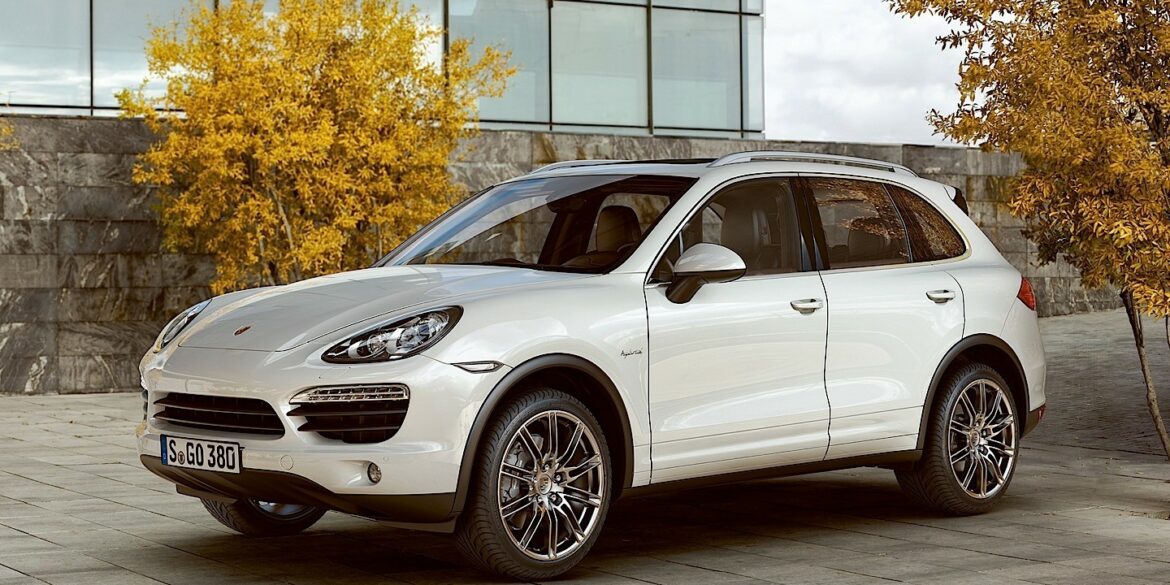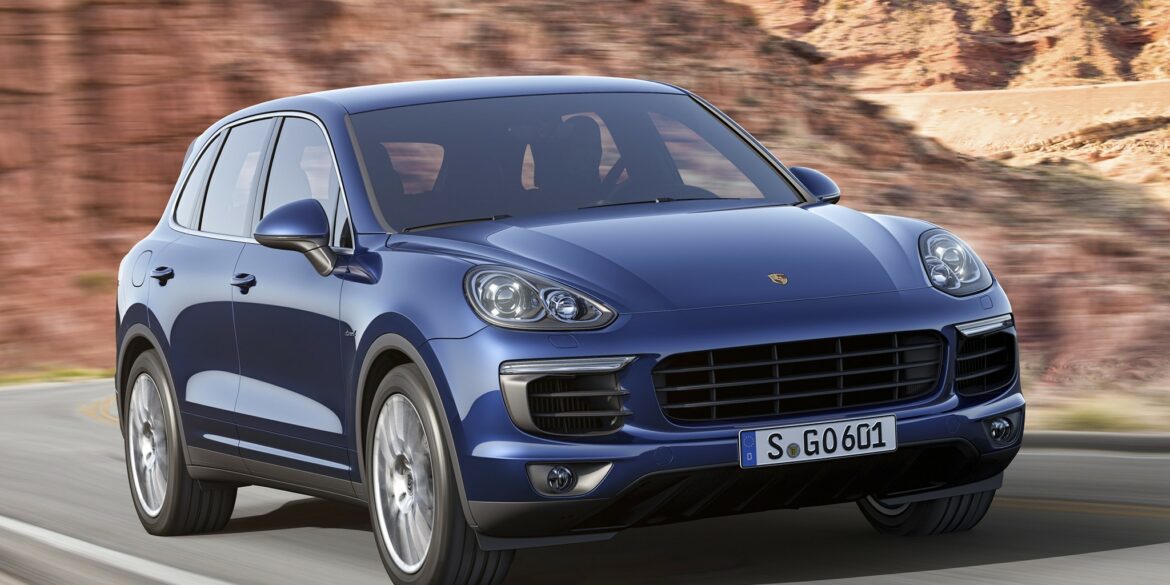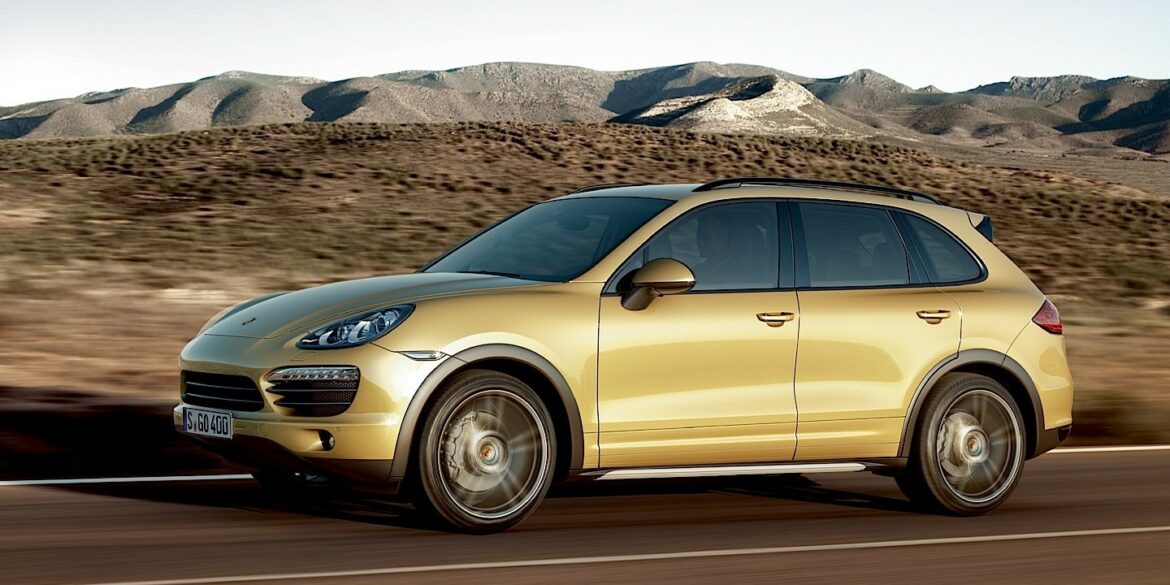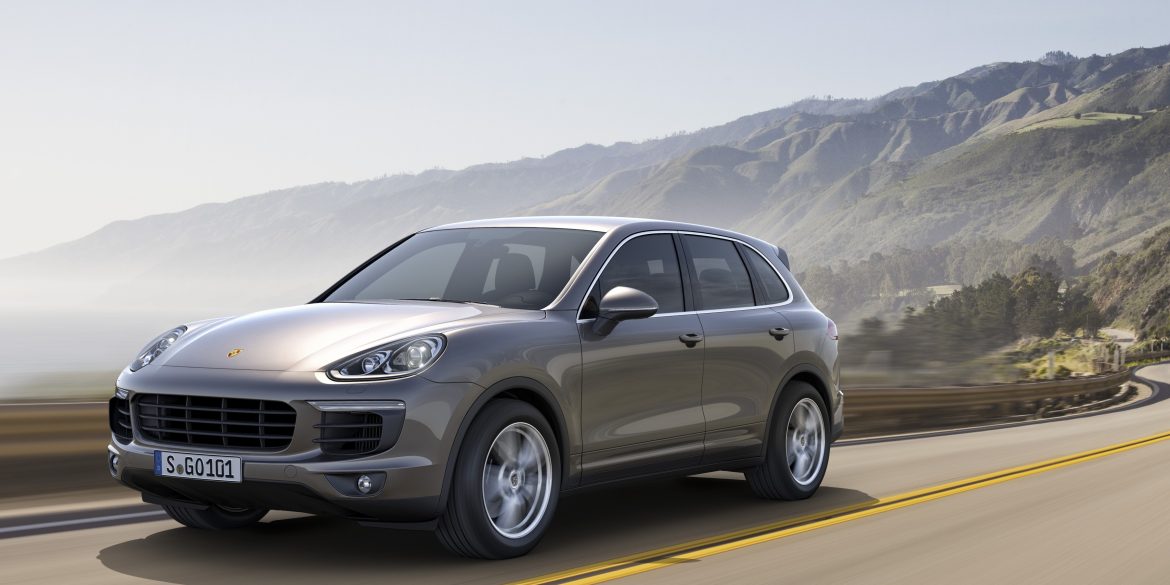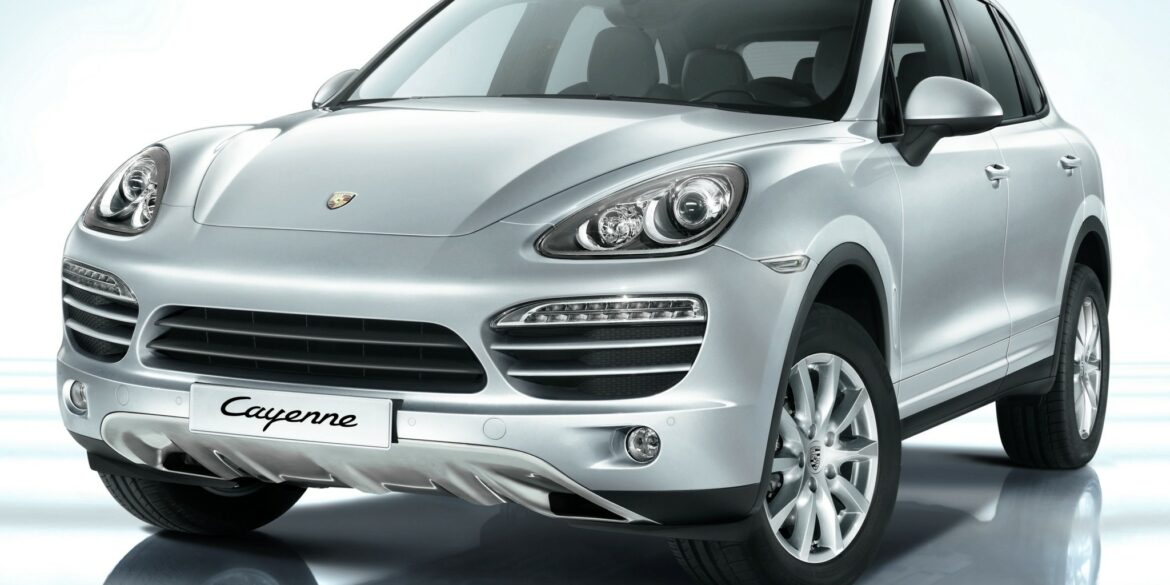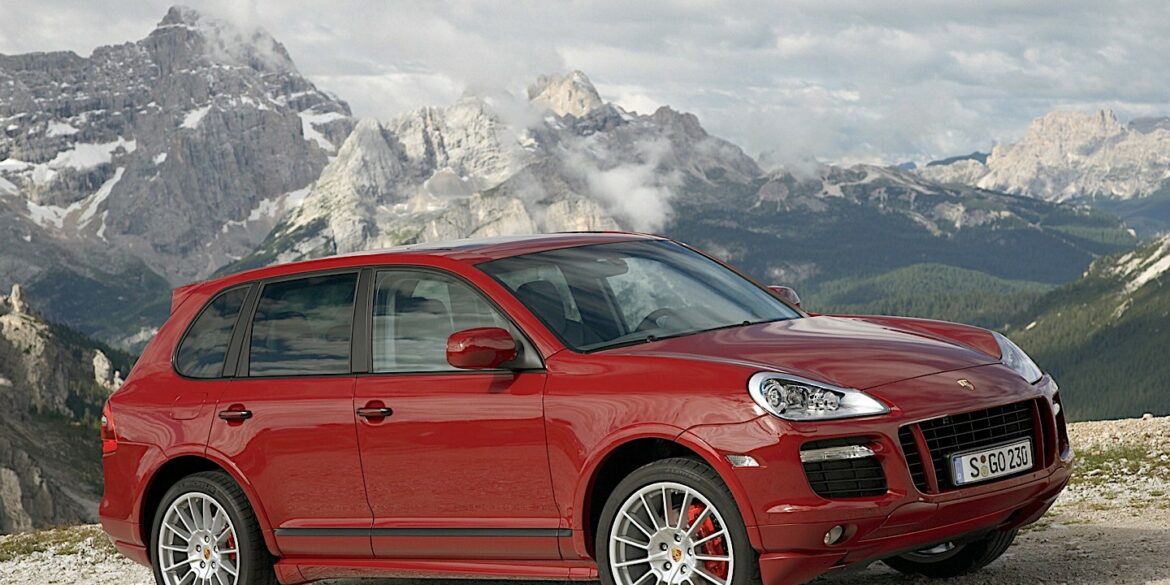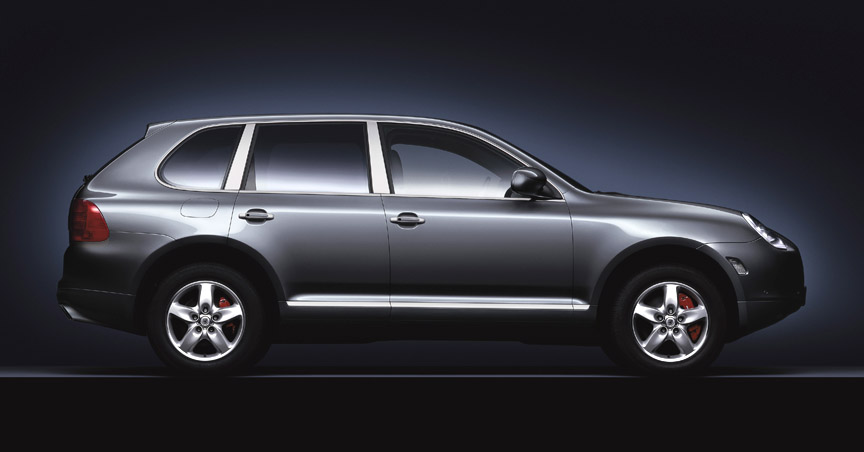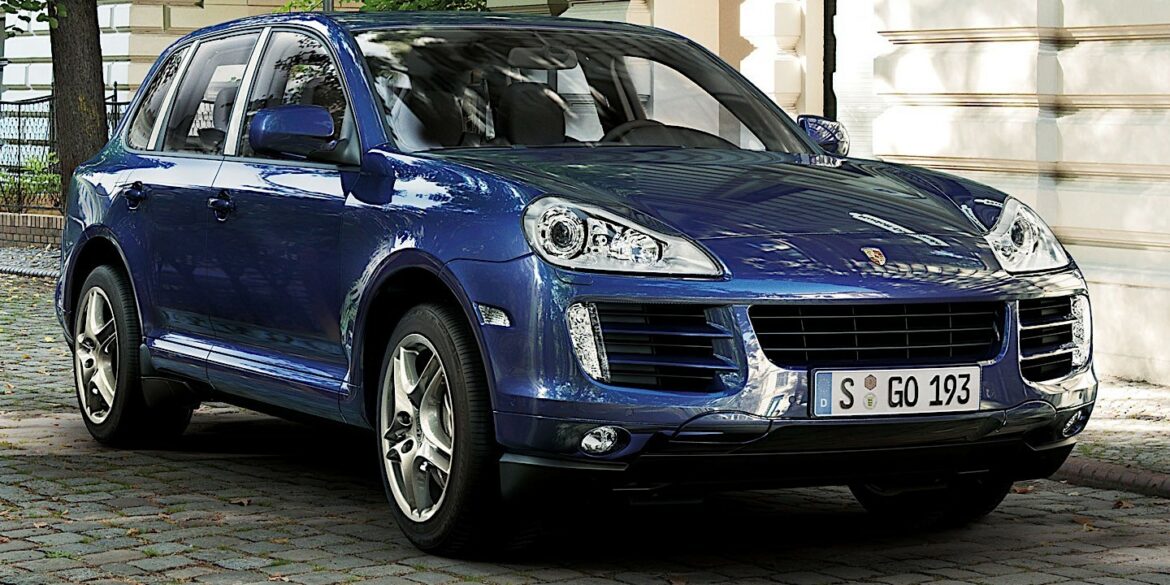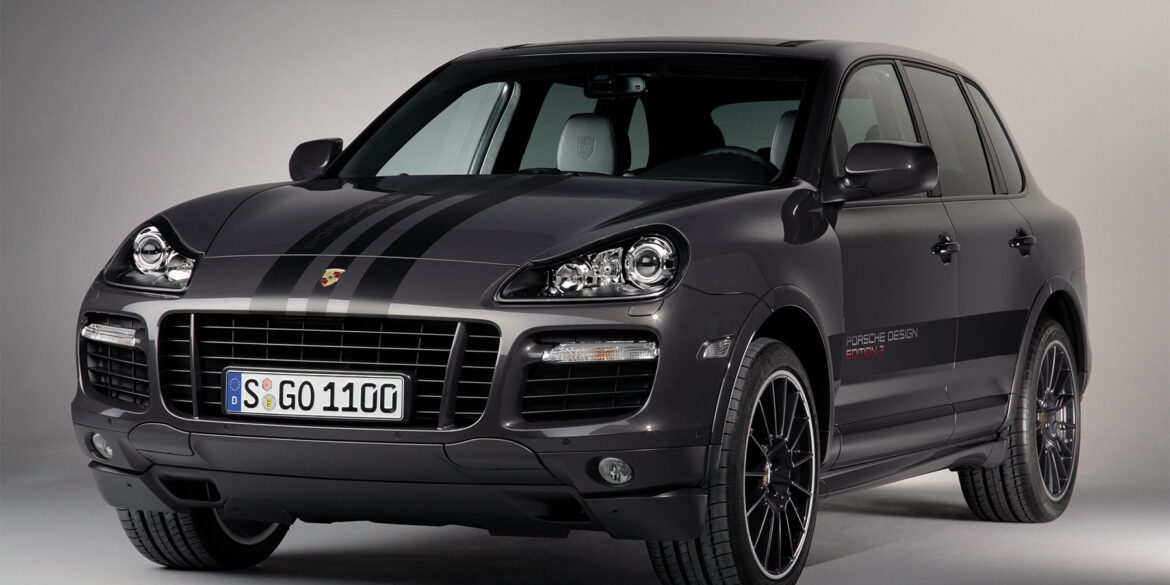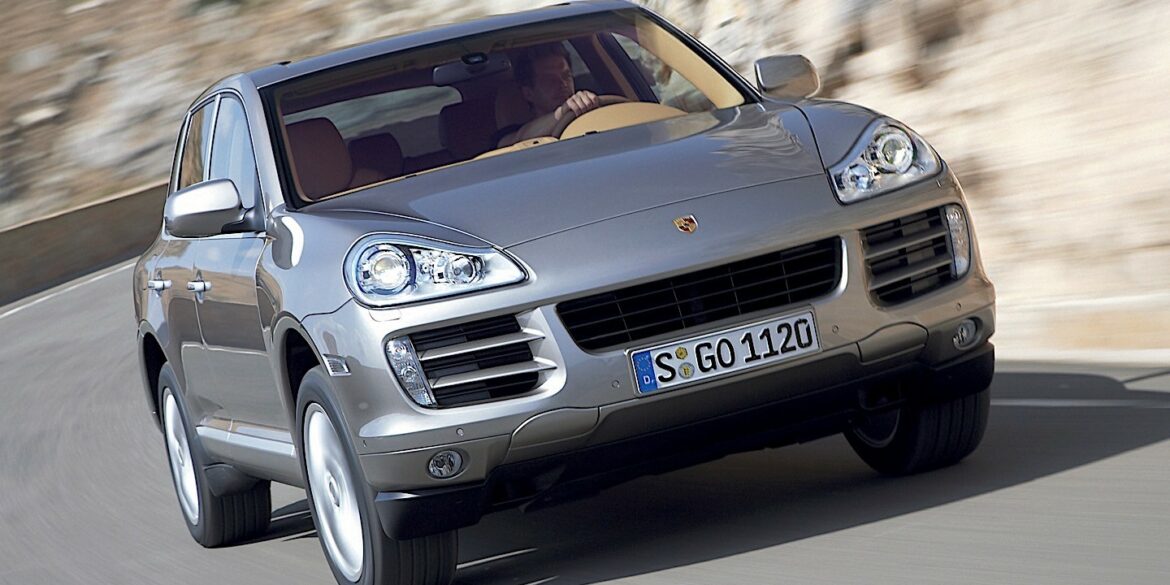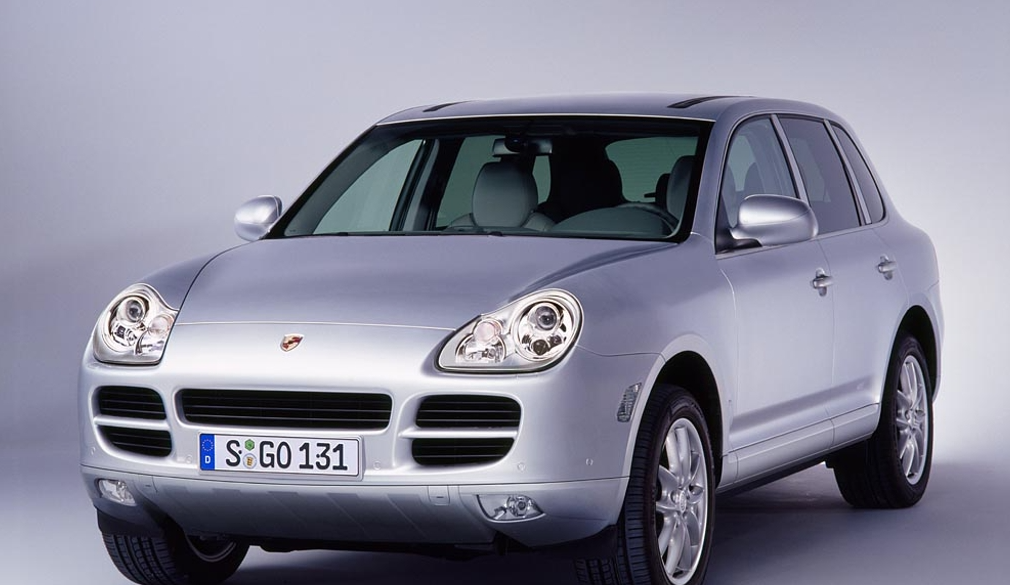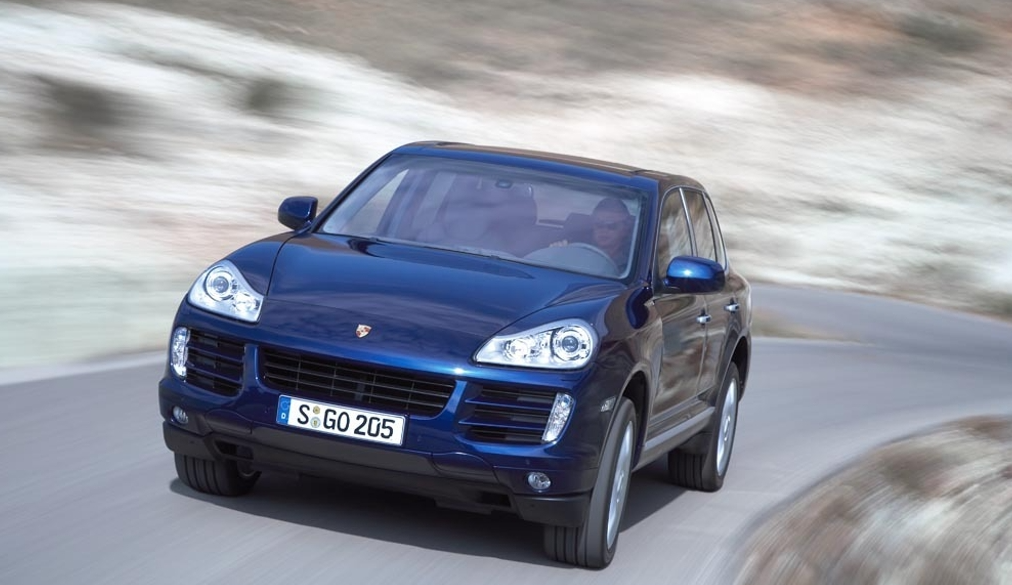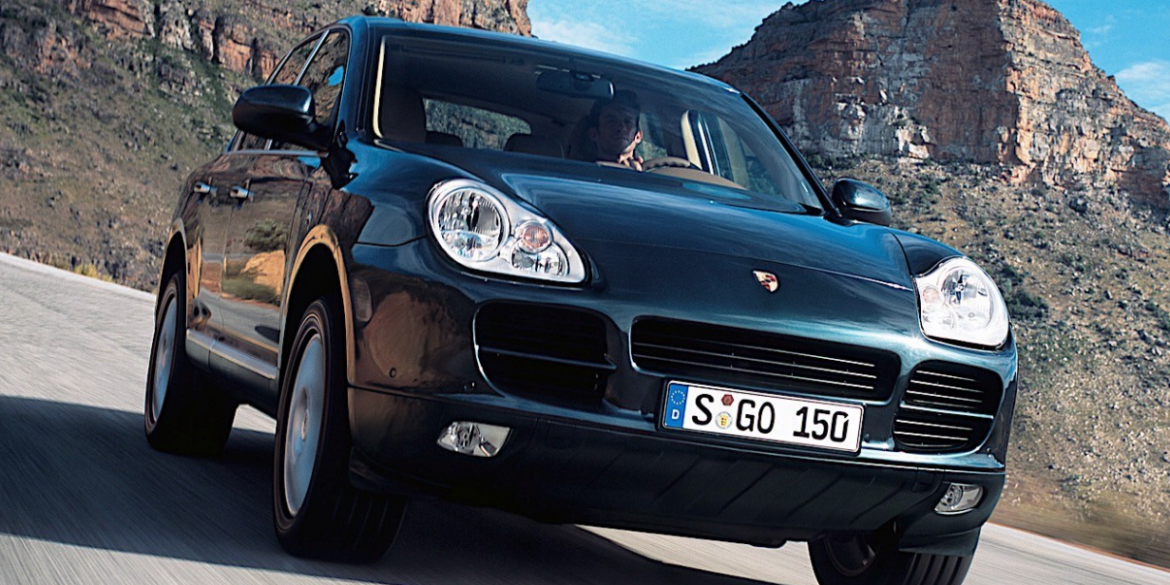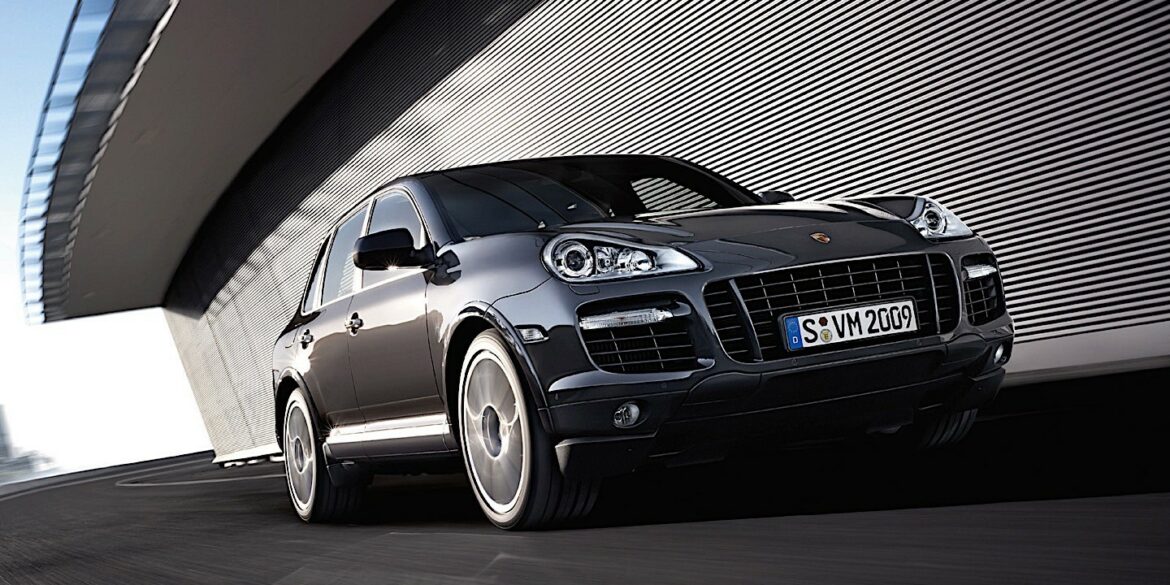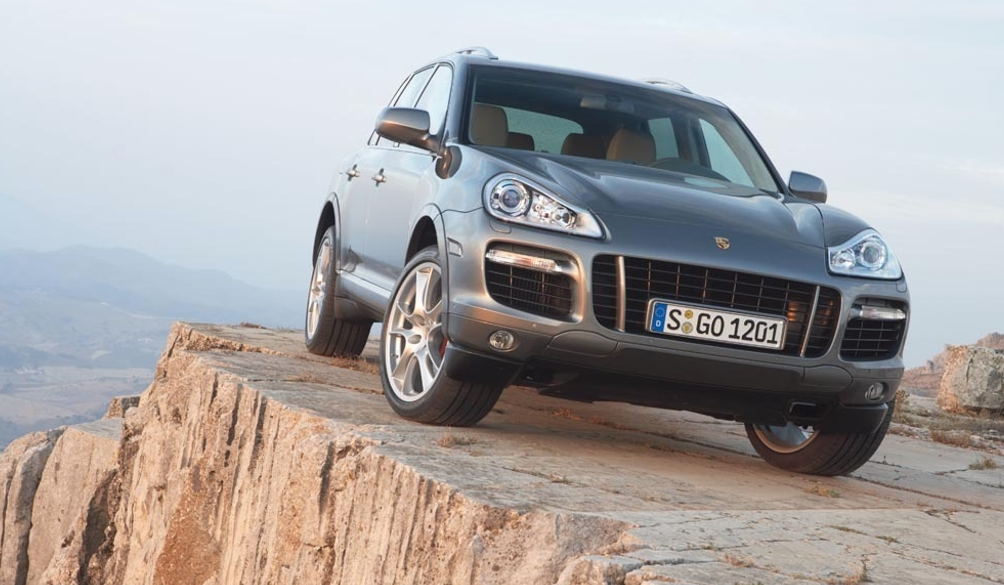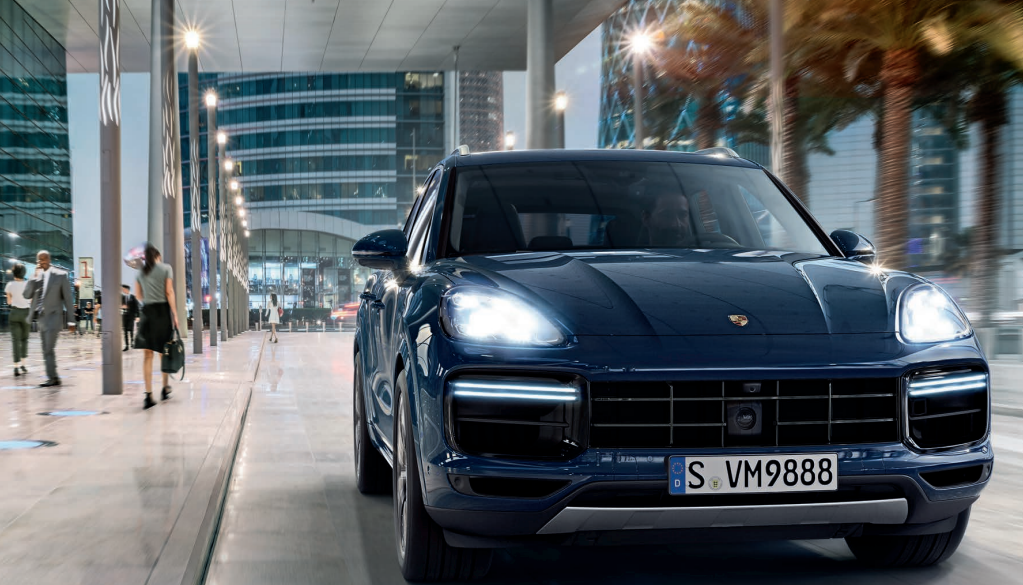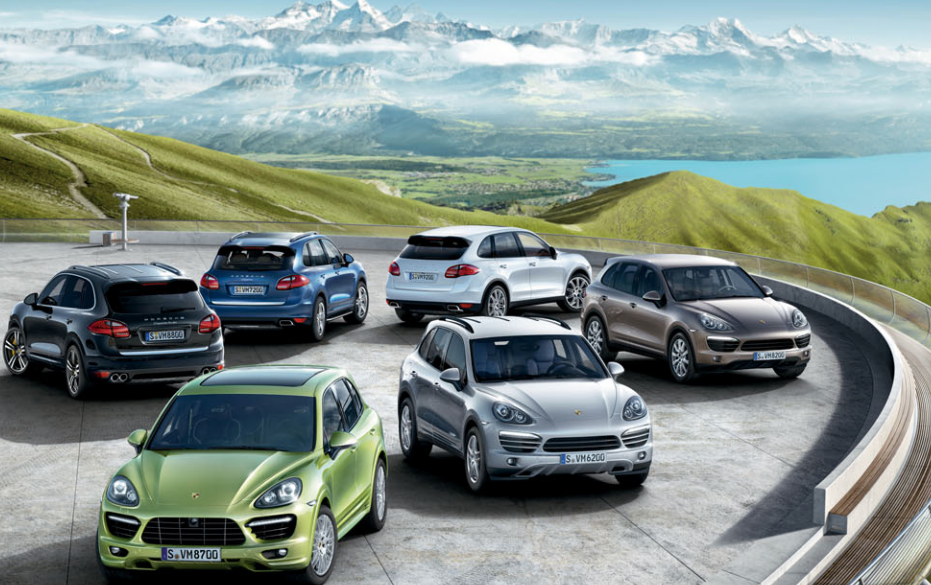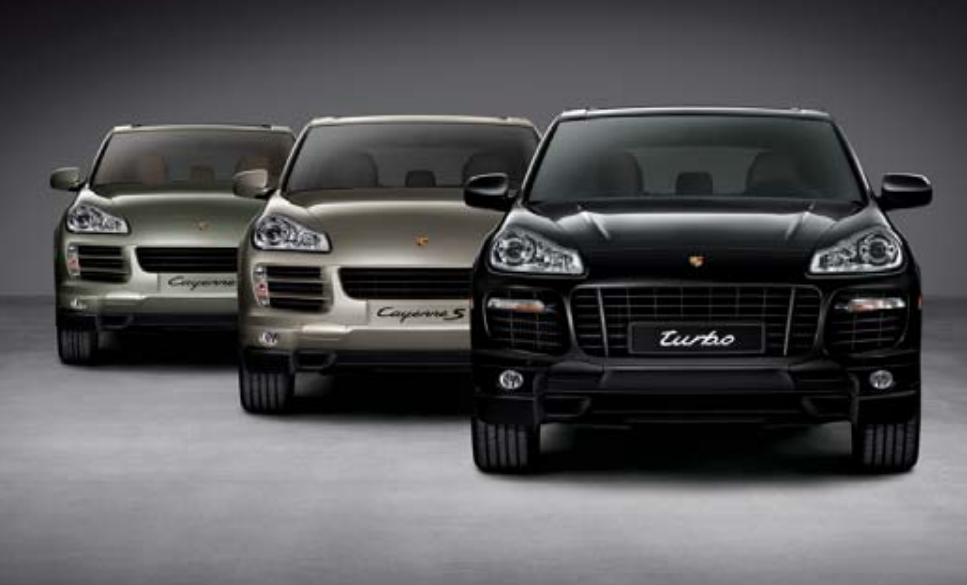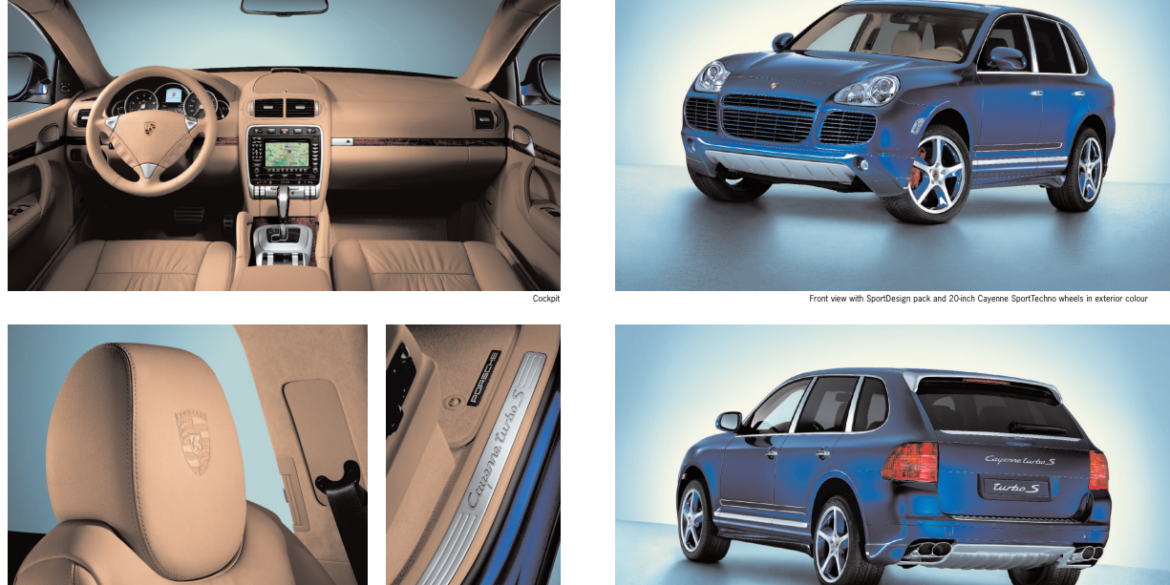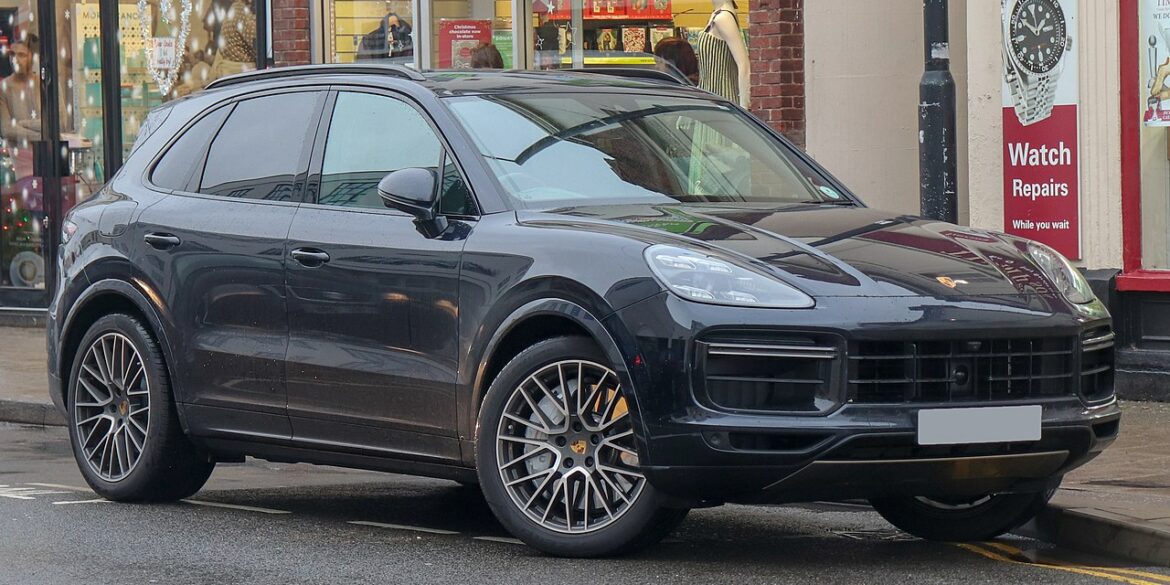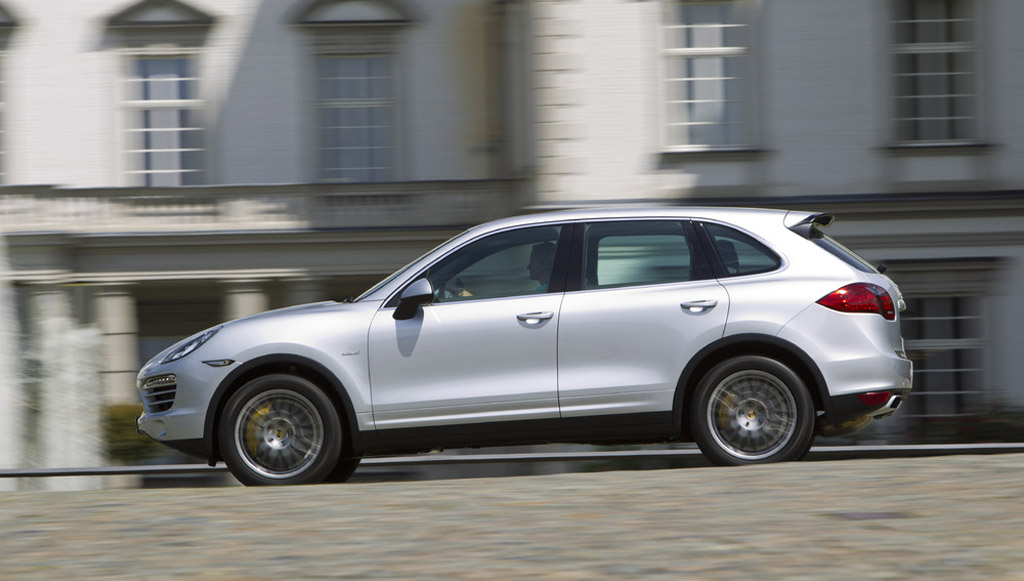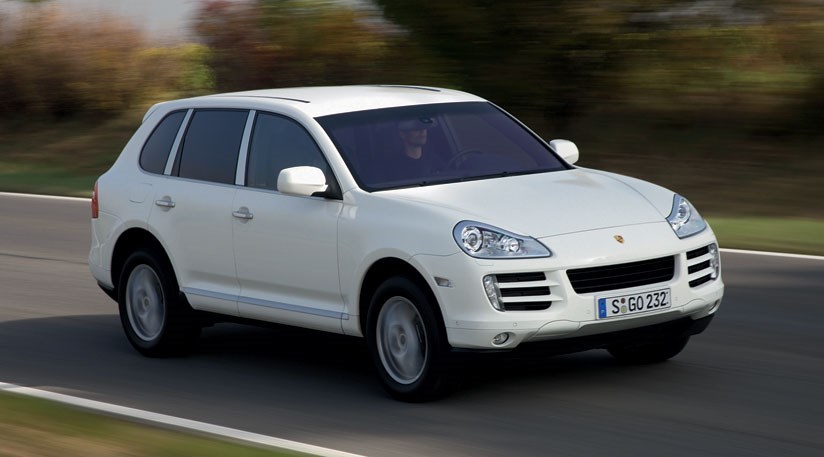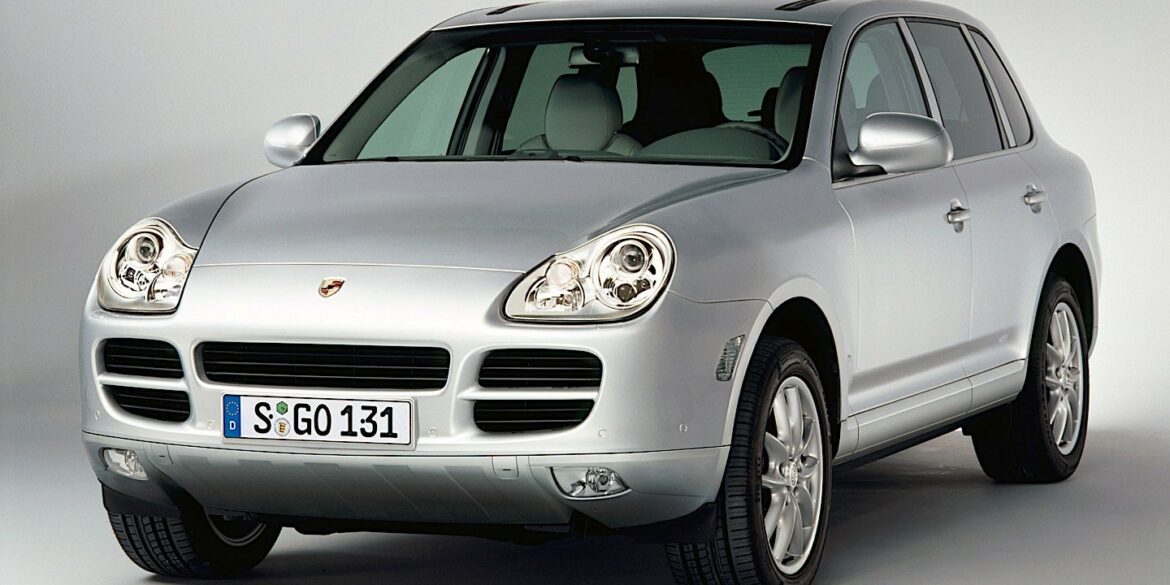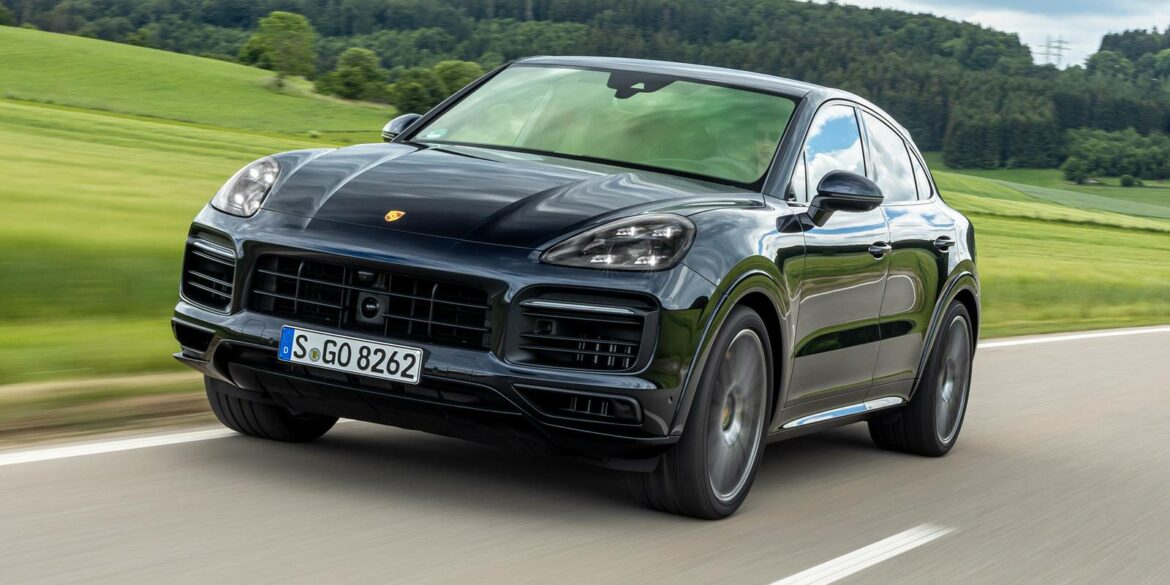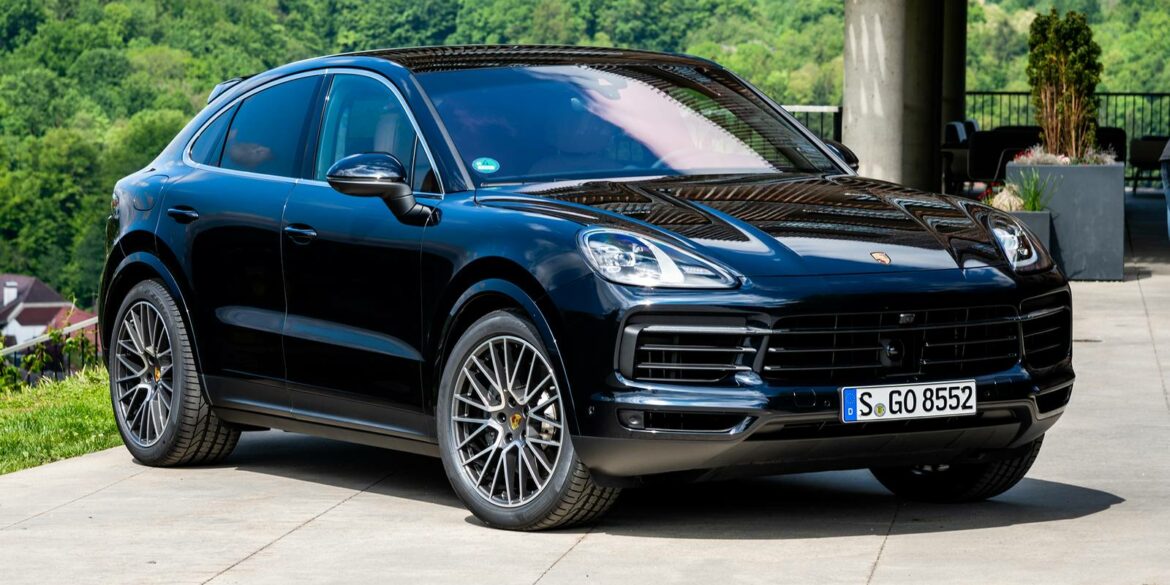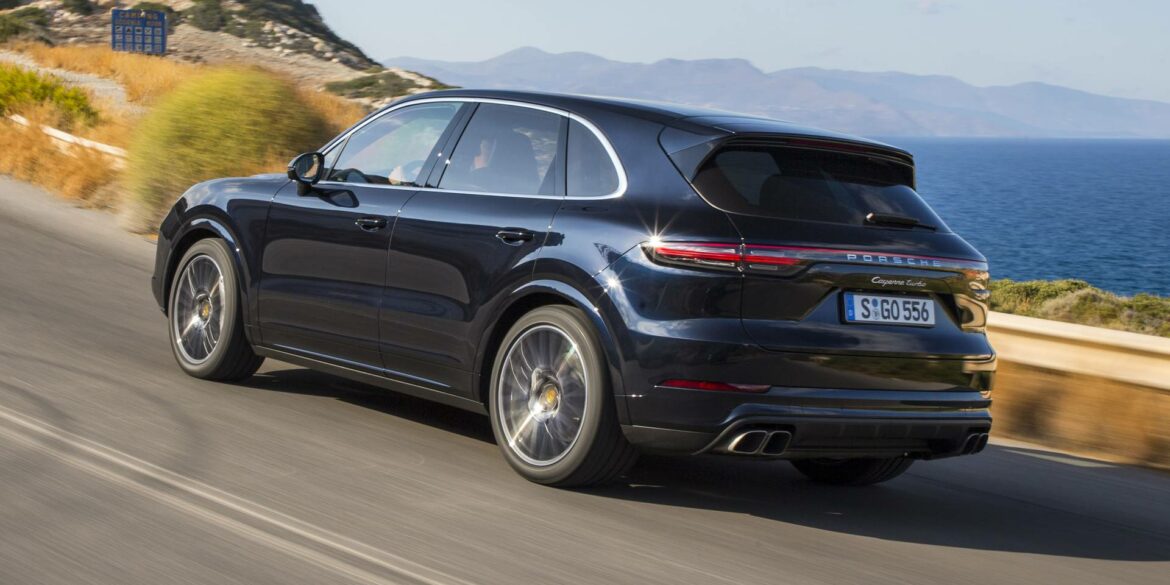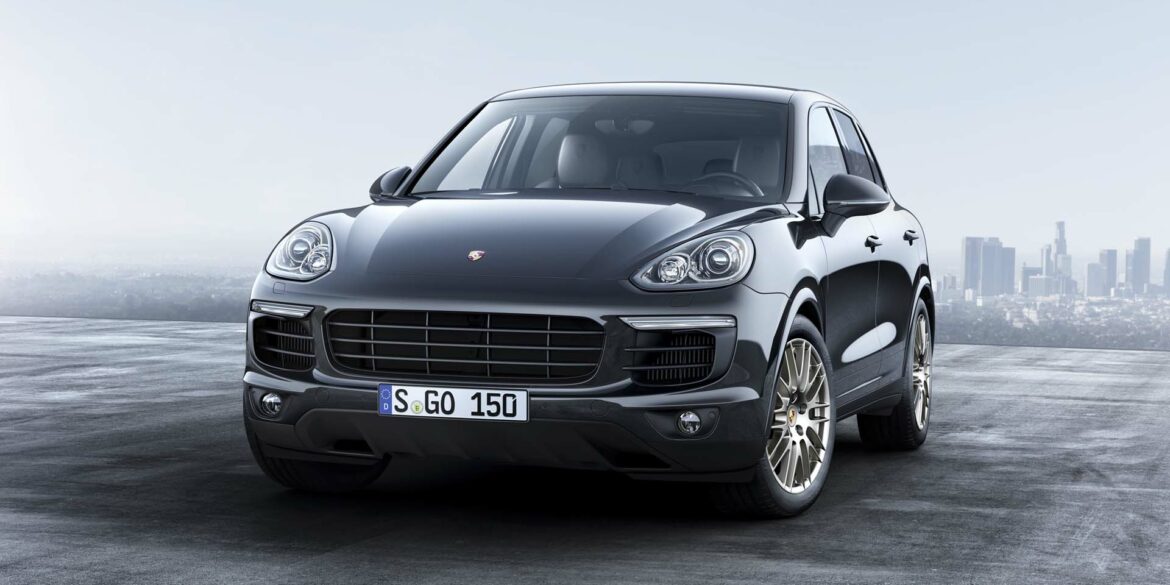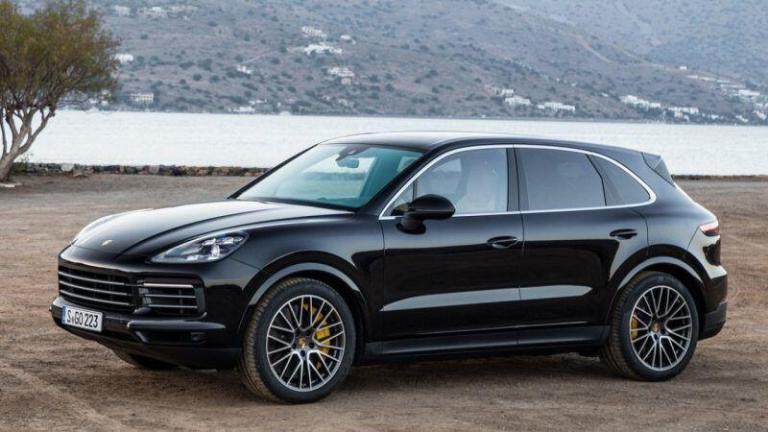Worldwide testing of the new Porsche Cayenne is in full swing. As part of the fine-tuning of its second all-electric SUV, Porsche sent a near-production prototype on a record-gathering mission, while also providing a glimpse of the Cayenne Electric’s high levels of usability. For more than 20 years, the Porsche...
What happens when you line up a massive hybrid SUV against a finely tuned sports coupe in a quarter-mile drag race? Carwow set out to answer exactly that by pitting the Porsche Cayenne Turbo E-Hybrid GT Package against the BMW M4 Competition xDrive. At first glance, it seems like an...
2019 – Present Porsche Cayenne Service Schedule The Porsche Cayenne 9YA/9YB (2019–present) represents the latest evolution of Porsche’s luxury performance SUV, offering advanced technology, powerful turbocharged and hybrid powertrains, and refined driving dynamics. As a modern Porsche, factory-recommended service intervals are crucial for warranty compliance, but owners who drive their...
Over twenty years after its launch, the first-generation Porsche Cayenne has had new life breathed into it as part of a project in the United Arab Emirates during the Icons of Porsche festival. The Porsche Cayenne is a milestone car for the Middle East. When it launched in 2002, it...
Base Porsche Cayenne (2024 – Present) – Ultimate Guide The 2024 Porsche Cayenne doesn’t try to reinvent the wheel; it just quietly improves on everything it already did well. This is still Porsche’s best-selling SUV, the one that kicked off the brand’s foray into utility vehicles over two decades ago....
30 Point Porsche Cayenne Buying & Inspection Checklist In this guide, we’ll walk you through a comprehensive 30-point checklist, covering everything you need to check irrespective which generation Porsche Cayenne you are looking to buy. We’ve even created a free, printable PDF version for each generation Cayenne that you can...
Frequent Porsche Cayenne Problems & Solutions – A Step by Step Guide to Help Owners Diagnose and Solve Your Most Annoying Cayenne Issues The Porsche Cayenne is a luxury SUV with sports car DNA, offering high performance, cutting-edge technology, and off-road capability. However, like any high-performance vehicle, it comes with...
Current Porsche Cayenne GTS Coupe – Ultimate Guide The 2024 Porsche Cayenne GTS Coupé brings the same performance-focused upgrades as the GTS SUV but packages them in a sleeker, more expressive silhouette. With a lower roofline, unique design details, and a few exclusive features, the GTS Coupé is aimed at...
Current Porsche Cayenne GTS – Ultimate Guide The 2024 Porsche Cayenne GTS SUV returns with a more focused edge, delivering the kind of driving experience that sets it apart from the rest of the Cayenne lineup. While the standard Cayenne already blends sports car dynamics with SUV practicality, the GTS...
Current Porsche Cayenne S – Ultimate Guide The Porsche Cayenne has always walked the line between a luxury SUV and a true performance machine. For 2024, Porsche delivered one of the most extensive updates in the model’s history. Nearly everything gets touched: powertrain, suspension, interior layout, and even the lighting....
Individuality and performance redefined: The TECHART Aero Kit I for all Porsche Cayenne facelift models E3.2 is here. For all those who want to transform the Porsche Cayenne into an even more powerful and unmistakable appearance, TECHART presents the new Aero Kit I. Race Inspired Design With this exclusive conversion...
Current Porsche Cayenne Turbo GT – Ultimate Guide The 2024 Porsche Cayenne Turbo GT is back, and it’s even sharper, faster, and more focused than before. Available only as a Coupé, Porsche designed the Cayenne Turbo GT for maximum on-road performance, blending everyday practicality with true track-worthy handling, all without compromising...
For more than twenty years, the Cayenne has been characterized by its ability to provide a broad range of qualities: characteristic Porsche driving performance, excellent comfort in everyday driving, and great capability when driving off-road. The future models of the SUV will seamlessly continue this success story, retaining all of...
Current Porsche Cayenne E-Hybrid SUV – Ultimate Guide The 2024 Porsche Cayenne E-Hybrid SUV returns with more power, more electric range, and smoother operation, all wrapped in the familiar, practical shape of Porsche’s best-selling SUV. This year, Porsche has made some meaningful upgrades under the skin that not only improve...
Current Porsche Cayenne S Coupe – Ultimate Guide The Cayenne S Coupé has always played the stylish sibling in Porsche’s SUV family, leaning into design without giving up the muscle. For 2024, it returns with sharper looks, smarter tech, and, most importantly, a V8 under the hood. This year’s update...
Current Porsche Cayenne S E-Hybrid Coupe – Ultimate Guide The 2024 Porsche Cayenne S E-Hybrid Coupe offers a slightly different flavor of performance and luxury, designed for drivers who want the efficiency of a plug-in hybrid and the sleek style of a sportier SUV. It shares its powertrain with the...
Current Porsche Cayenne Coupe – Ultimate Guide The 2024 Porsche Cayenne Coupe is Porsche’s stylish alternative to the traditional Cayenne SUV, offering buyers the same dynamic performance with a more distinct, sport-oriented design. Introduced initially in 2019, the Cayenne Coupe has quickly become popular among enthusiasts who value both aesthetics...
Common Problems with the Porsche Cayenne: What Every Buyer and Owner Should Know The Porsche Cayenne has been a game-changer in the luxury SUV market since its debut in 2003, blending performance, practicality, and Porsche engineering into a high-powered, all-terrain package. Over the years, the Cayenne has evolved through three...
Current Porsche Cayenne S E-Hybrid SUV – Ultimate Guide The 2024 Porsche Cayenne S E-Hybrid SUV strikes a careful balance between performance, luxury, and electrified efficiency. Positioned between the standard E-Hybrid and the high-output Turbo E-Hybrid, this model brings more than just a power bump it represents a refined, tech-forward...
Current Porsche Cayenne E-Hybrid Coupe – Ultimate Guide For 2024, the Porsche Cayenne E-Hybrid Coupe shares its upgraded hybrid powertrain with the SUV variant but packages it in a sleeker, more style-focused body. While the drivetrain and tech updates mirror what you’ll find in the standard Cayenne E-Hybrid, the Coupe...
At Porsche, the “GTS” designation—short for Gran Turismo Sport—signifies enhanced dynamism and long-distance performance. The Cayenne fundamentally embodies the dual characteristics of a high-performance sports car and a versatile all-terrain SUV. However, the GTS models traditionally emphasize superior on-road performance. Equipped with a robust drive system, meticulously calibrated handling, and...
Current Porsche Cayenne Turbo E-Hybrid Coupe – Ultimate Guide The 2024 Cayenne Turbo E-Hybrid Coupe takes the same powerhouse formula as its SUV sibling and wraps it in a sleeker, more aggressive design. You still get the same bonkers 729 horsepower and 700 lb-ft of torque, the same plug-in hybrid...
Current Porsche Cayenne Turbo E-Hybrid SUV – Ultimate Guide The 2024 Cayenne Turbo E-Hybrid isn’t just another high-performance SUV, it’s the most powerful Cayenne Porsche has ever built. With a powertrain that marries a twin-turbo V8 to a significantly improved plug-in hybrid system, this SUV delivers both insane horsepower and better-than-expected...
Porsche Cayenne Paint Color Options & Samples This post outlines all the color options for the Porsche Cayenne over its production life. We have official books and catalogs of all the color options for the Porsche Cayenne over the years. Porsche Cayenne E1 Colors (MY2003) No Subscription? You’re missing out...
After the successful launch of the new Cayenne in early 2023, Porsche is topping off the comprehensively revised third generation of this successful SUV with a new top model. As before, the most powerful Cayenne is a plug-in hybrid. Porsche has upgraded the technology in this successor to the Cayenne...
Starting at $190,150 in the US and $214,780 in Canada, the 2022 Porsche Cayenne Turbo GT is a powerful SUV equipped with a 4.0 L twin-turbo V8 engine producing an impressive 631 horsepower and 626 lb-ft of torque. Despite its sleek and understated appearance compared to other Cayenne models, it...
2011 – 2017 Porsche Cayenne Service Schedule The Porsche Cayenne 958 (2011–2017) refined Porsche’s luxury SUV formula, offering improved reliability, better fuel efficiency, and advanced technology while maintaining the performance and capability the Cayenne is known for. However, as these models age and accumulate miles, sticking to a well-planned maintenance...
Prepare for a showdown between two vehicles that will surely pique your interest! The contenders are a Porsche Cayenne and a Skoda Kodiaq vRS and they are put to a series of tests by the folks at carwow to see which car has better off-road capabilities. Firstly, let’s examine the...
A 2020 Porsche Cayenne Turbo Coupe complete a full lap around Laguna Seca in 1 minute and 40.3 seconds with pro driver Randy Pobst onboard....
The all-new Cayenne Turbo GT, introduced for the 2022 model year, packs a fearsome punch that rivals will find hard to match. The term ‘Super SUV’ was made popular by a familiar relative, the Lamborghini Urus. However, the Cayenne Turbo GT might have just elevated that performance concept to a whole...
The all-new Cayenne Turbo GT, introduced for the 2022 model year, packs a fearsome punch that rivals will find hard to match. The term ‘Super SUV’ was made popular by a familiar relative, the Lamborghini Urus. However, the Cayenne Turbo GT might have just elevated that performance concept to a whole...
The all-new Cayenne Turbo GT, introduced for the 2022 model year, packs a fearsome punch that rivals will find hard to match. The term ‘Super SUV’ was made popular by a familiar relative, the Lamborghini Urus. However, the Cayenne Turbo GT might have just elevated that performance concept to a whole...
The Porsche Cayenne Turbo GT Coupe is the fastest SUV to go around the Nurburgring and one of the fastest vehicles we’ve had on our channel. The Cayenne Turbo GT makes 631 horsepower and 625 lb-ft of torque from a 4.0 L V8 ....
Who’s ready for an SUV v supercar drag race?! We’ve got Mat lining up in the incredible Porsche Cayenne Turbo GT, and he’s going to see if this performance SUV has what it takes to beat a rear-wheel drive R8 over the quarter-mile! So let’s check out the stats. Starting with the...
Ultimate Review & Comparison – Cayenne Turbo GT v Aston Martin DBX 707 Which is the best high-performance SUV (that isn’t a Lamborghini)? Is it the Aston Martin DBX 707, or the Porsche Cayenne Turbo GT? Well, it’s time to find out! Mat’s got his hands on these two SUV...
Below is a really thorough review of the 2022 Porsche Cayenne Turbo GT by The Straight Pipes team. The Turbo GT is putting down 631 horsepower and 626 lb-ft of torque from a Twin Turbo 4L V8 and it is the top dog in the Cayenne lineup. But is it...
Sub-four-second 0-60s and 600bhp are performance figures that were once exclusively the domain of supercars, but not these days… In the first installment of Stig’s Garage, we take two of the fastest SUVs on the market and pit them against each other on the Top Gear Test Track. Which one...
For those in the market for a people mover and some fun at the same time, the Macan GTS and Cayenne GTS are both pretty awesome machines. We found a new video review that compares the two cars. AJ takes you on an in-depth comparison review, Porsche Macan GTS vs...
Porsche is stuffing a built twin-turbocharged 4.0-liter into the Cayenne Coupe, and it's the most powerful V-8 the German automaker has ever produced. It makes 631 horsepower in this new Turbo GT model, and Porsche says its factory driver Lars Kern set a new SUV lap record at the Nürburgring Nordschleife in it lapping the 12.9-mile course in 7:38.9. The new Cayenne will arrive in the U.S, only in Coupe form, next year starting at $182,150.
The Cayenne Turbo S E-Hybrid Coupe mixes ultimate performance with comfort and Infotainment. The Turbo GT has all the attributes to be ahead of the game from the start. The twin-turbo V8 engine and electric motor combination make it an absolute monster. So much so, that it became top dog in the Porsche SUV lineup, relegating the 541-hp Cayenne Turbo to second place. This is an SUV that has the price, prestige, and performance, but it is the Coupe that has the looks. Generating 670 combined horsepower and 633 lb-ft of torque.
The 434-hp Cayenne S goes from 0 - 60 mph in just 4.2 seconds, same as the SUV. In fact, the Coupe and SUV share everything from engines to suspension components to interior trimmings and onboard tech, with only a sloping roofline setting them apart. Our advice. If you want less practicality with a cool fastback roofline, the Porsche Cayenne S coupe is a more stylish version of the Cayenne S. A great all rounder.
Porsche fitted the Cayenne E-Hybrid with a turbocharged 340 hp 3.0-liter V6 engine combined with a 136 hp electric motor for the drivetrain. Total combined power output reached 462 hp. The whole assembly was mated to an 8-speed automatic transmission that sent the power in all corners. Now it comes with a coupe body? Not sure the combination makes much sense to us, but hey this is Porsche and they know more than we do I guess.
The Cayenne Coupe is a version of Porsche's largest SUV with a heavy dose of extra swagger. Porsche introduced the new variant a year after the debut of the third-generation Cayenne, for the 2020 model year. While we like the look of the coupe, it feels out of place on the base Cayenne (which is more a family SUV choice). A nice package, but we would recommend spending a bit more and going for the Cayenne S or GTS.
Three letters are all it takes to describe the glint in your eye and intense goosebumps – GTS. Pure and thrilling: the Cayenne GTS models bring a motorsport atmosphere to the road. Enough power to strive for more freedom: with 453 hp and 457 lb.-ft. of torque, the 4.0-liter twin-turbo V8 engine exudes a drive that helps achieve your goals. The striking black accents on the front fascia, sideskirts and aerodynamic roof spoiler combined with the coupe bodystyle.
The third generation of the Porsche Cayenne was unveiled in August 2017. In 2022, the Cayenne added the Platinum Edition to the SUV and coupe body styles. The Platinum Edition Cayenne applies a coat of Satin Platinum paint to a number of the vehicle's badges, as well as its fascia-mounted intake treatment and its distinct 21-inch wheels. Black exhaust tips and window trim add an extra hint of menace to the model.
Porsche Cayenne Sales Figures Porsche Cayenne Sales Numbers (U.S Market) Sales Totals Per Year & Model (coming soon) No Subscription? You’re missing out Get immediate ad-free access to all our premium content. Get Started Already a Member? Sign in to your account here....
A new Porsche SUV is in the works, and some dealers have already been given a sneak preview at Porsche’s Atlanta headquarters in the United States. It will take over from the existing Cayenne as the new flagship SUV. It is yet another interesting development for the brand that established...
2002-2006 Porsche Cayenne Service Schedule The Porsche Cayenne 955 (2003–2006) and 957 (2008–2010) were Porsche’s first foray into the SUV market, bringing sports car performance, off-road capability, and luxury together in one package. While these models were built to last, all first-generation Cayennes are now well over a decade old,...
3rd Generation Porsche Cayenne (9YA) Story & History Cayenne (2019 – Present) Date of unveil by Porsche AG: 2017 August 29 / Premiere: 2017 August 29 in Stuttgart Porsche Museum / Market launch: end of 2017 Performance Data (9Y0) Performance Data (9Y3) * Sport Chrono Pack/Launch Control ** with...
2nd Generation Porsche Cayenne (958.2) Story & History Cayenne (2015 – 2018) Date of unveil by Porsche AG: 2014 July 24, Turbo S 2015 January 12 / Premiere: 2014 September 26 at Tartu Motoshow, Turbo S 2015 January 12 at NAIAS / World market launch: 2014 October 11 (as 2015...
2nd Generation Porsche Cayenne (958.1) Story & History Cayenne (2010 – 2014) Date of unveil by Porsche AG: 2010 February 25, Turbo S 2012 October 12 / Premiere: 2010 March 2 at Geneva Motor Show / World market launch: 2010 May 8, Turbo S 2013 January Performance Data Porsche 958...
The Cayenne GTS is the hair-splitter’s latest achievement. It’s a Cayenne powered by the same 4.8-liter V-8 as seen in the Cayenne S but tuned for an additional 20 horsepower and 11 pound-feet of torque to make 420/380. It wears a body similar in style to the Cayenne Turbo, meaning a domed hood, blacked-out trim, and body-color fender extensions and side skirts. And it’s loaded with standard performance gear that is optional on lesser Cayennes. What isn't there to like?
Car and Driver said "It isn't really a coupe, but this 541-hp fastback SUV is the same awesome Cayenne Turbo underneath—with a sexier backside". We agree. Here's what you need to know. With its 541-hp twin-turbo 4.0-liter V-8, eight-speed automatic transmission, and all-wheel drive, the new fastback version of Porsche's largest SUV is mechanically identical to the conventional Cayenne Turbo SUV, and the two vehicles feel exactly the same from behind the wheel.
Its top model was the Cayenne Turbo, with 550 hp under the hood. The third generation came to fix what its predecessor was criticized for: the exterior design. While the second generation featured some details that could remind of a Hyundai, the third generation was completely new from tip to toe. Under the hood, the Cayenne Turbo featured a 4.0-liter V8 unit with two turbochargers. It was mated as standard to an eight-speed automatic transmission.
The V8 is back in the Cayenne GTS after a break for the second generation (it got a twin-turbo V6). The Cayenne GTS is now also available in the new "Coupe" body style. A twin-turbocharged 4.0-liter V8 is good for 453 horsepower and 457 lb-ft of torque. Zero to 60 mph takes a claimed 4.2 seconds if the Sport Chrono package is fitted, and top speed rises to 168 mph. he only transmission available is an eight-speed automatic. This is one sweet ride.
The 434-hp Cayenne S goes from 0 - 60 mph in just 4.2 seconds. Its twin-turbocharged 2.9-liter V-6 helps it to crush the quarter-mile in just 12.8 seconds. Perhaps even more impressive is that the on the optional 21-inch Pirelli P Zero summer tires, the Porsche has a 0.93 g of cornering grip. This is basically a sports car in an SUV body. The Cayenne's dynamic excellence is unmatched in the segment. Easily the best SUV on sale today.
The E-Hybrid version of the current Cayenne came in 2018. Porsche used the same platform as the Bentley Bentayga and the Lamborghini Urus for the third generation of the Cayenne. This platform was designed from the beginning to accept a hybrid version. It also featured a rear-axle steering system which really helps with low speed turning and cornering at speed.
The third generation of the Porsche Cayenne was unveiled in August 2017. The third generation Cayenne is built on a totally new platform, shared with SUVs like the Bentley Bentayga and Lamborghini Urus. It was fitted with important technical upgrades, such as the rear-axle steering system, which allowed a better cornering speed and an easier parking maneuver.
The Cayenne S diesel earns the “S” by way of a twin-turbocharged 4.2-liter diesel V-8 engine that pumps out a prodigious 382 hp and 627 lb-ft of torque. By comparison, the non-S Cayenne diesel’s 3.0-liter V-6 spits out a relatively puny 240 hp and 406 lb-ft of twist. Interestingly, the S diesel gets Porsche’s engine stop-start system standard; here in the U.S., the fuel-saving feature isn’t available on the pedestrian Cayenne diesel.
The Cayenne S diesel earns the “S” by way of a twin-turbocharged 4.2-liter diesel V-8 engine that pumps out a prodigious 382 hp and 627 lb-ft of torque. By comparison, the non-S Cayenne diesel’s 3.0-liter V-6 spits out a relatively puny 240 hp and 406 lb-ft of twist. Interestingly, the S diesel gets Porsche’s engine stop-start system standard; here in the U.S., the fuel-saving feature isn’t available on the pedestrian Cayenne diesel.
The facelifted version of the Porsche Cayenne was introduced in 2014 and it received a restyled design, new features, and, most important, upgraded engines, such as the V6 diesel version. The V6 diesel version played an important role in this and Porsche decided to keep it in the stable. Along with the facelifted version of the second generation Cayenne, a new V6 diesel was installed. Under the hood, the 2014 Cayenne Diesel offered an enhanced version of the 3.0-liter V6 diesel unit.
The V6 diesel engine was the same unit found in the other Volkswagen group models. The 3.0-liter unit offered 240 hp. It was mated as standard with an 8-speed automatic gearbox. Cayenne Diesel Turbo 3.0 176 kW for 2011 model year. In 2012, power increased to 180 kW. 2013 saw the launch of the Cayenne Diesel S Turbo 4.1 281 kW version. The Cayenne Diesel with its 240 bhp is hardly a top performer.
The Turbo S version was the sportiest version for the second generation of the Porsche Cayenne and, along with the rest of the stable, it received a facelift for the 2015 model year. The revised engine offered 20 hp more than its predecessor. It was the same twin-turbo 4.8-liter V8 unit and it was paired to an 8-speed auto and like the Turbo, it was offered with a standard air-suspension but adds Ceramic Brakes system.
As the flagship of the Cayenne army, the Turbo S was well received by those who were looking for a faster SUV. And it wasn't only the speed, but also the cornering speed that the Turbo S was capable of. The engine was based on the 4.8-liter V8 unit installed in the Cayenne S and Cayenne Turbo, but with a higher compression ratio that led to 50 more hp. The standard transmission was an 8-speed Tiptronic S.
The second generation of the Porsche Cayenne was launched at the 2010 Geneva Motor Show. It was a big improvement over its predecessor and featured an evolved design. For the engine, the Cayenne Turbo featured a 4.8-liter V8 unit which offered 500 hp. For the transmission, the 2010 Cayenne lost the low-range transfer case. The standard transmission was an 8-speed Tiptronic gearbox. All-wheel drive was installed standard as well. Other new improvements led to a decrease in the overall weight by 180 kg (400 lbs).
Named after the 7200km intercontinental rally which the Cayenne won in 2007, the Porsche Cayenne S Transsyberia Special Edition offers a number of enhancements. It takes the 4.8-liter V8 unit that develops 405bhp and 500Nm of torque from the range topping GTS allowing the model to drop its base 0-60 mph time down by 0.5 seconds to 6.1 seconds. It is mated to a six-speed manual gearbox (automticac optional), with a 4.1:1 drive ratio and air suspension coupled with PASM.
The Cayenne S Titanium Edition was designed specifically for the U.S. and Canadian markets. Introduced only for 2006 (as a pre-GTS concept), it was a 1 year exclusive, limited production SUV featuring a lightweight steel body, aluminium hood, titanium-painted accented body parts, side lower rocker body panels, Sport-Quad Tip Exhaust chrome tailpipes, 19" titanium painted alloy wheels, bi-xenon headlights, two-tone interior upholstery, Porsche PCM 2.0 w/ trip computer navigation, MP3 audio and Bose cabin surround sound.
The Cayenne Turbo facelift was introduced in 2014 as a 2015 MY. Think of it as an enhanced version of the non-facelifted version. It offered the same torque as the non-facelifted Cayenne Turbo S, but less power. Under the hood, the revised engine offered 20 hp more than its predecessor. The exterior of the 2015 Cayenne was enhanced with a sharper design and clear lines. The front fenders, the grille, and the headlights were entirely new, with LEDs.
Porsche made things more interesting with the launch of a Turbo S version in 2006 to compete with the Mercedes-Benz ML 63 AMG. The Turbo S is powered by a twin-turbocharged 4.5 L V8 that produces 521 PS (383 kW; 514 hp) and 720 N⋅m (530 lb⋅ft) of torque; Acceleration from 0–60 mph (97 km/h) takes 5.0 seconds and the top speed is 171 mph (275 km/h); It features a six-speed automatic Tiptronic transmission.
For the 2015 facelift, the Cayenne GTS was improved in every way, offering better performances and lower fuel consumption. But unlike the rest of the range, it offered a sportier look. That side was reserved for the GTS, which took its badge from the 1963 Porsche 904 GTS. It was the first Porsche to revive that acronym.
The exterior of the 2014 Cayenne Hybrid was slightly different than the rest of the range. From the 4-LED daytime running lights and the green brake calipers to the special light-alloy wheels. The rear roof-spoiler was standard as well. Unusual though, even if the German SUV was a plug-in hybrid, it featured four round exhausts. The engine was a 3.0-liter supercharged V6 which offered 333 hp. It was helped by a 95 hp electric motor.
The absolute highlight of this new generation is the world debut of the Cayenne S Hybrid with its technically highly sophisticated parallel full hybrid drive and fuel consumption in the New European Driving Cycle of just 8.2 litres/100 kilometres (equal to 34.4 mpg imp), which means CO2 emissions of just 193 g/km. The Cayenne S Hybrid therefore combines the performance of an eight-cylinder with the economy of a six-cylinder running on much less fuel.
The Cayenne S gains V-6 power during its midcycle update. Porsche advertises more power und more efficiency—the new motor is up 20 horsepower to 420. Torque is a healthy 406 lb-ft, but the turbo-six lacks the personality of the V-8. Which, as V-8s go, was quite nice if rather generically Teutonic. Like, perhaps the iron-fisted Swabian middle manager of V-8s. It keeps the 8-speed automatic. Porsche claims that it has made interior revisions, but the innards look pretty much the same to us, save for the new steering wheel.
Car and Driver said:' "More horsepower and less weight add up to a winning combo in the Cayenne S". We agree. Alongside the weight loss and the striking new exterior and interior design, Porsche got an extra 15 hp from the Cayenne S’s naturally aspirated 4.8-liter V-8. A new transmission with two more forward ratios (now an 8-speed) transforms the drive. Cayenne S hits 60 mph in 5.5 seconds and clear the quarter-mile in 14.1 at 101 mph.
In July 2014, Porsche launched a facelifted Cayenne range for the 2015 model year. Minor exterior alterations and new power-train options. For the base Cayenne, there was a a mildly revised exterior and interior inspired by the 918 Spyder. Two new interior colors, Carrara White and Palladium Metallic, are new while the two-tone black/beige upholstery is now a no cost option. Dark walnut is also a new addition to the available interior accents. The suspension on all Cayennes has also been revised.
The second-generation Cayenne moved the game on for SUVs. It has a nicer design, more powerful engines and much nicer interiors. The base V6 Cayenne was good for 299 hp @ 6,300 rpm and 295 ft lbs of torque. Acceleration was decently brisk with 0 - 60 mph over in 7.5 seconds and top speed of 143 mph. The car was slightly longer, wider, and higher than its predecessor. All new models shared the new headlight graphics with additional lights at the inside so unmistakably Porsche.
1st Generation Porsche Cayenne (957) Story & History Cayenne (2007 – 2010) Unveil of official photos: 2006 December 4 / Premiere: 2007 January 8, press event before North American / International Auto Show in Detroit / Market launch: 2007 February 24 The 2007 model year was skipped for the Cayenne...
1st Generation Porsche Cayenne (955) Story & History Cayenne (2002 – 2006) Unveil of official photos: 2002 March 4 / Premiere: 2002 September 25 at Paris motor show press day / Market launch: 2002 December Performance Summary Weight here is DIN weight (90% of fuel, no driver, no cargo). Weight...
The European market asked for a diesel engine and the car-maker had to deliver it to keep the sale up in a struggled market affected by the world financial crisis. The engine was a carry-over from the Audi line-up, with a variable turbocharger system and a 3.0-liter displacement. It offered 240 hp and it was tuned to offer more performance. For instance, at hard accelerations, the system disengaged the AC compressor until the engine reached 2500 rpm.
An exclusive limited edition Cayenne GTS “Porsche Design Edition 3”. Limited to just 1,000 units worldwide, the limited edition Cayenne adds equipment and Porsche Design styling touches to stand out from the crowd. Distinguishing the special edition model is a Lava Grey paint scheme, extended roof spoiler, racing stripes, and 21in alloy wheels in a matching anthracite finish. This special edition looks the goods, but sadly there were no mechanical changes to differentiate it from the core GTS.
The Cayenne Cayenne GTS was fitted with a 4.8-liter V8 unit, which developed 405 hp. Unlike the Turbo, it was offered with a 6-speed manual as well, while the Tiptronic S (automatic) 6-speed transmission was on the options list. This was the true enthusiasts SUV and the sweet spot in the Cayenne lineup. It also looked great with the black accents and more agressive touches throughout the exterior.
The 2008 model year marks the launch of updated Porsche Cayenne. With a striking new face that features a dramatic new headlight design and with a wide and muscular new body accented by broad wheel arches, the 2008 Porsche Cayenne's newly sculpted sheetmetal provides vivid visual testimony to the vehicle's enhanced technical features. Inside, the interior has received an important update with new infotainment unit, new gauges and more.
The first-generation Cayenne was what saved Porsche. The based Porsche Cayenne 955 entered the market to a mixed reception, although it was the performance vehicle among SUVs and had comparably good handling as well as powerful engines.[3] The lineup initially consisted of the V8-powered Cayenne S and Cayenne Turbo. Later in the model cycle, VR6 and diesel-powered versions joined the lineup. The base model is powered by a VW 3.2-L VR6 engine producing 250 PS (184 kW; 247 hp). The engine is largely the same as the VW engine.
The entire Cayenne range got a 2008 facelift. The big changes were cosmetic, with Porsche getting rid of the Porsche 996-inspired headlights and sharpening up the Cayenne S lines. A new, vertical, daytime running light appeared on the outer side of the side-scoops and the center grille was smaller. The Cayenne S started to better develop its own unique personality with the 17” light-alloy wheels fitted as standard. The Cayenne S also got cool exhausts.
The first-generation Cayenne saw the introduction of the Cayenne S in 2002. While the base Cayenne had a 3.2-L VR6 engine, the Cayenne S got a 4.5 L V8 with more power and torque. The extremely short and compact normal-aspirated V8 produced 340 hp and 310 lb⋅ft of torque. Acceleration for the Cayenne S is strong for an SUV, with 0–60 mph taking 6.9 seconds and the top speed being 150 mph. The Cayenne S also have some visual changes to better identify it, but was otherwise standard Cayenne fair.
The facelift for the flagship Cayenne came in 2008. The Porsche Cayenne Turbo S is the most powerful Cayenne ever built. Sharing the same essential 4.8-liter V8 engine as the Cayenne S, GTS and Turbo, the Turbo S got 550 horsepower and 553 lb.-ft. of torque. That's a ten percent increase in power and a seven percent boost in torque over the Cayenne Turbo. 0 to 60 mph is over in 4.7 seconds on its way to a track-proven top speed of 174 mph. Like the Cayenne S and Cayenne Turbo, the Turbo S comes standard with a six-speed Tiptronic S driver-shiftable automatic transmission.
The facelift for the first generation of the Cayenne was introduced in 2007. More powerful in every respect - that is how the new generation of the Porsche Cayenne entered the market. New striking face upfront on a wide and muscular body, with headlights in brand-new design, and with broader, even more powerful-looking wheel arches. The Turbo model 957, featuring a larger 4.8-L engine with 49 hp more power, 0–60 mph time of just 4.9 seconds.
Porsche Cayenne (Third Generation) Sales Brochures We found several Porsche sales brochure for the third generation Cayenne, which is known as the Type 9Y0 (SUV) and 9Y3 (Coupe) which is the current model (from 2018 model year). No Subscription? You’re missing out Get immediate ad-free access to all our premium...
Porsche Cayenne (Second Generation) Sales Brochures We found several Porsche sales brochures for the second generation Cayenne, which is known as the Type 958 which ran from 2011 till 2017. Note that there was a first generation Cayenne that ran from 2003 till 2006 and was known as the Type 955...
Porsche Cayenne (First Generation) Sales Brochures We found only one Porsche sales brochure for the first generation Cayenne, which is known as the Type 957. Note that there was a first generation Cayenne that ran from 2003 till 2006 and was known as the Type 955. Looking for the 2007...
Porsche Cayenne (First Generation) Sales Brochures We found only one Porsche sales brochure for the first generation Cayenne, which is known as the Type 955. The highlight of the initial Cayenne range was the powerful Cayenne Turbo. No Subscription? You’re missing out Get immediate ad-free access to all our premium content....
Porsche Cayenne Spare Parts Catalogs (2018 – 2021 Model Year) These official Porsche PET Diagrams and codes for the current Porsche Cayenne (2018 to 2021) models. Free for you to download and view. Whether you are working on your own Porsche Cayenne and need the total parts guide or are...
Porsche Cayenne Spare Parts Catalogs (2011 – 2018 Model Year) These official Porsche PET Diagrams and codes for the current Porsche Cayenne (2011 to 2018) models. Free for you to download and view. Whether you are working on your own Porsche Cayenne and need the total parts guide or are...
Porsche Cayenne Spare Parts Catalogs (2008 – 2010 Model Year) These official Porsche PET Diagrams and codes for the current Porsche Cayenne (2008 to 2010) models. Free for you to download and view. Whether you are working on your own Porsche Cayenne and need the total parts guide or are...
Porsche Cayenne Spare Parts Catalogs (2003 – 2006 Model Year) These official Porsche PET Diagrams and codes for the current Porsche Cayenne (2003 to 2006) models. Free for you to download and view. Whether you are working on your own Porsche Cayenne and need the total parts guide or are...
Porsche Option Codes – Porsche Cayenne (2021 Model Year) Looking to decode your 2021 Porsche Cayenne option codes? Want to know what those codes are in your 2021 Porsche Cayenne service manual? Then this is the post for you. We painstakingly researched all the Porsche option and equipment codes for...
Porsche Option Codes – Porsche Cayenne (2020 Model Year) Looking to decode your 2020 Porsche Cayenne option codes? Want to know what those codes are in your 2020 Porsche Cayenne service manual? Then this is the post for you. We painstakingly researched all the Porsche option and equipment codes for...
Porsche Option Codes – Porsche Cayenne (2019 Model Year) Looking to decode your 2019 Porsche Cayenne option codes? Want to know what those codes are in your 2019 Porsche Cayenne service manual? Then this is the post for you. We painstakingly researched all the Porsche option and equipment codes for...
Porsche Option Codes – Porsche Cayenne (2018 Model Year) Looking to decode your 2018 Porsche Cayenne option codes? Want to know what those codes are in your 2018 Porsche Cayenne service manual? Then this is the post for you. We painstakingly researched all the Porsche option and equipment codes for...
Porsche Option Codes – Porsche Cayenne (2018 Model Year) Looking to decode your 2018 Porsche Cayenne option codes? Want to know what those codes are in your 2018 Porsche Cayenne service manual? Then this is the post for you. We painstakingly researched all the Porsche option and equipment codes for...


